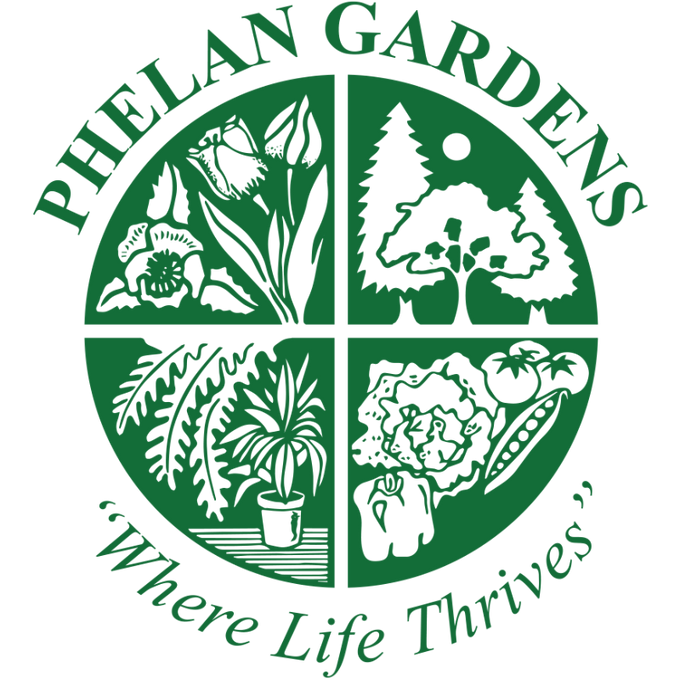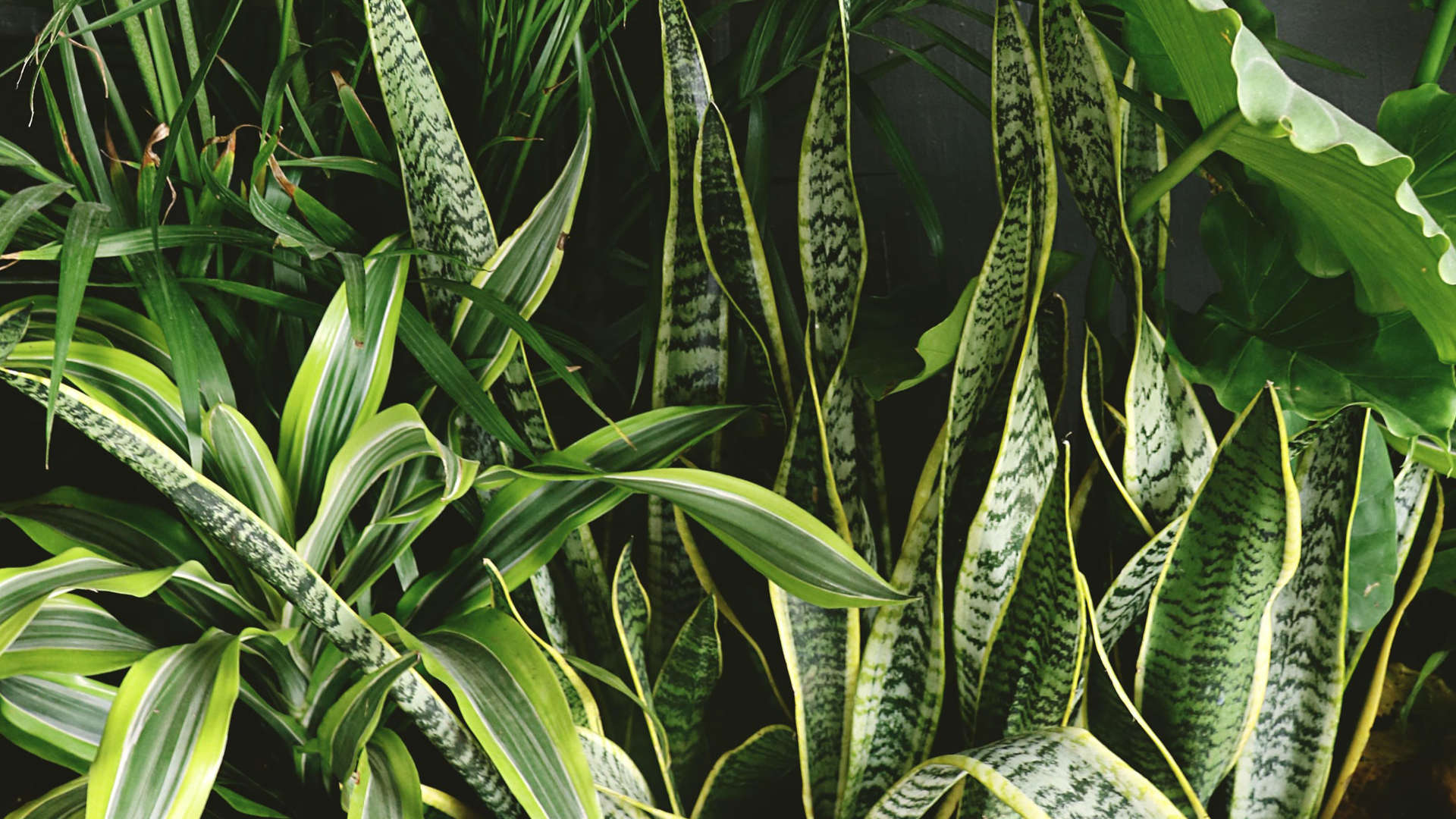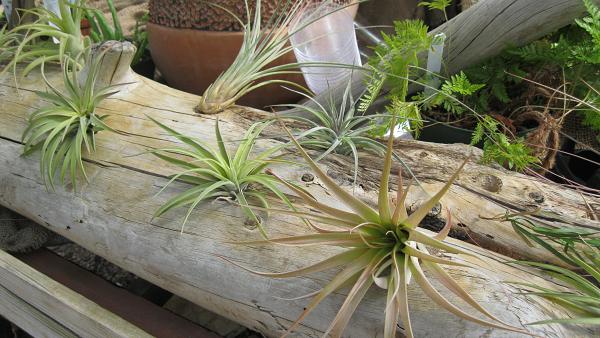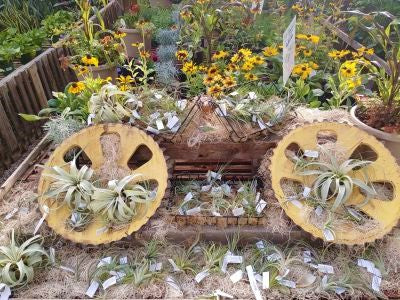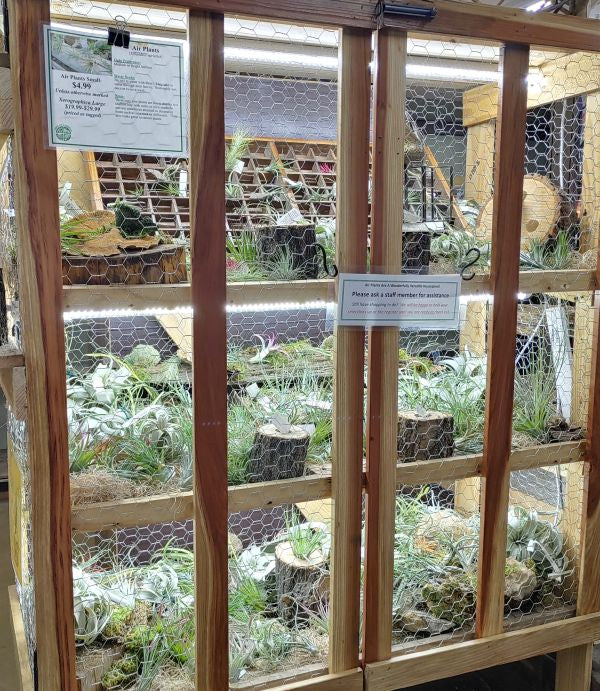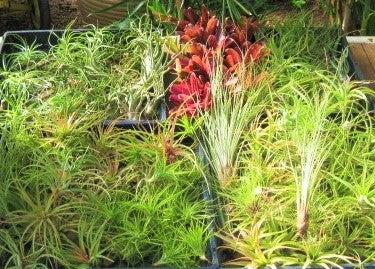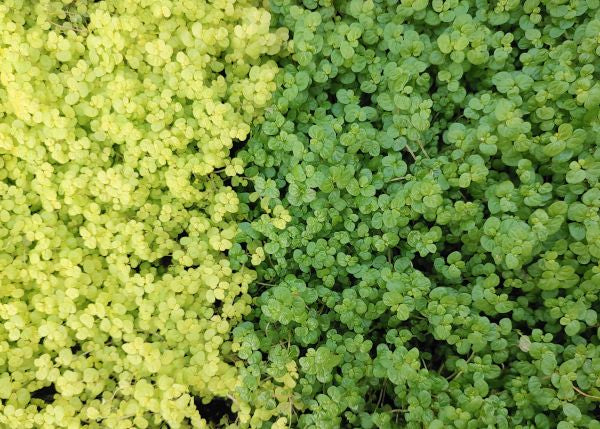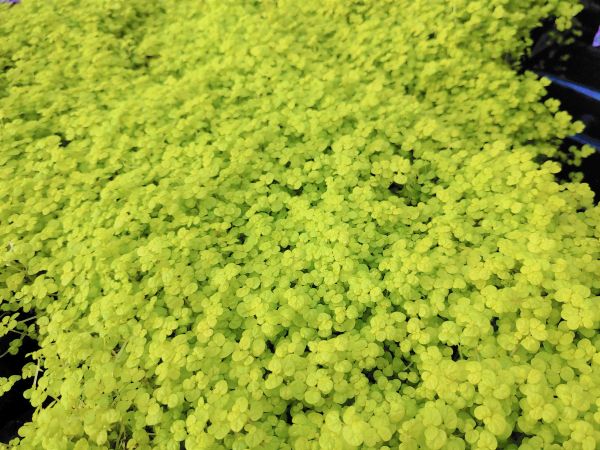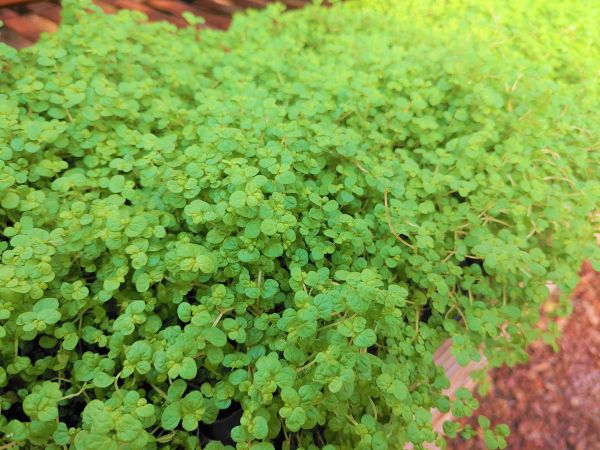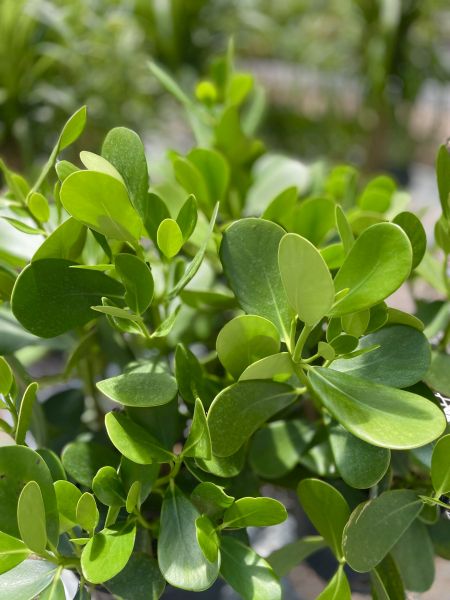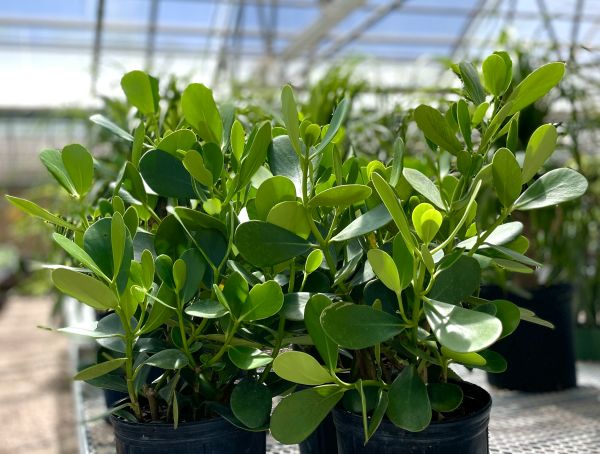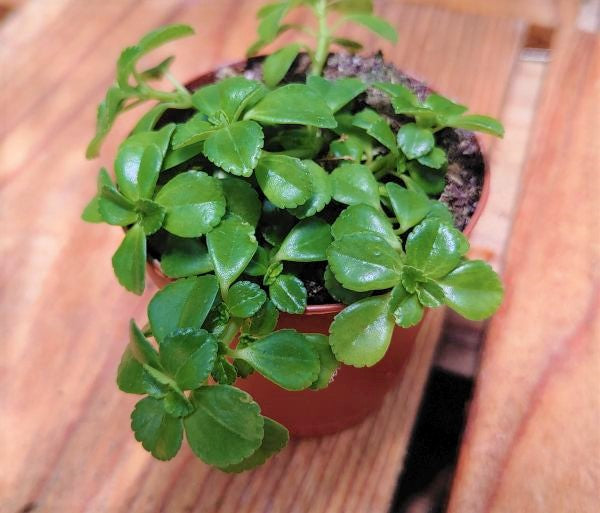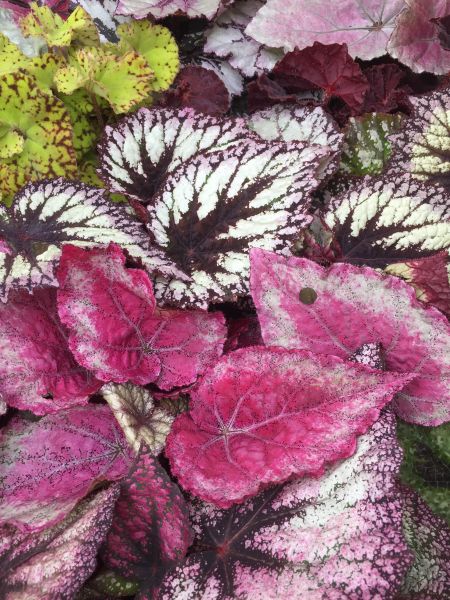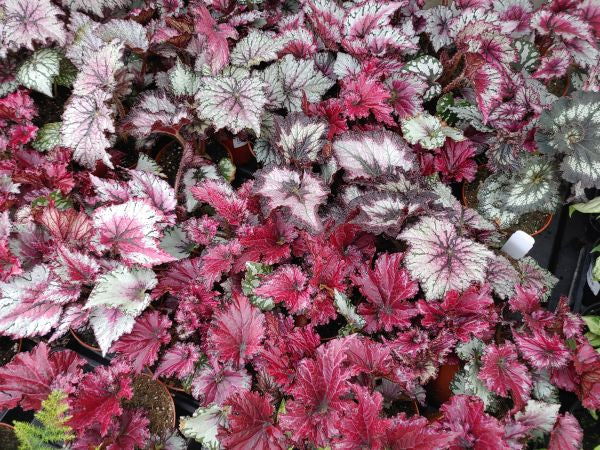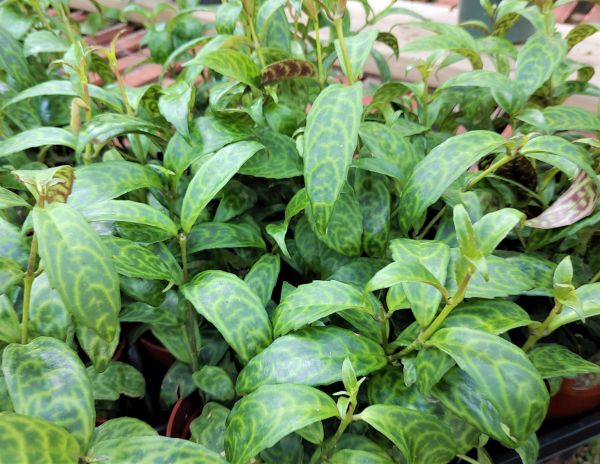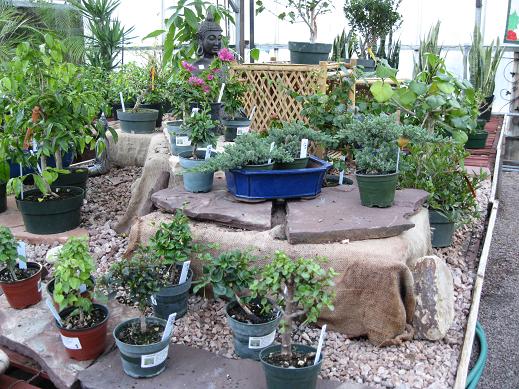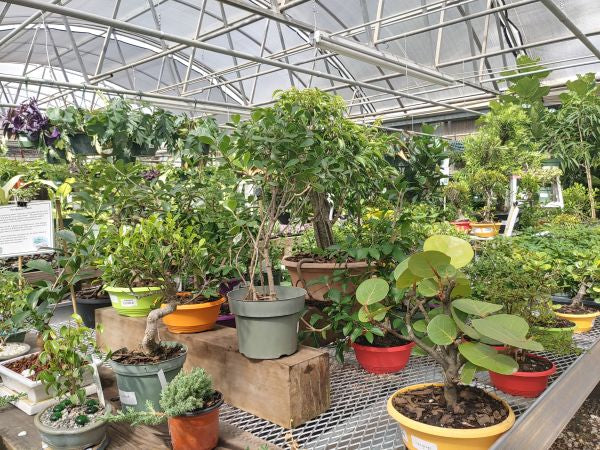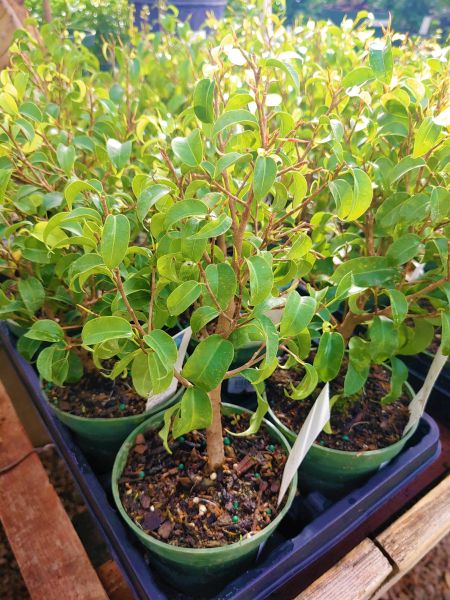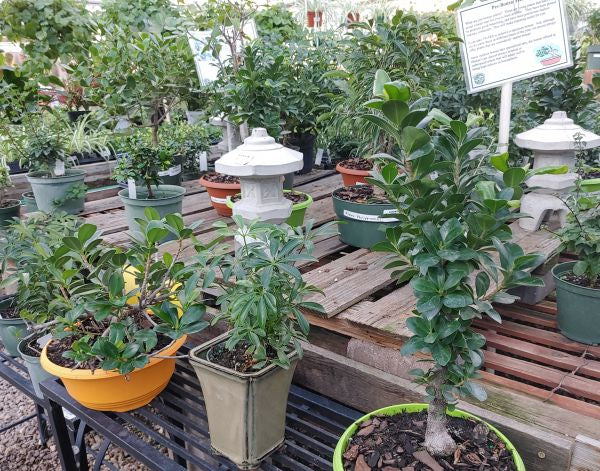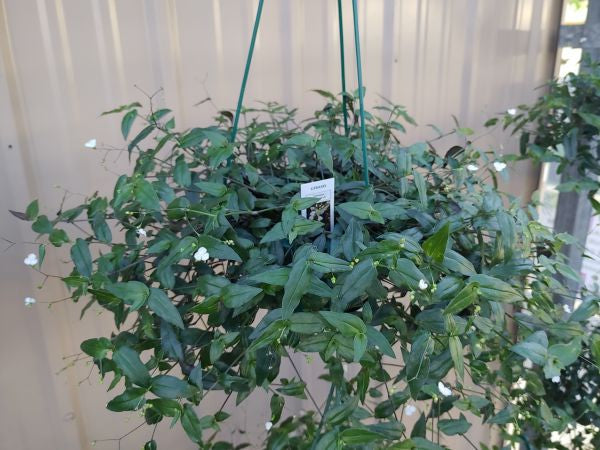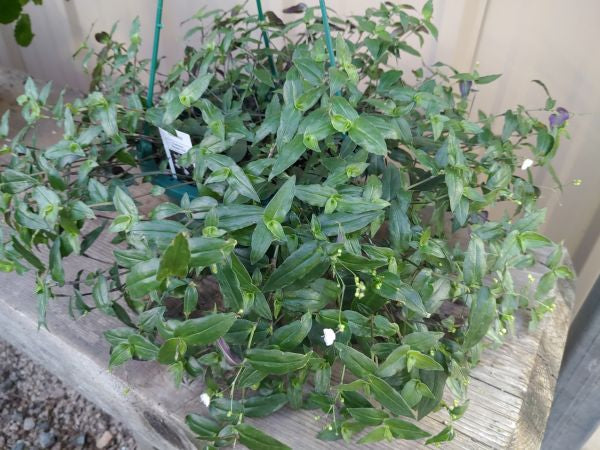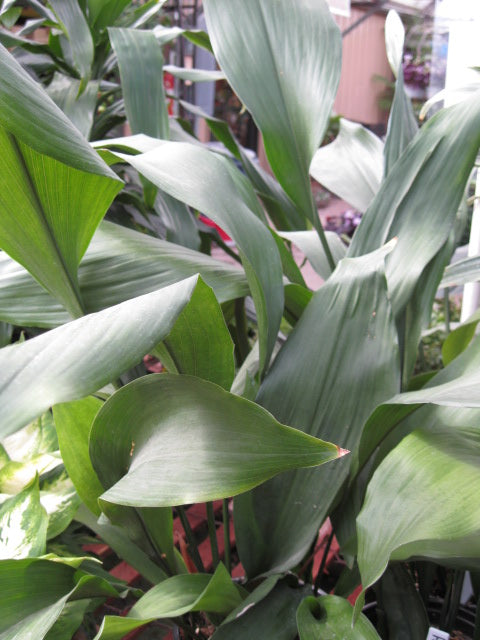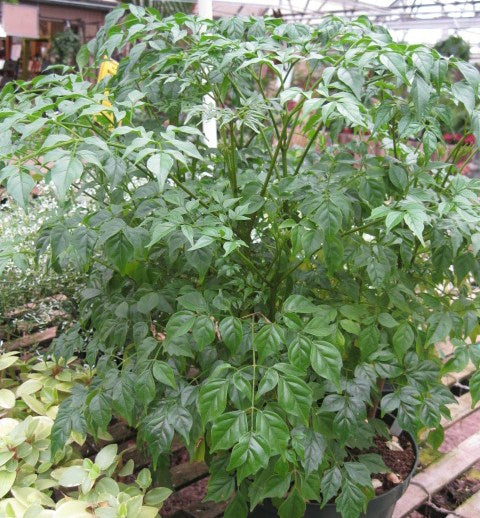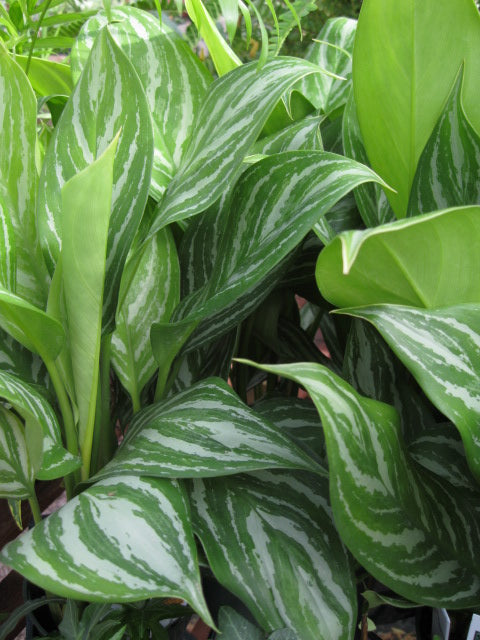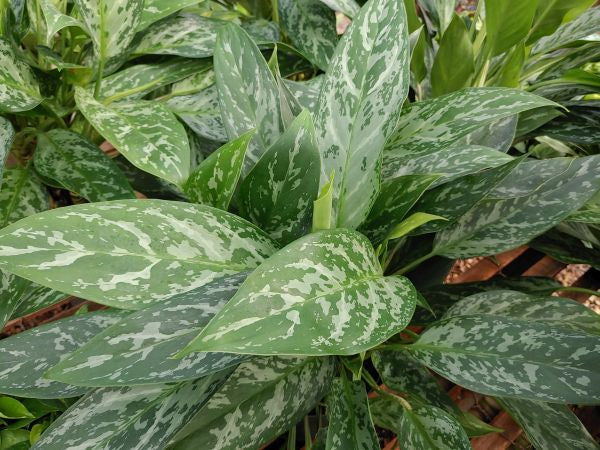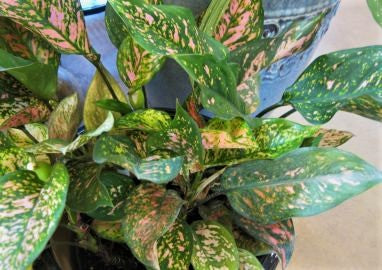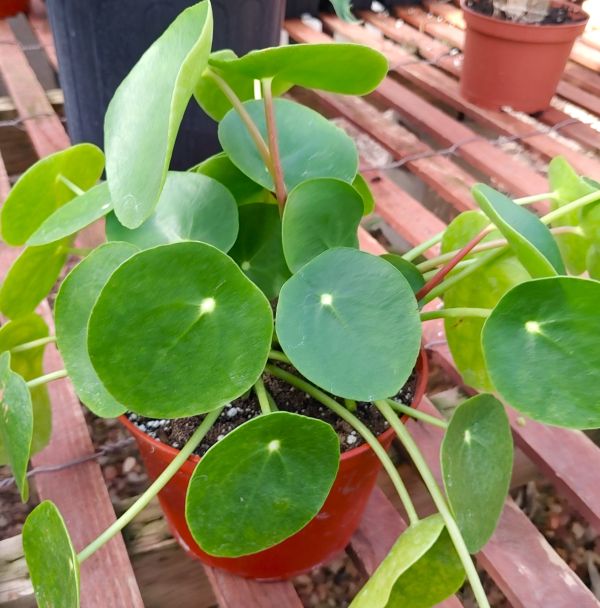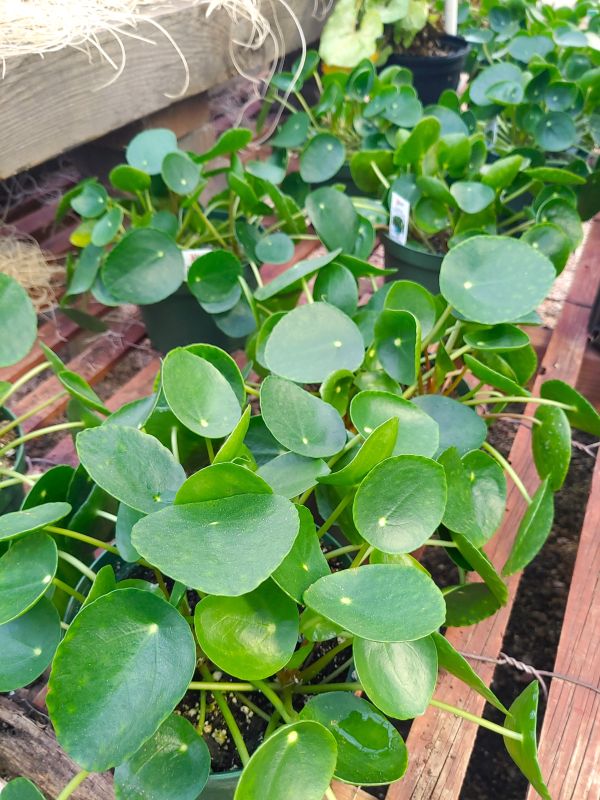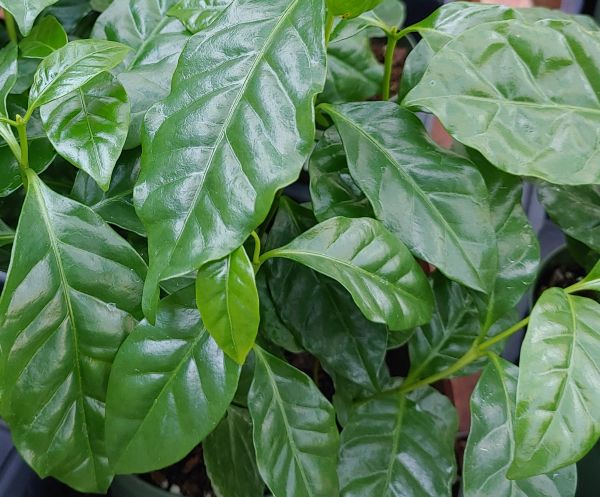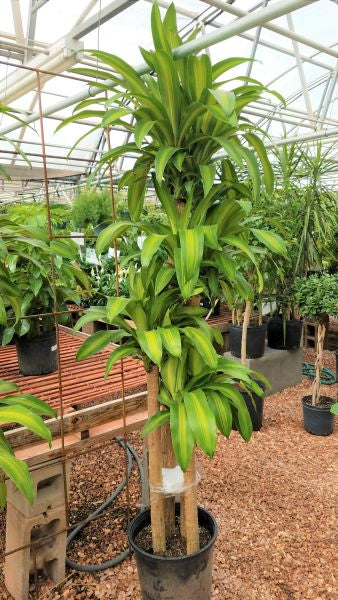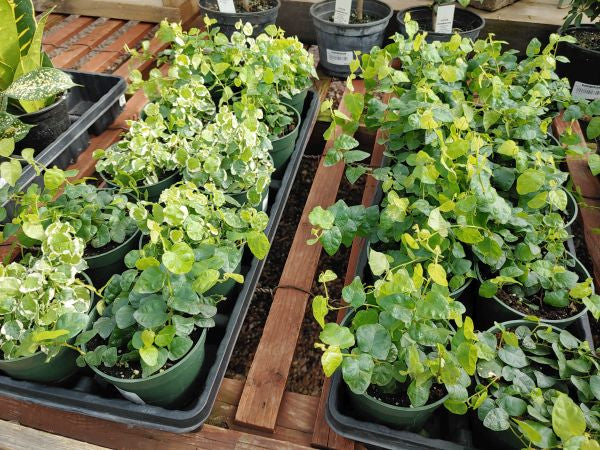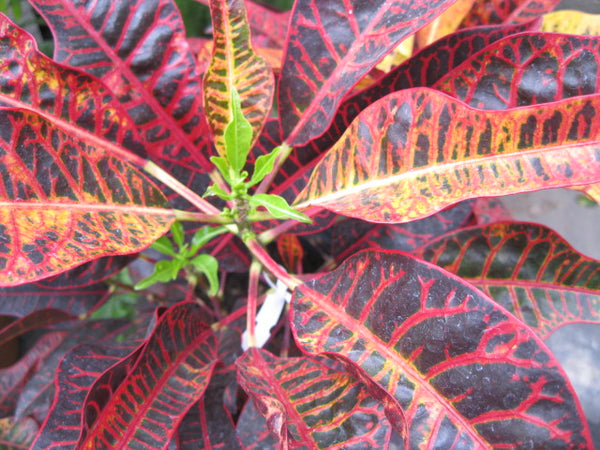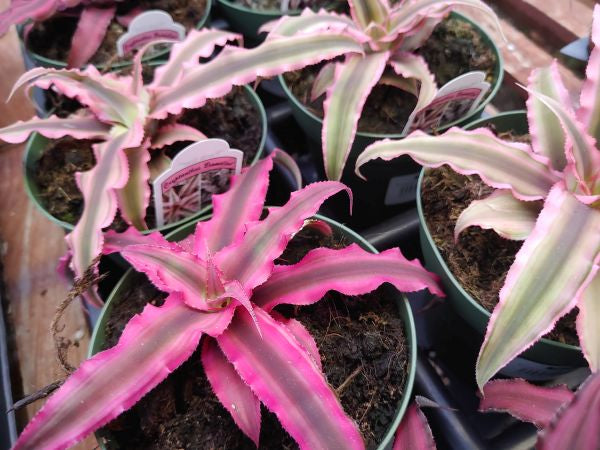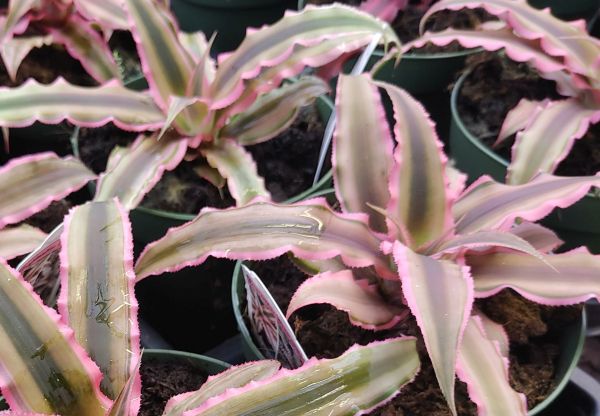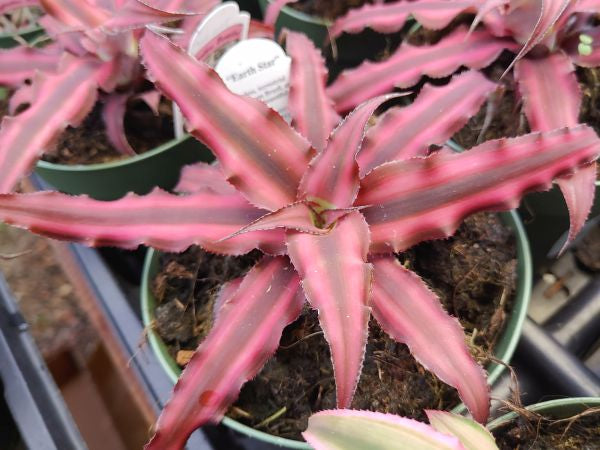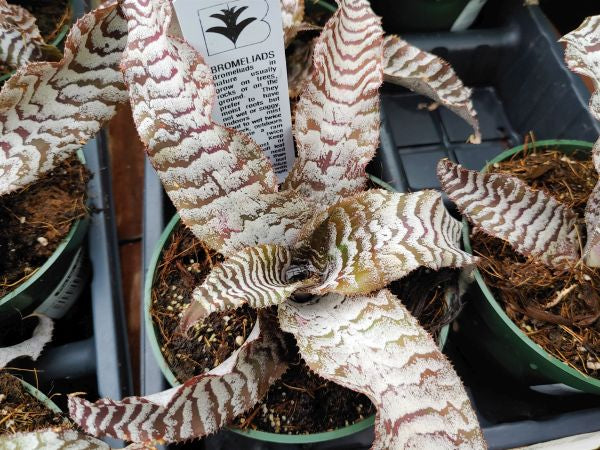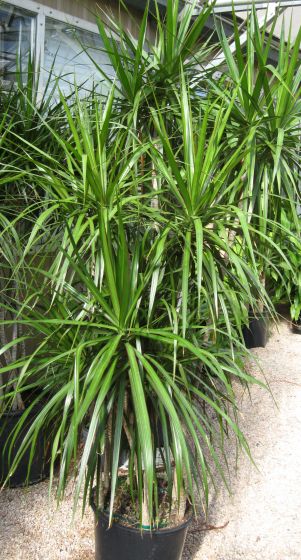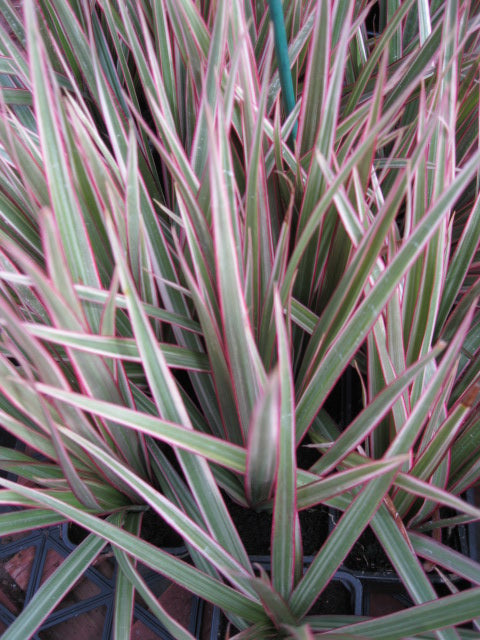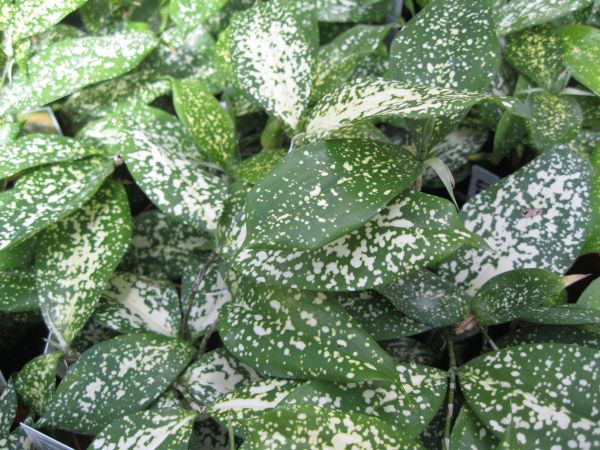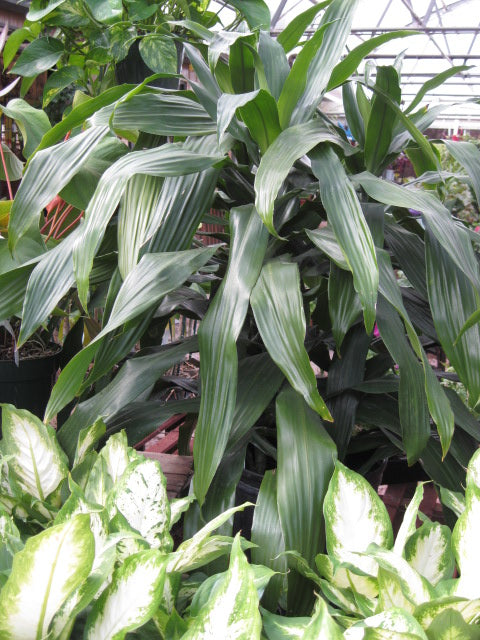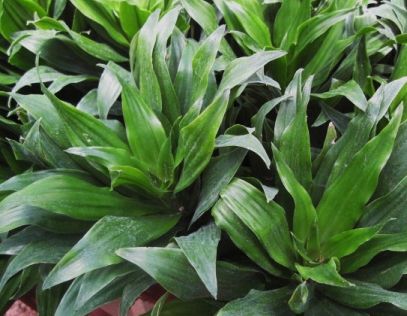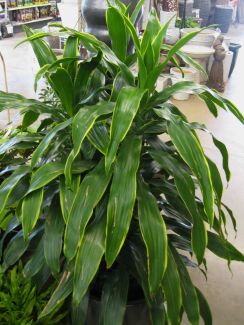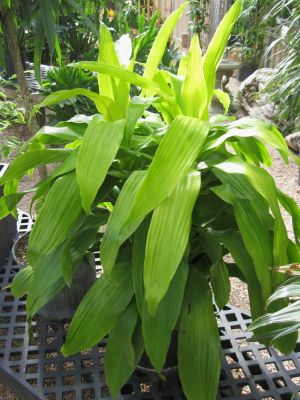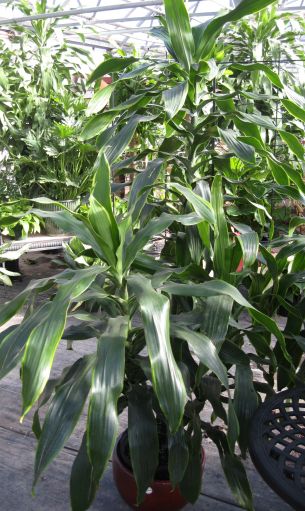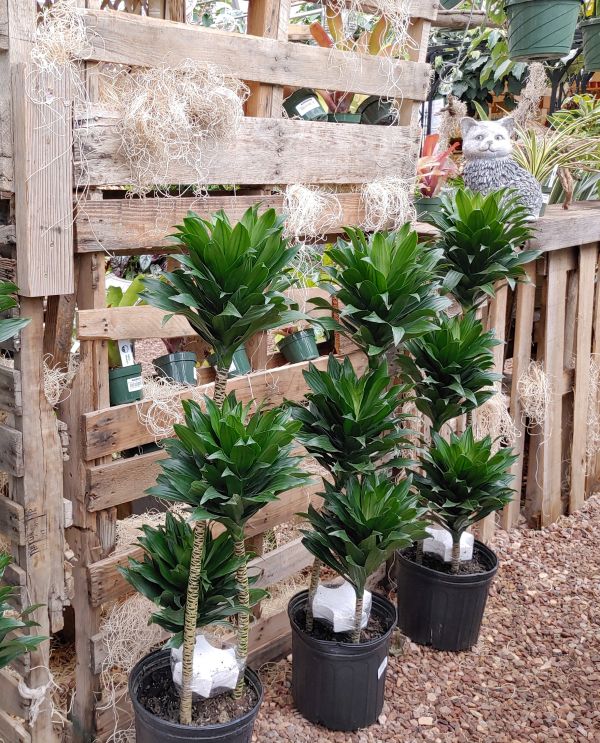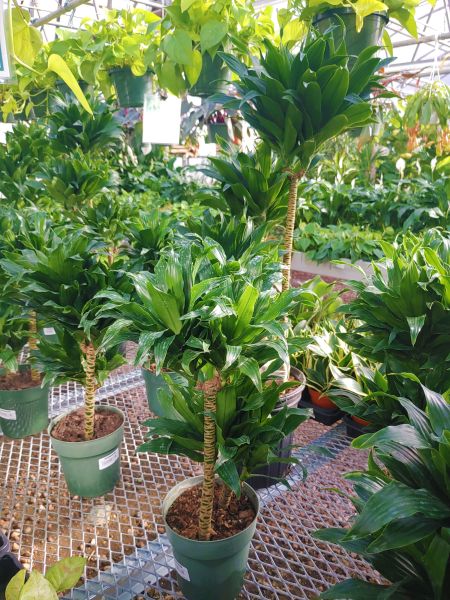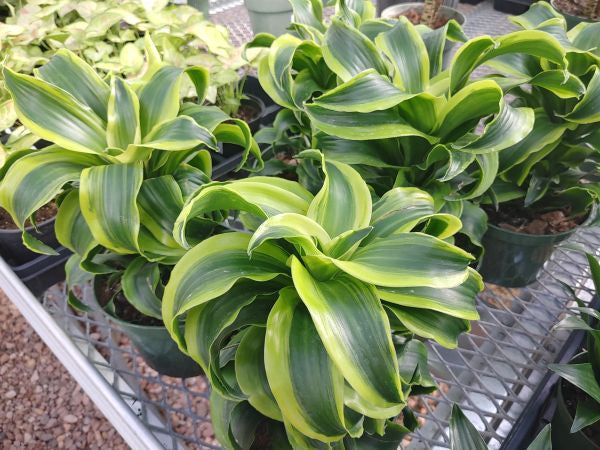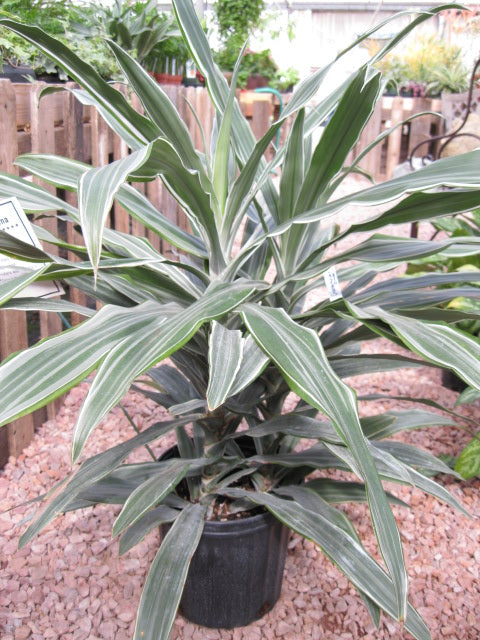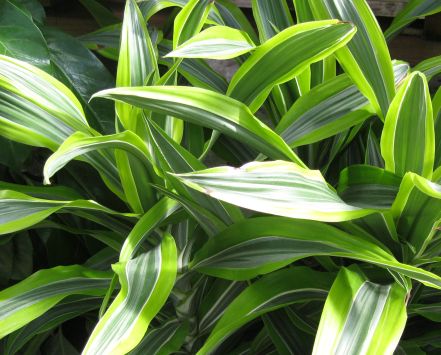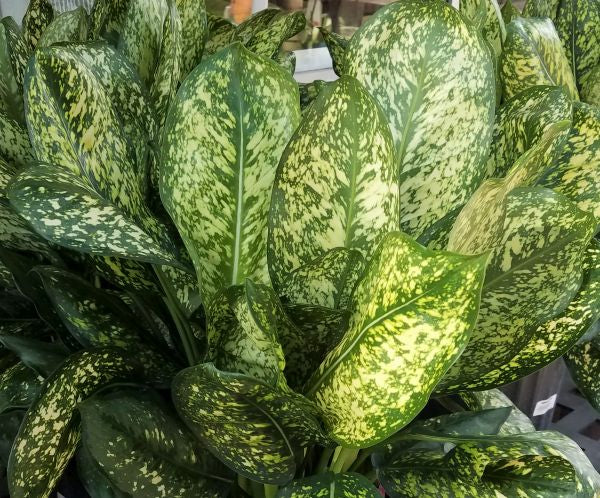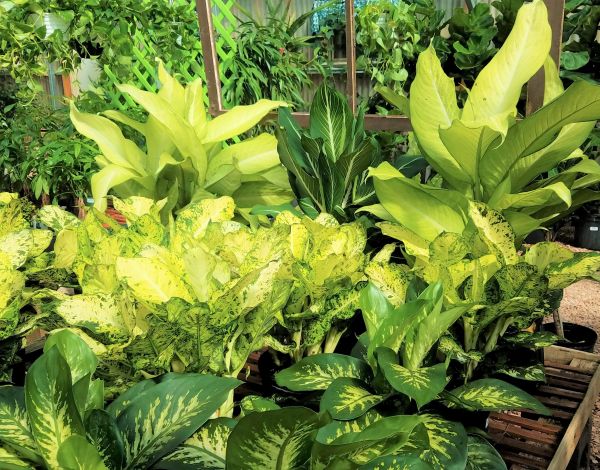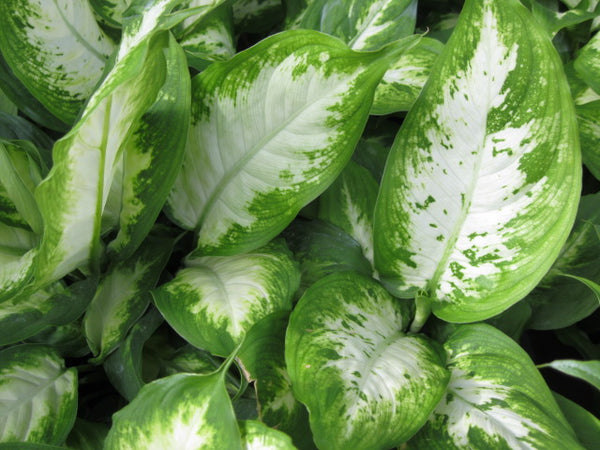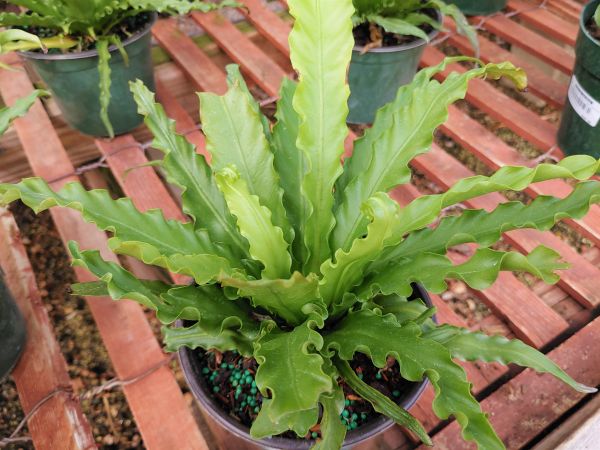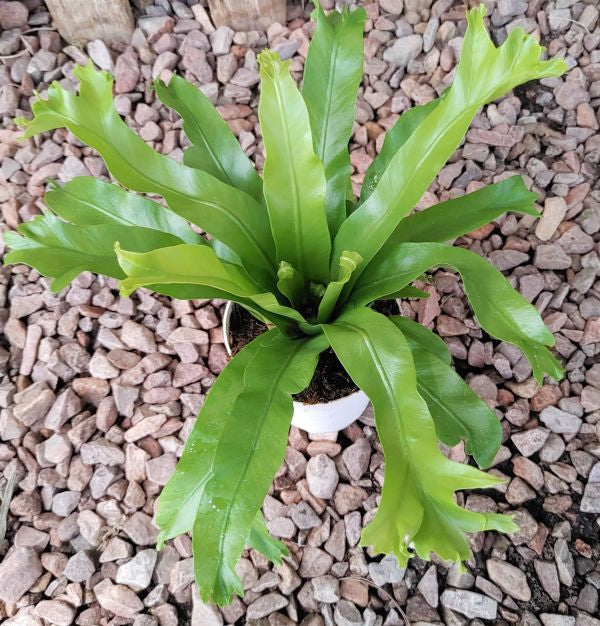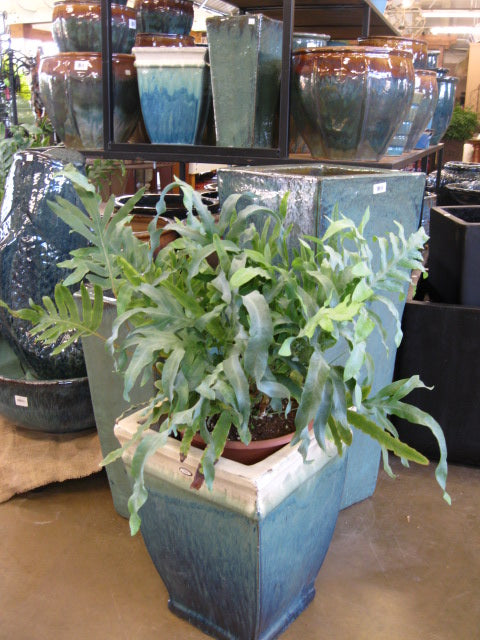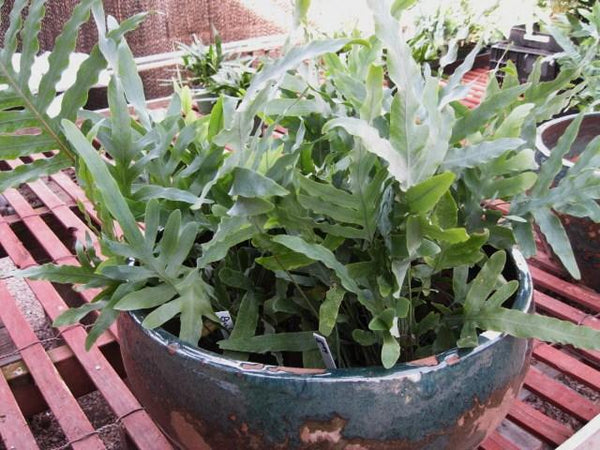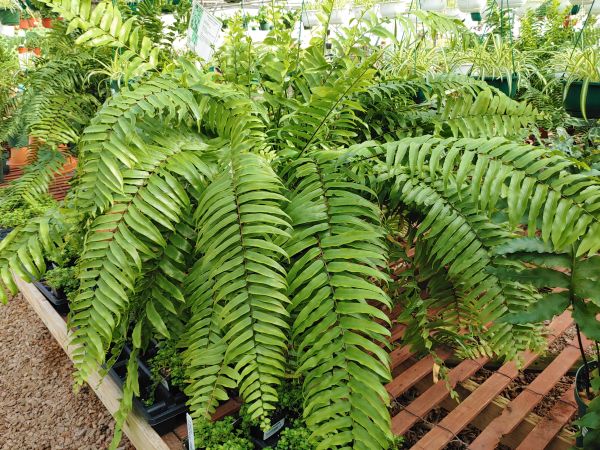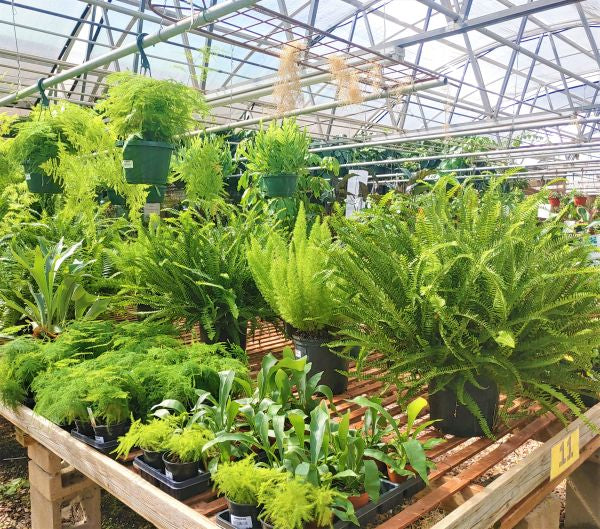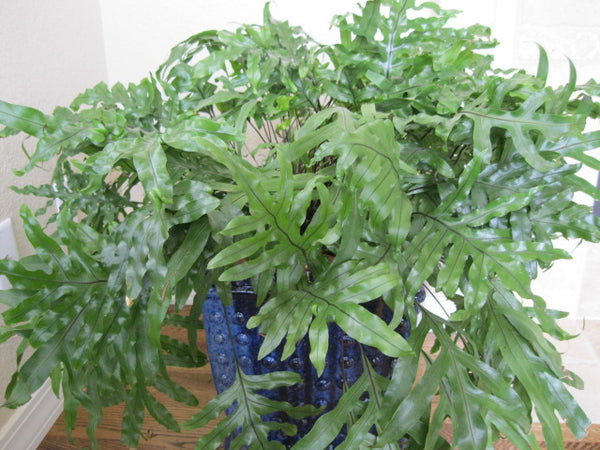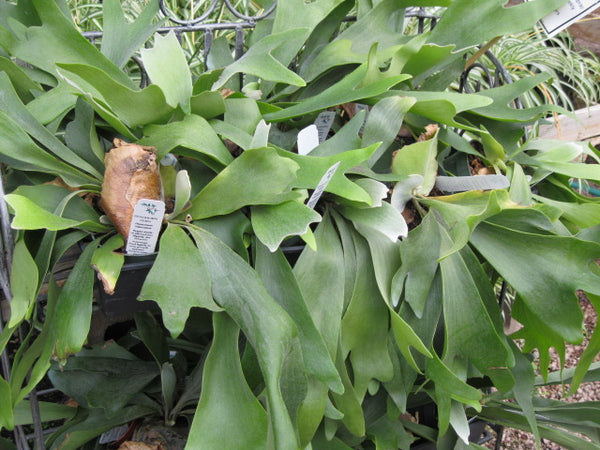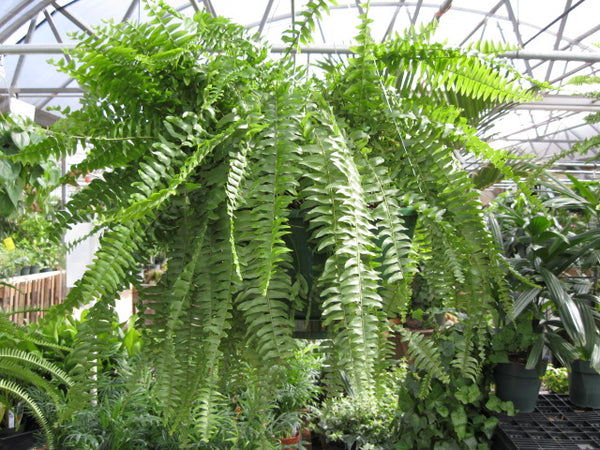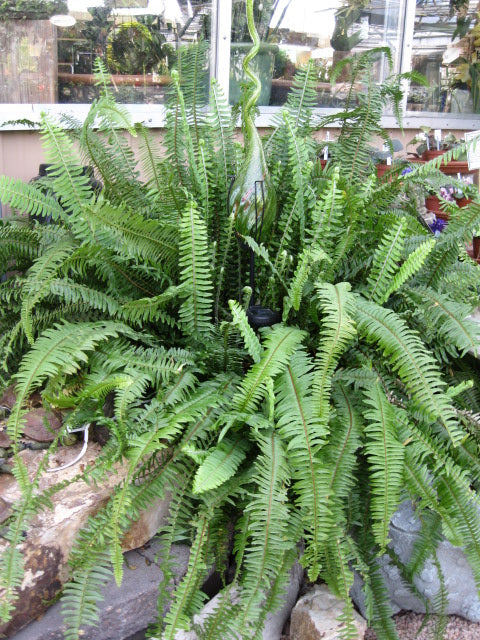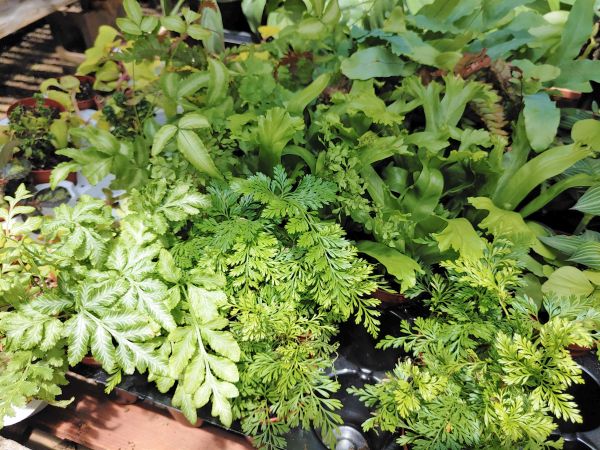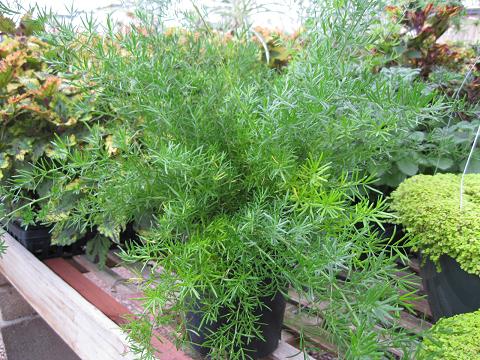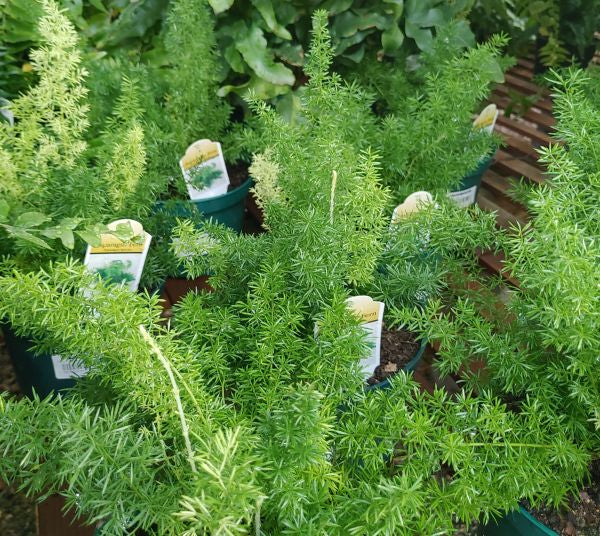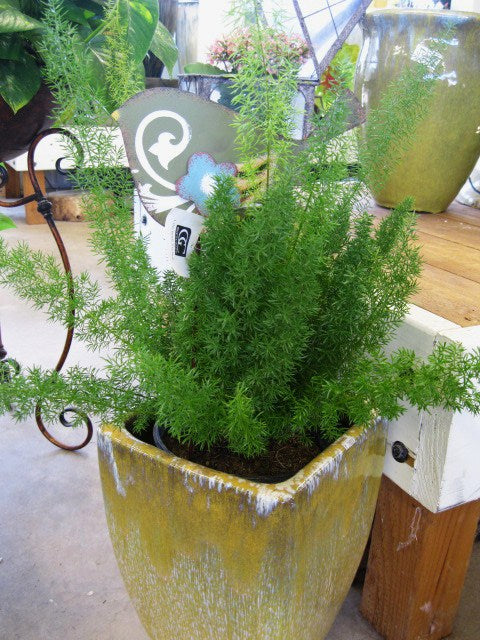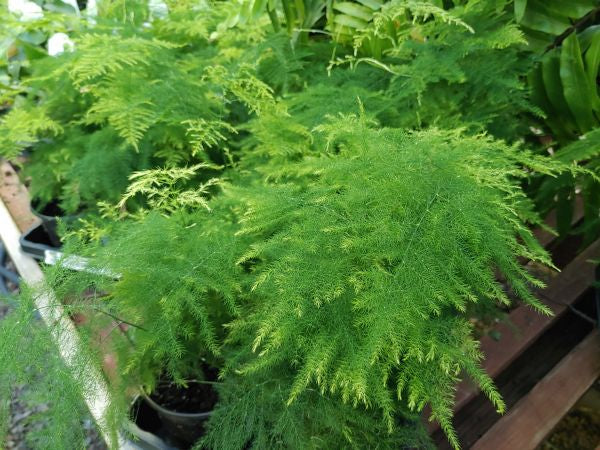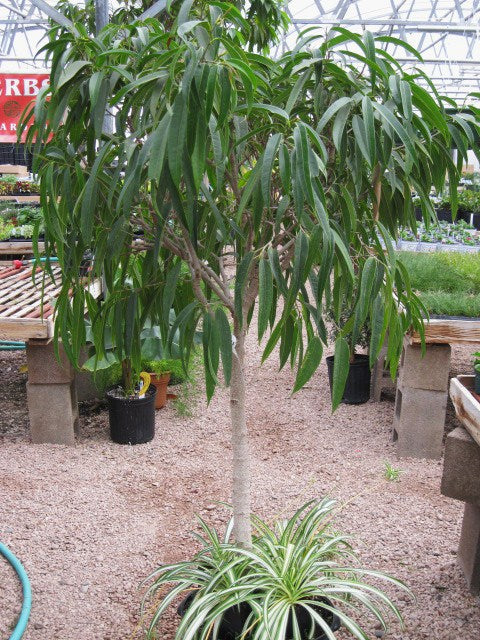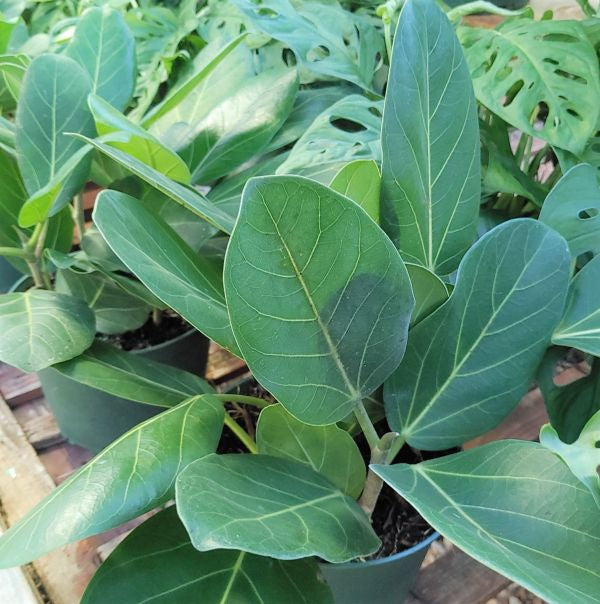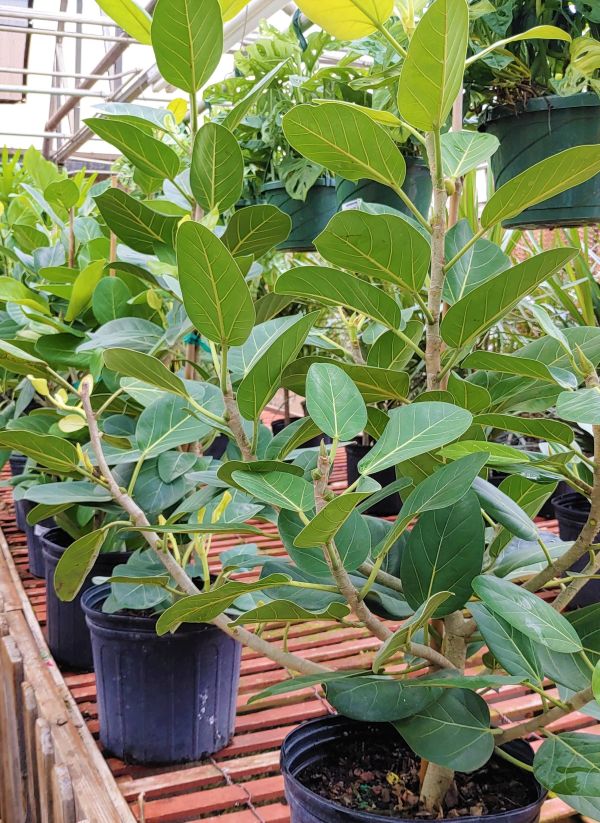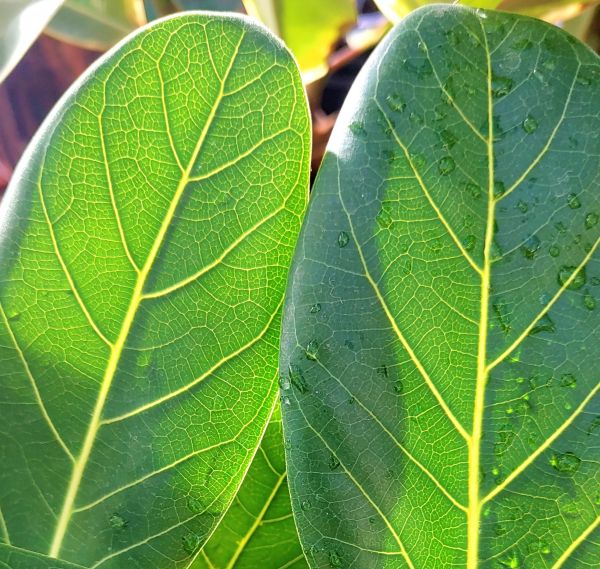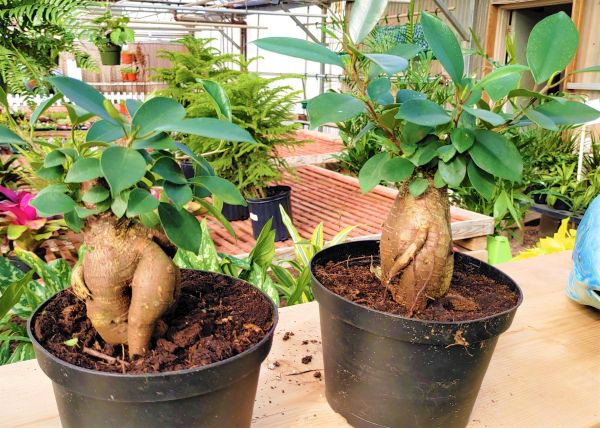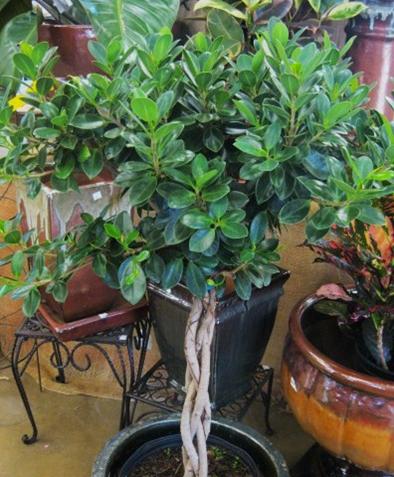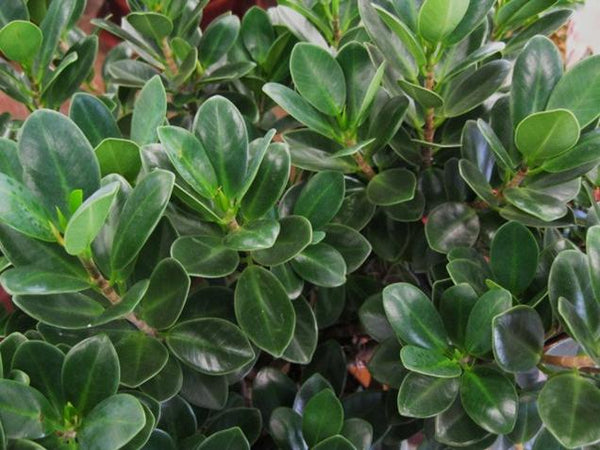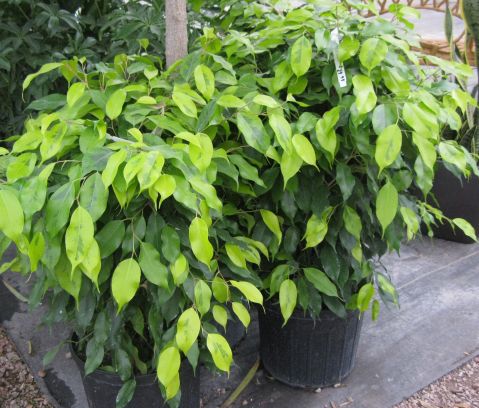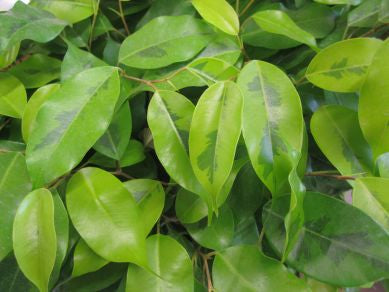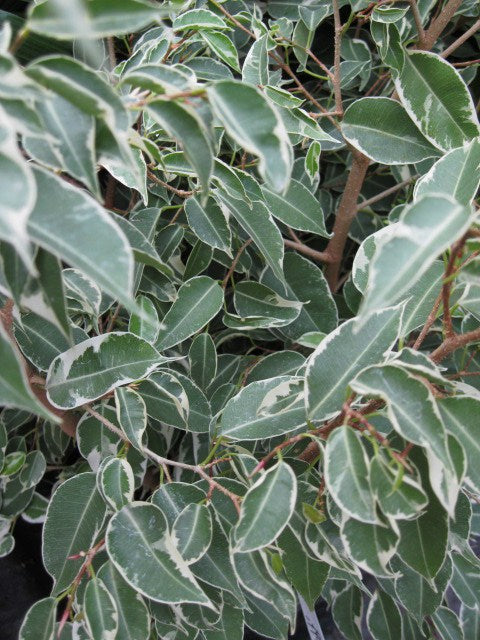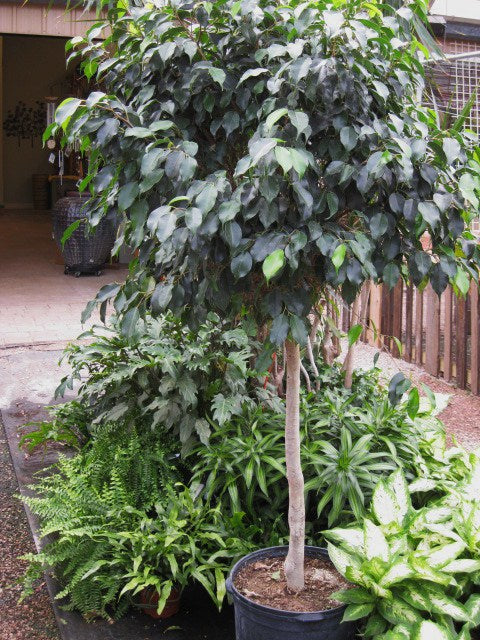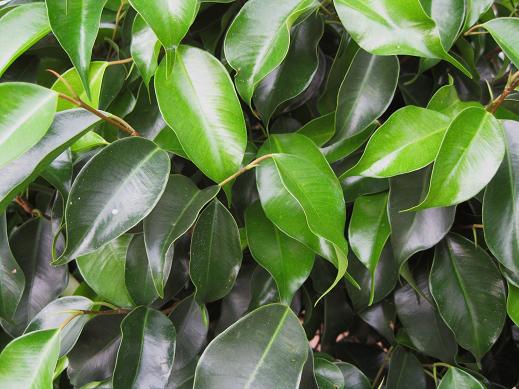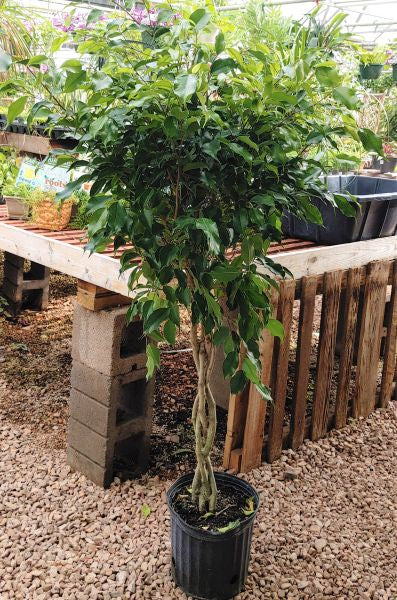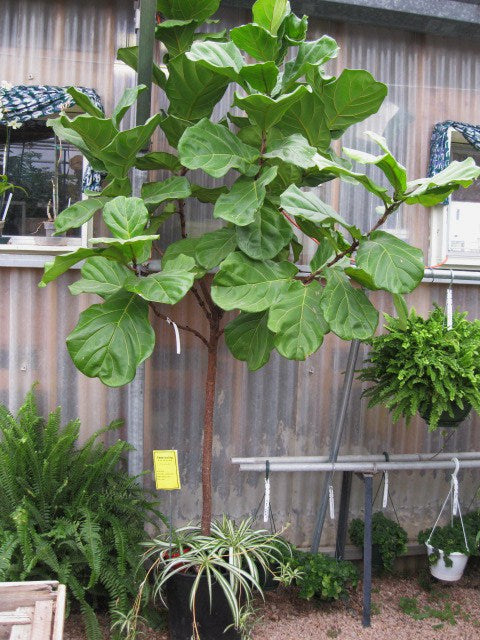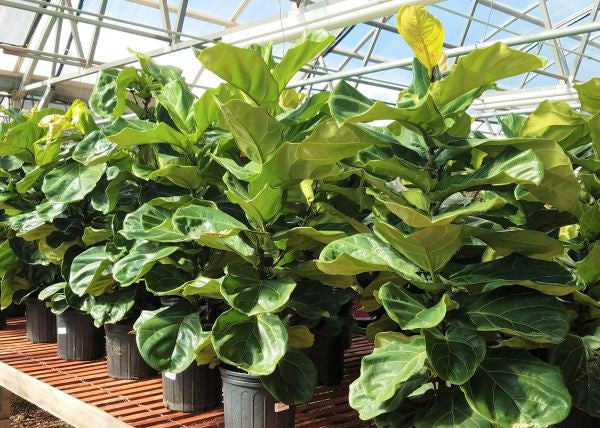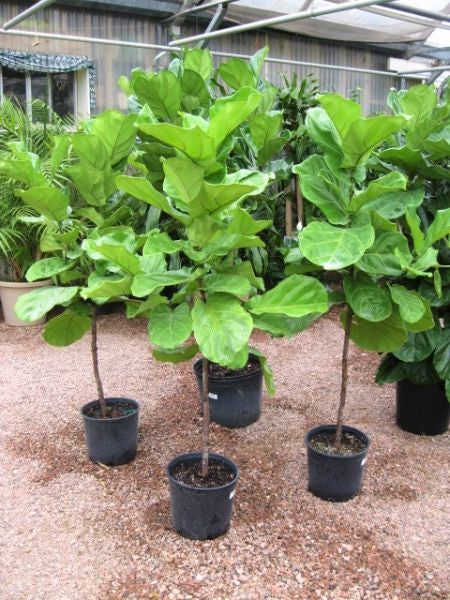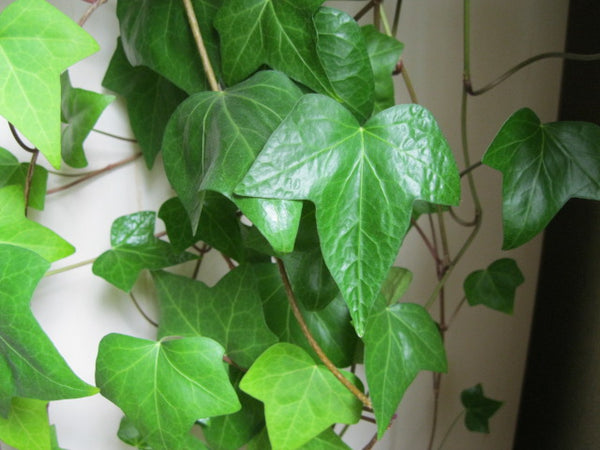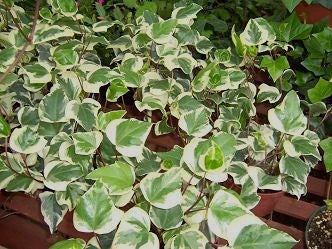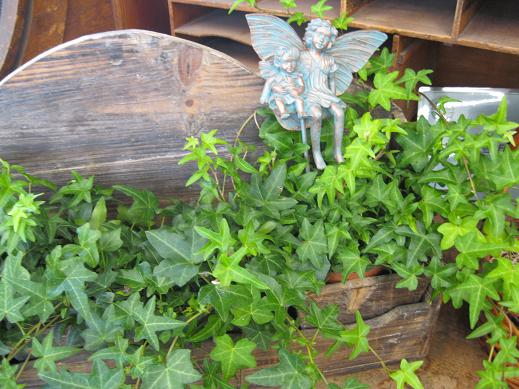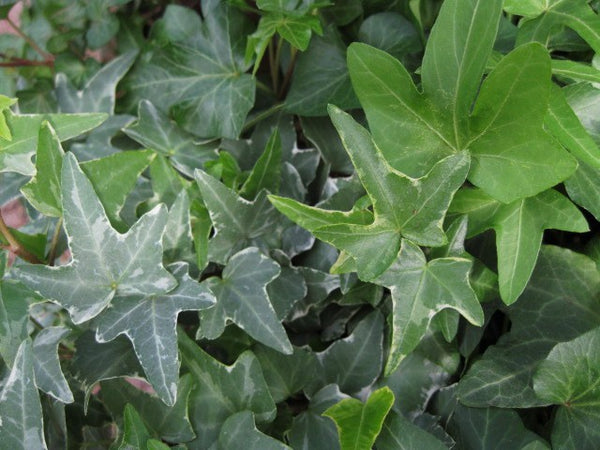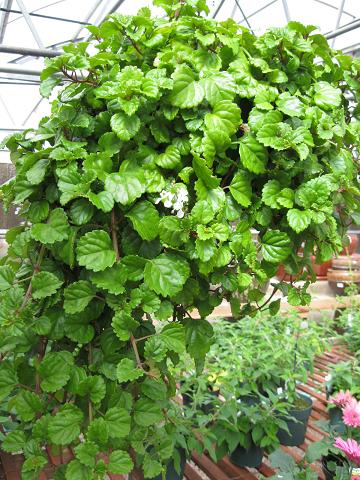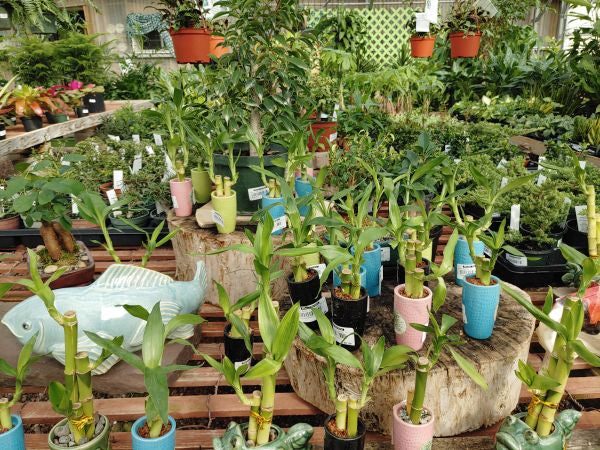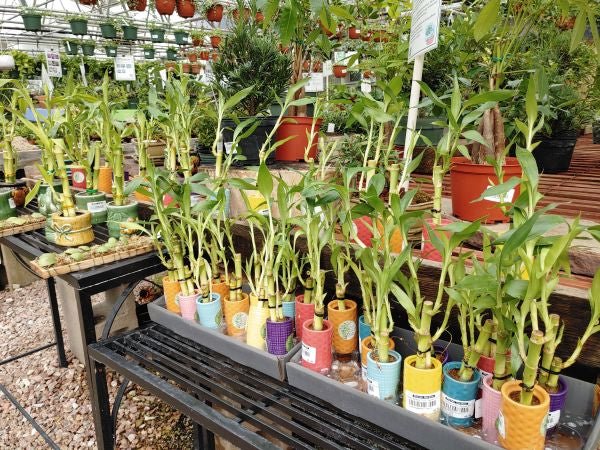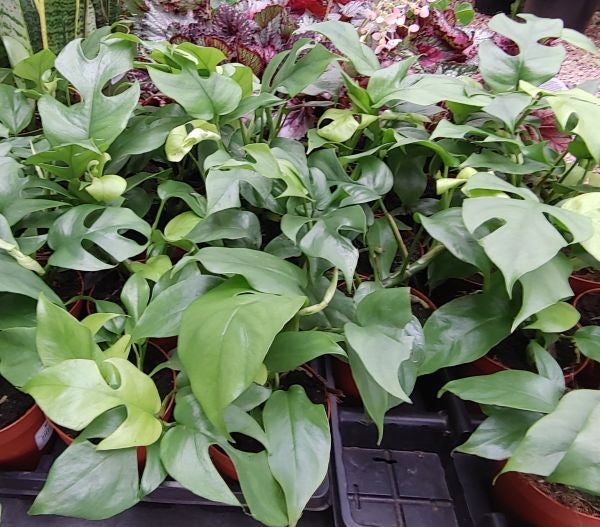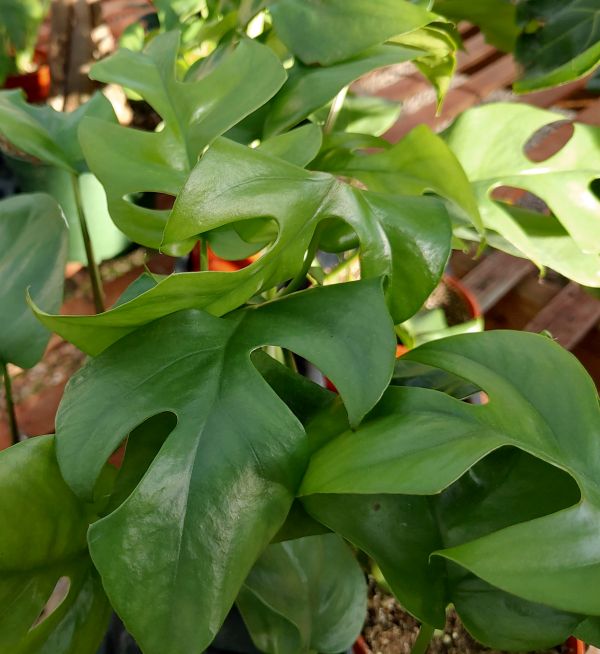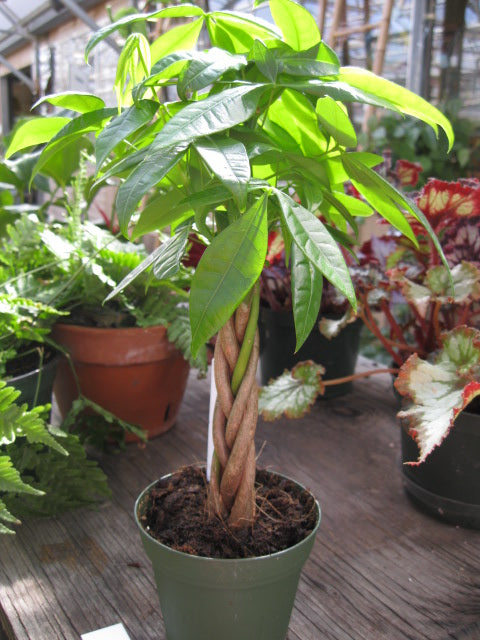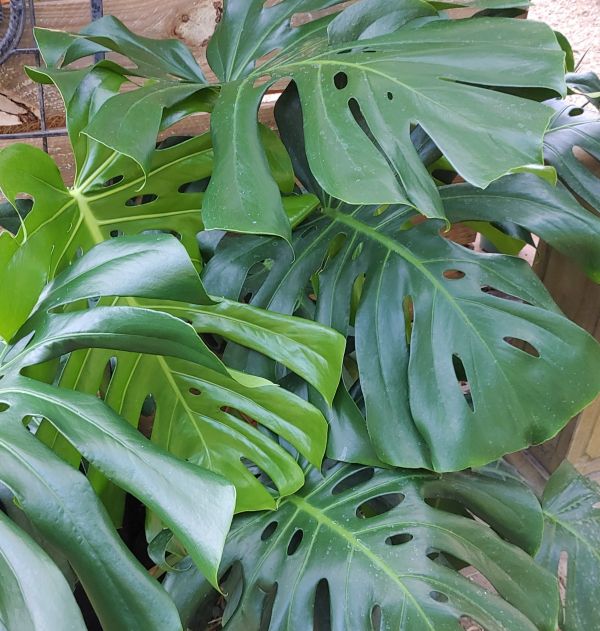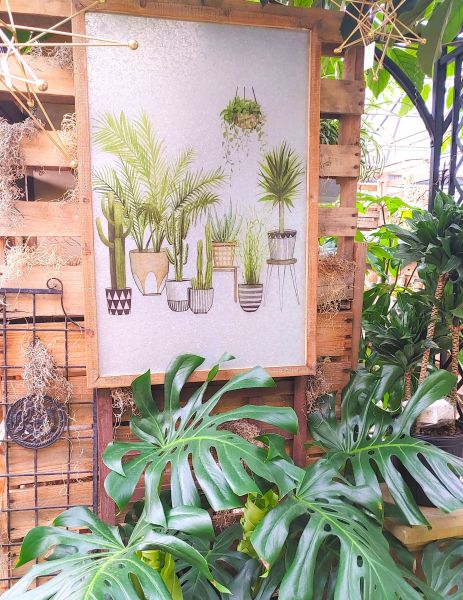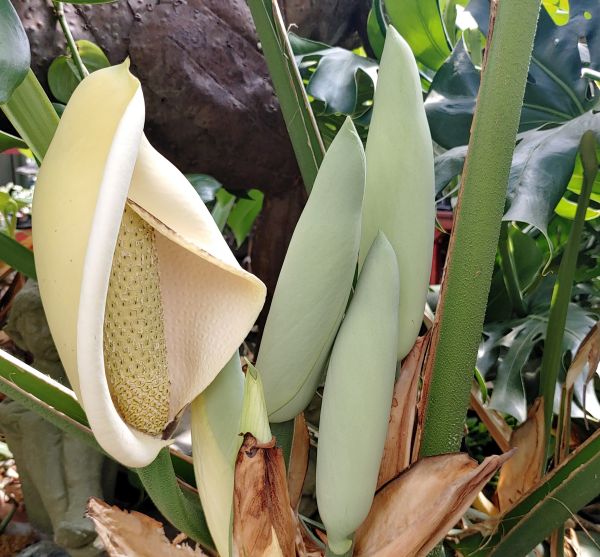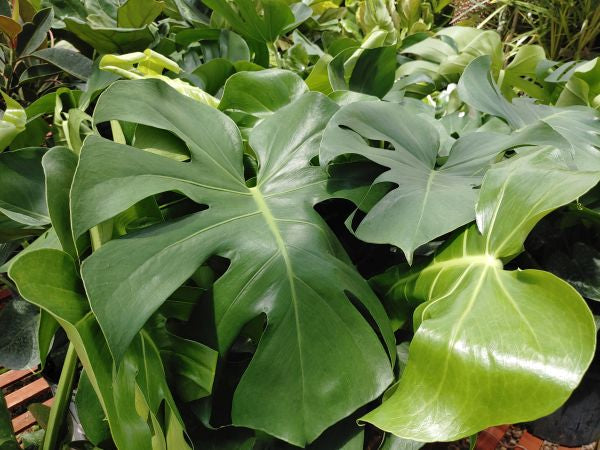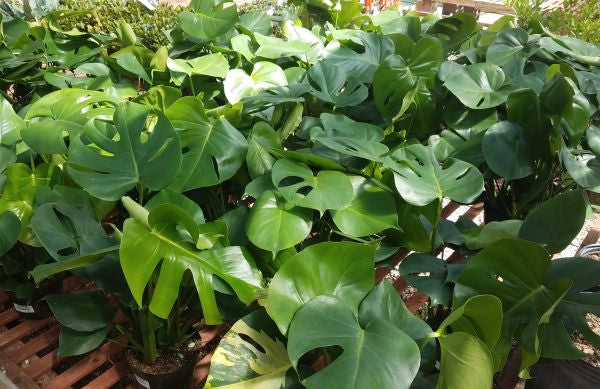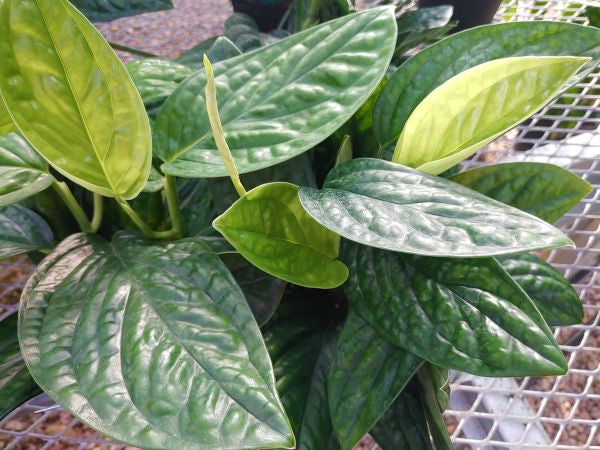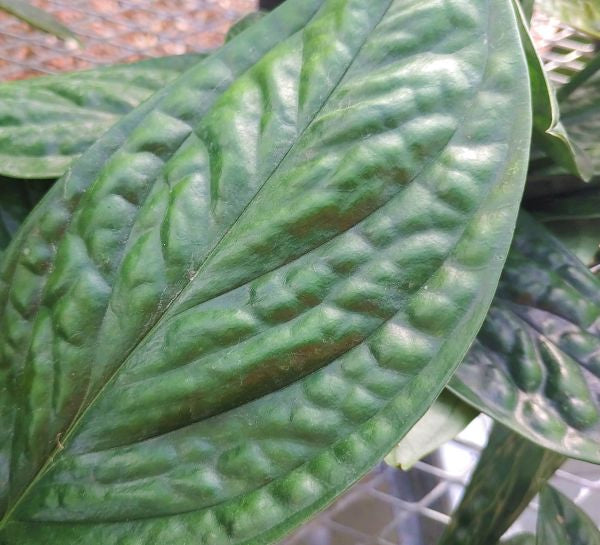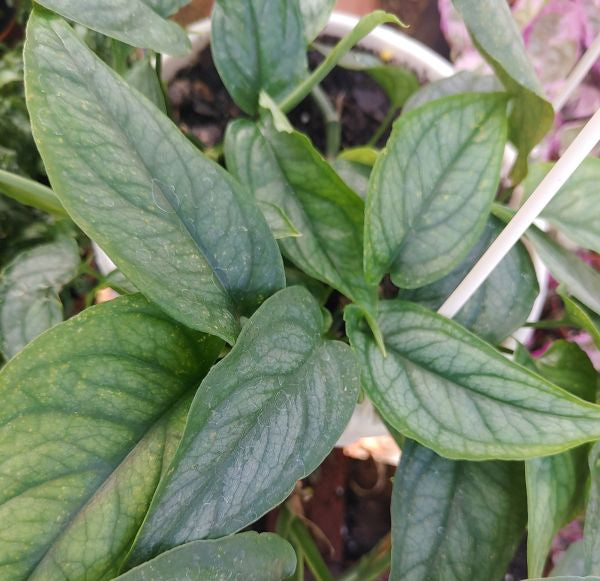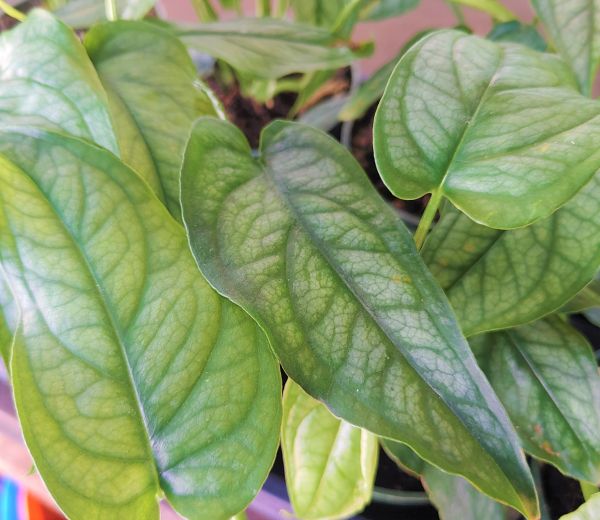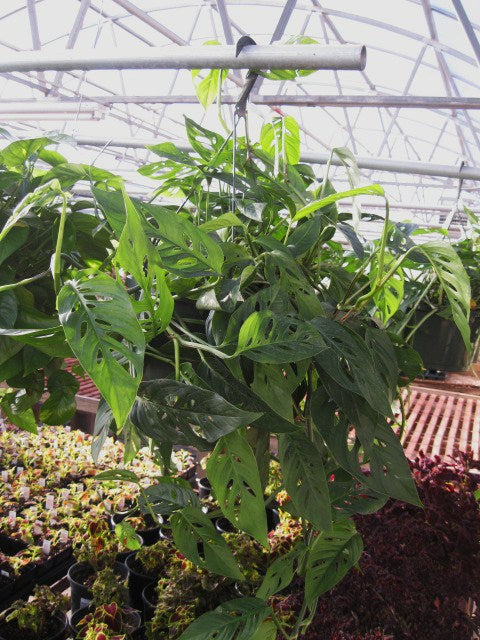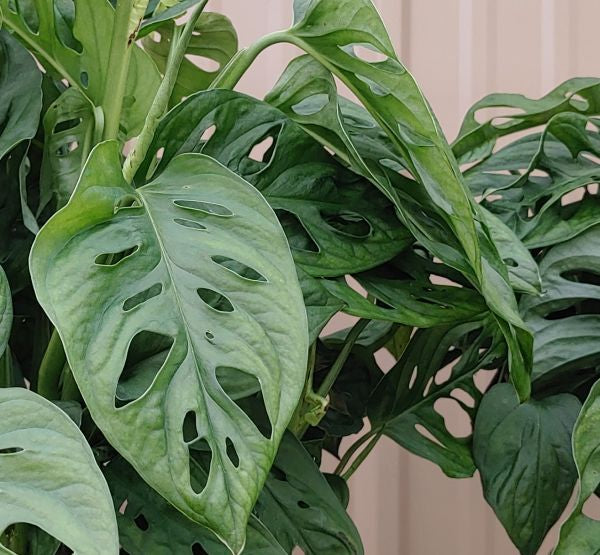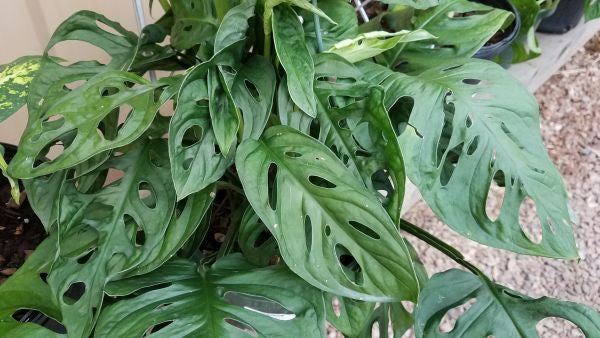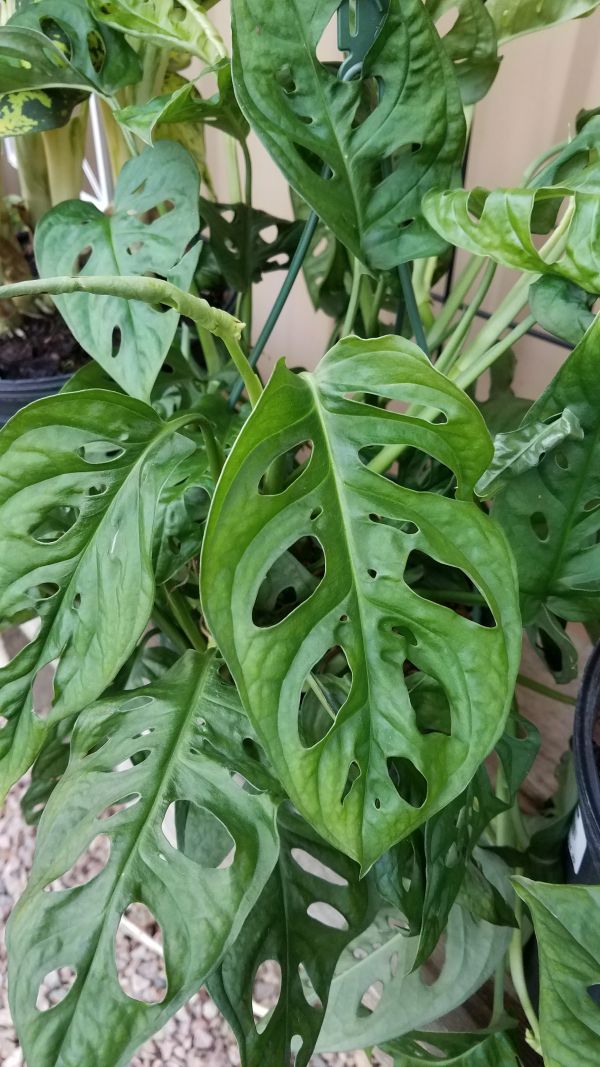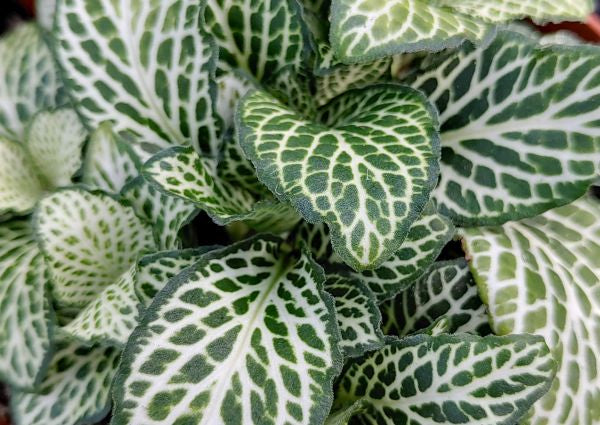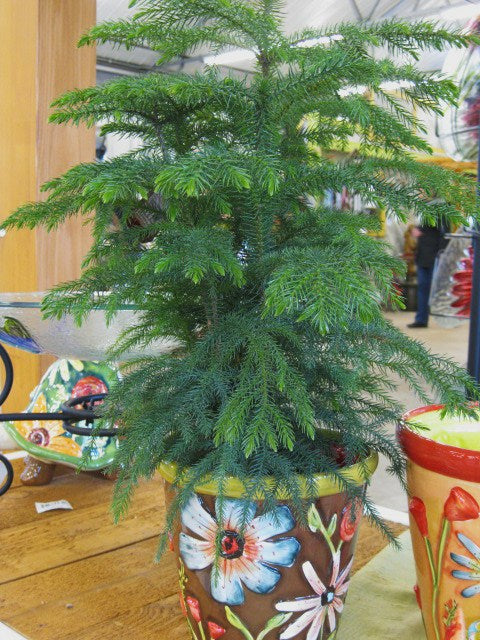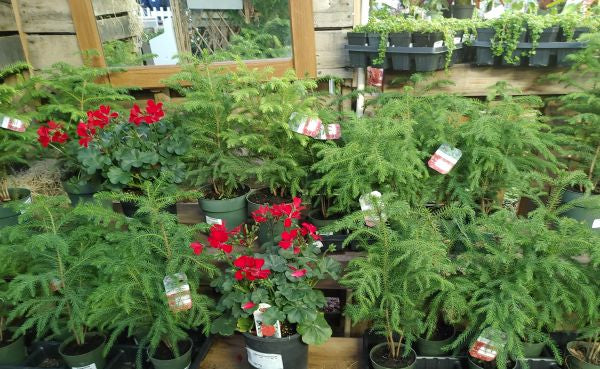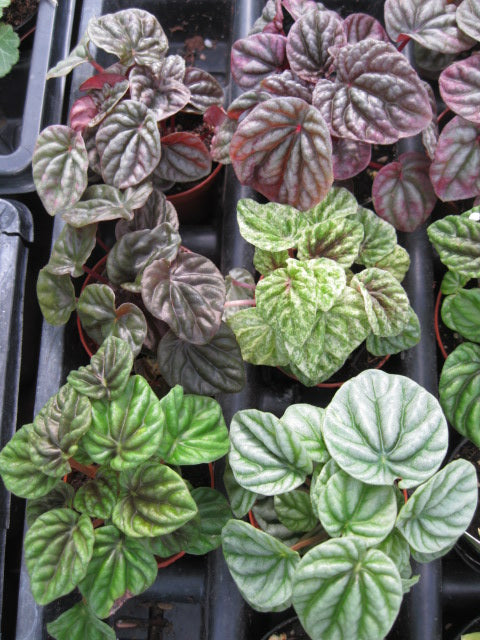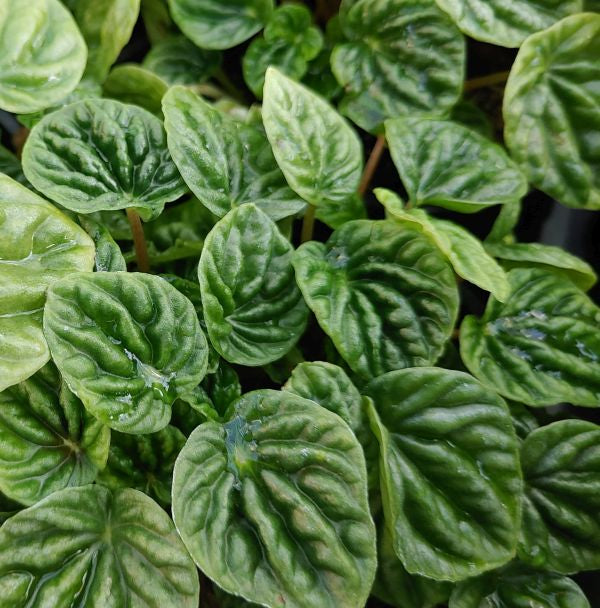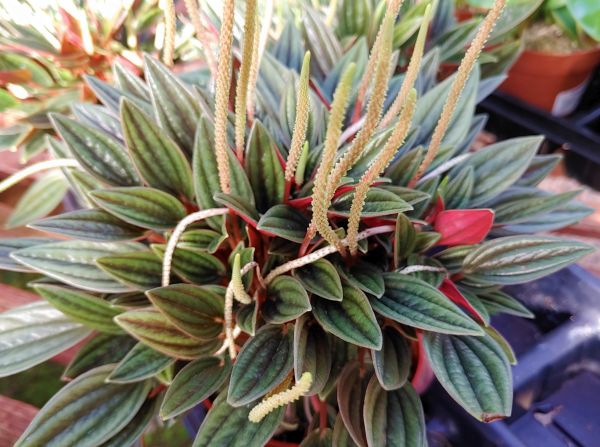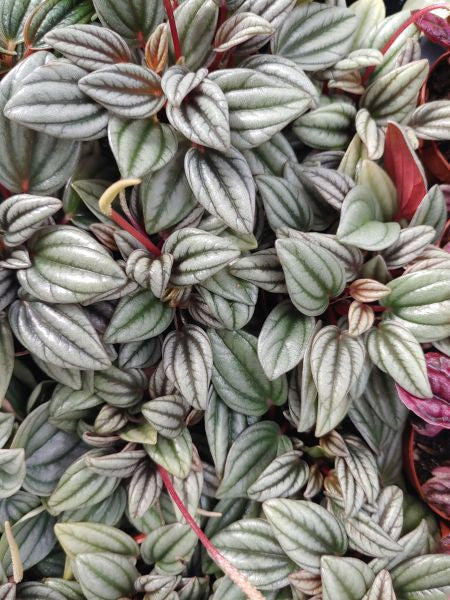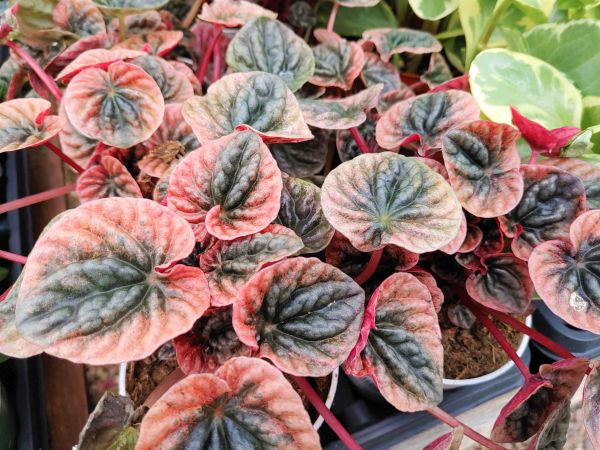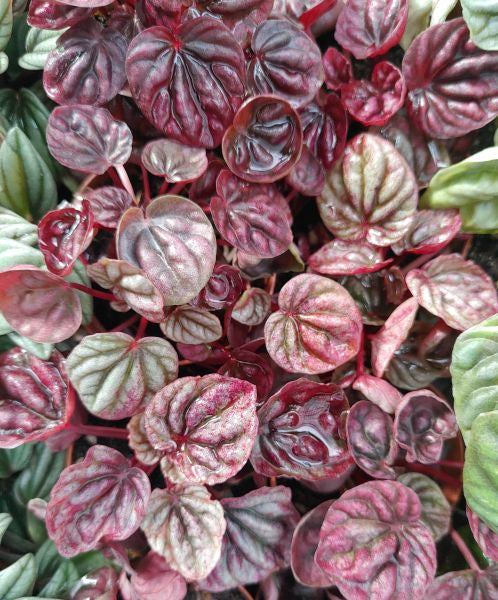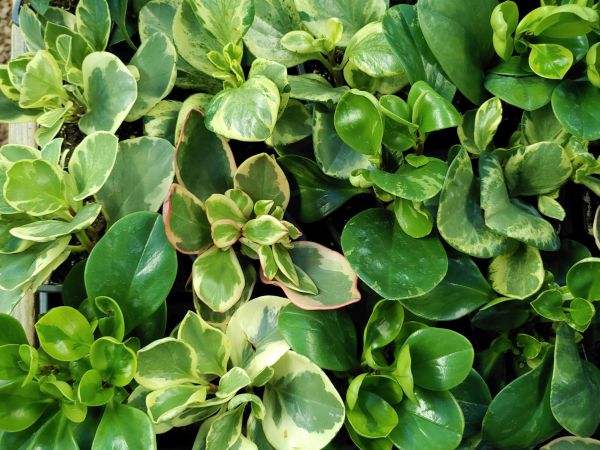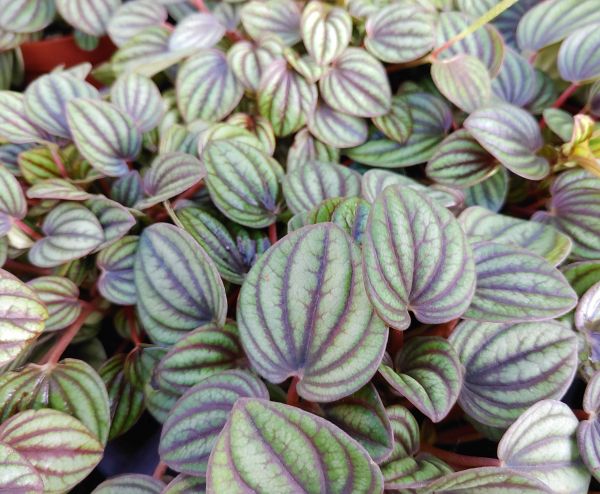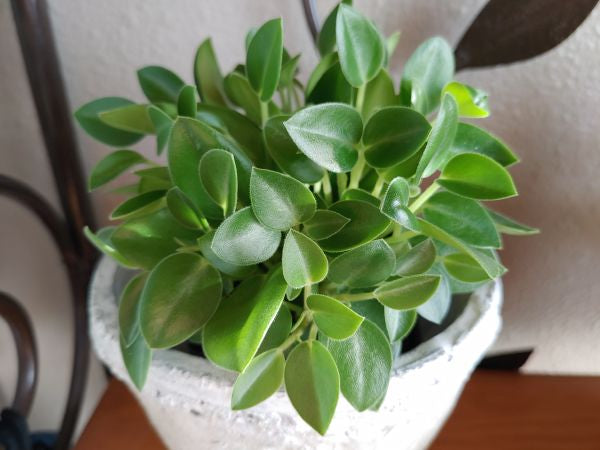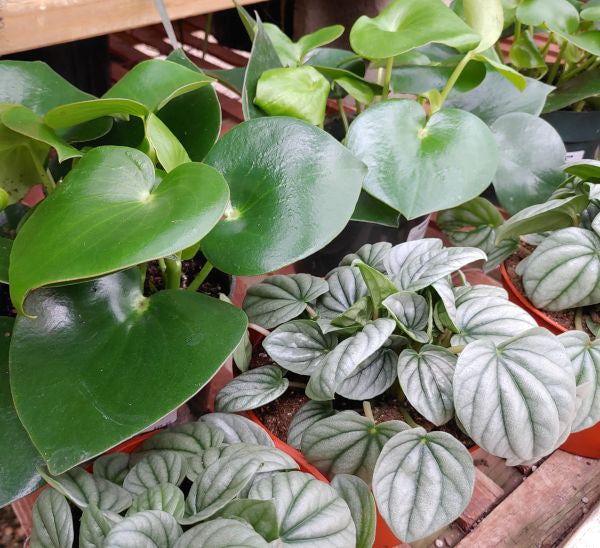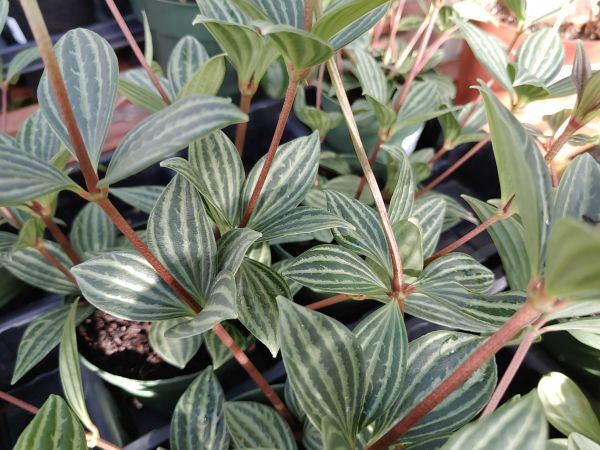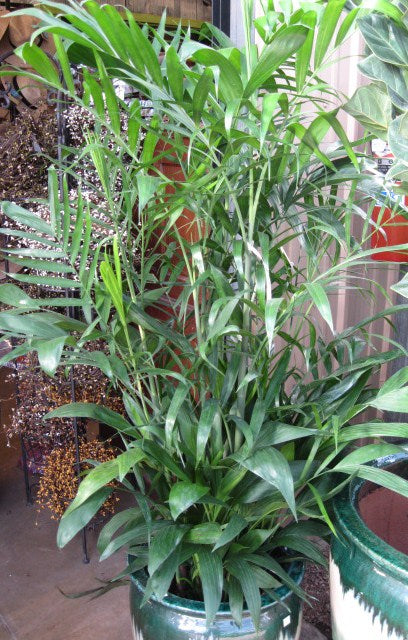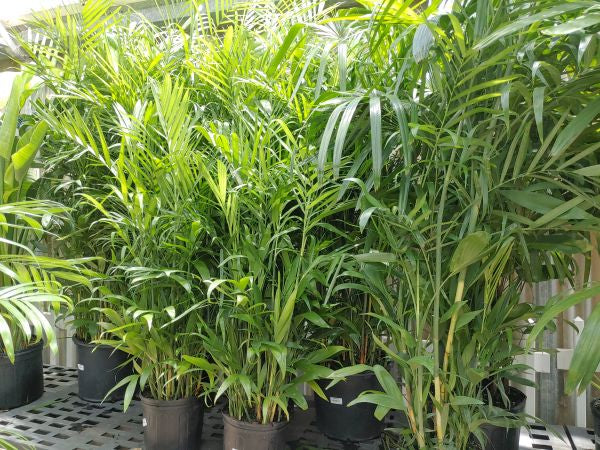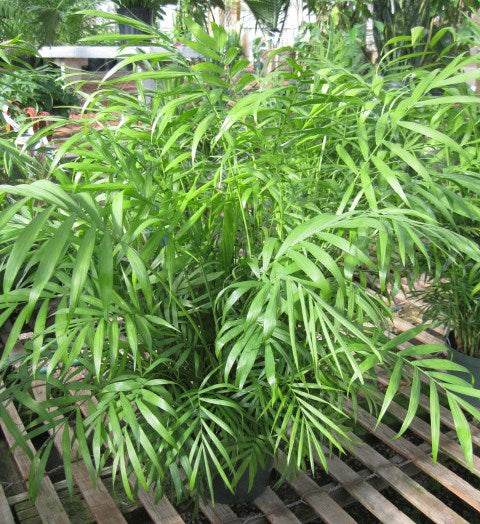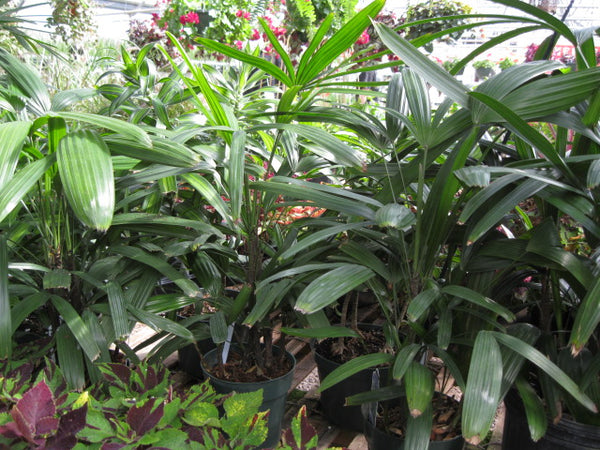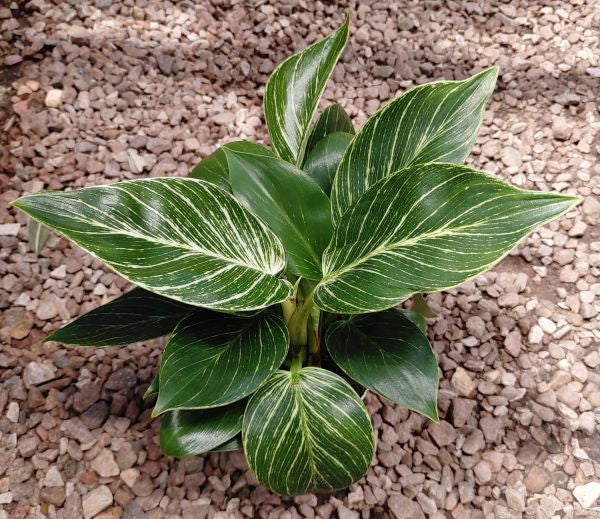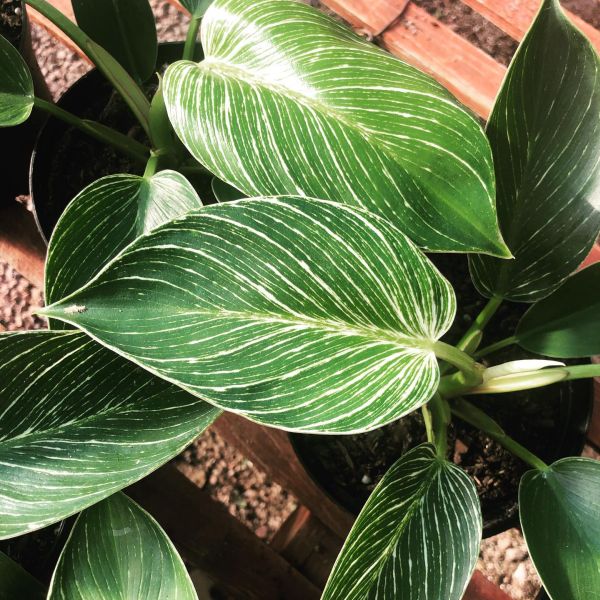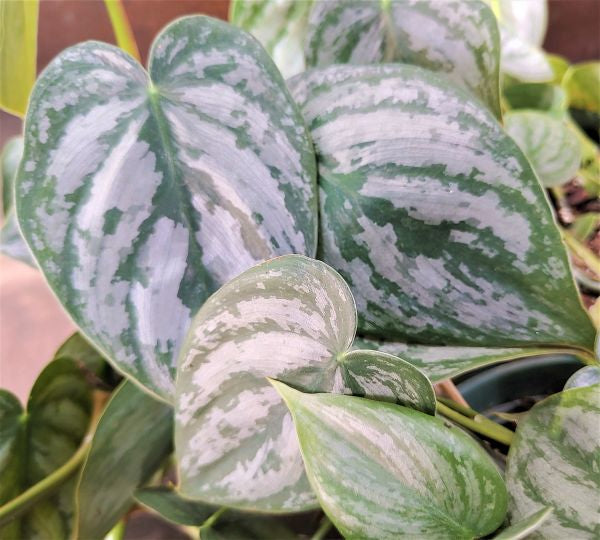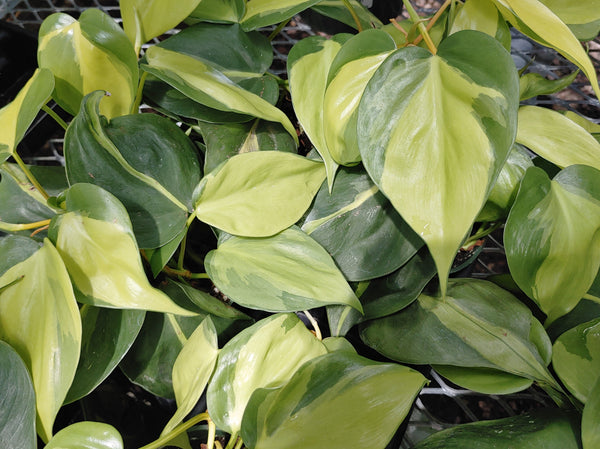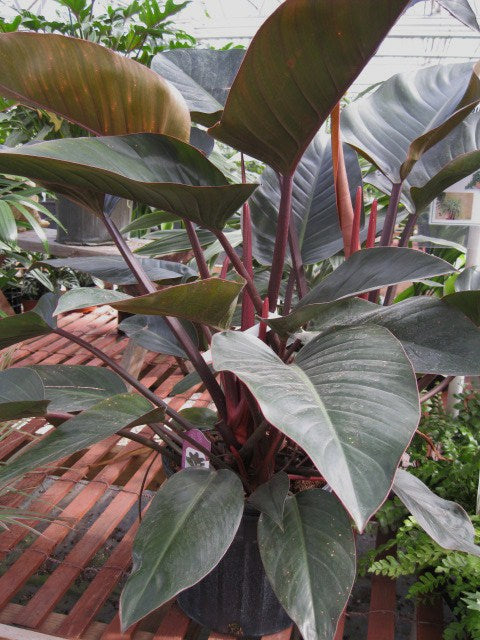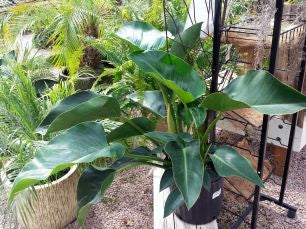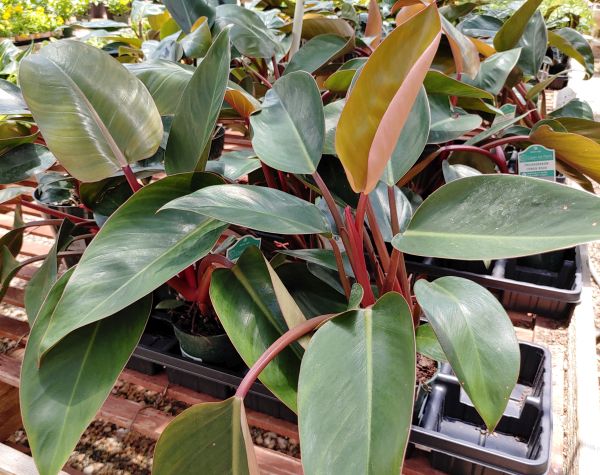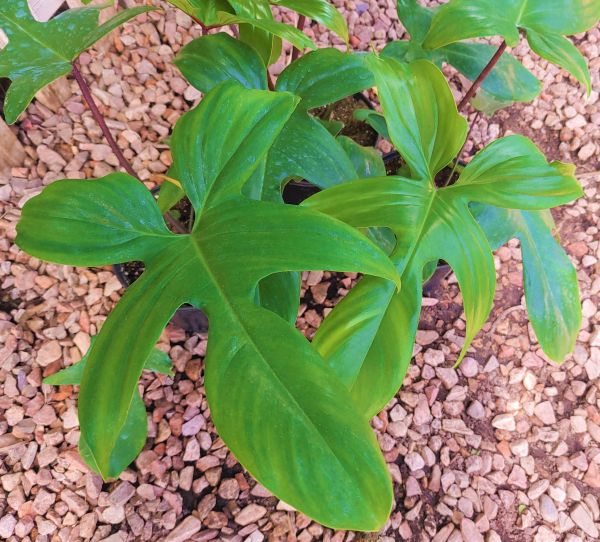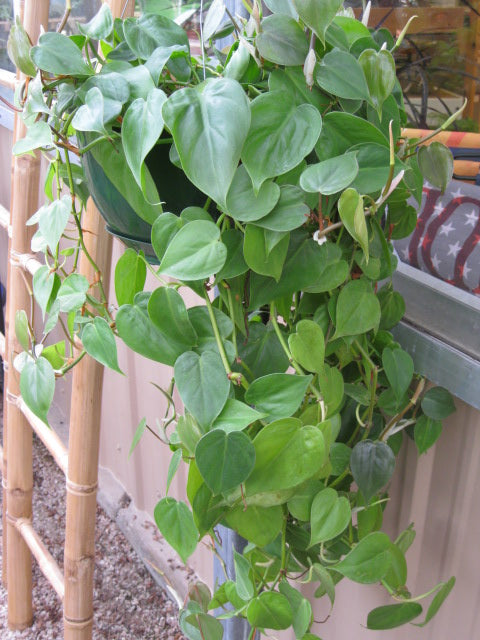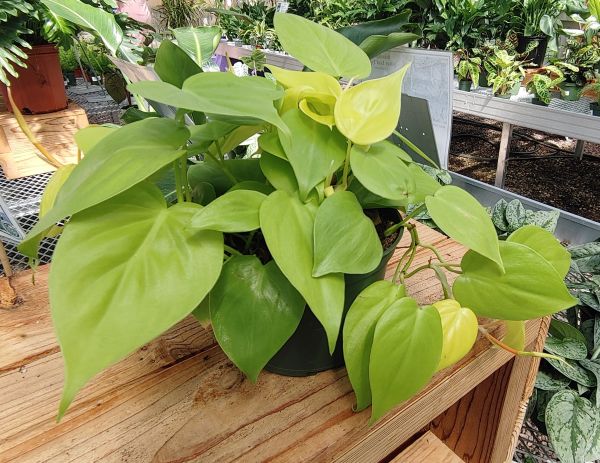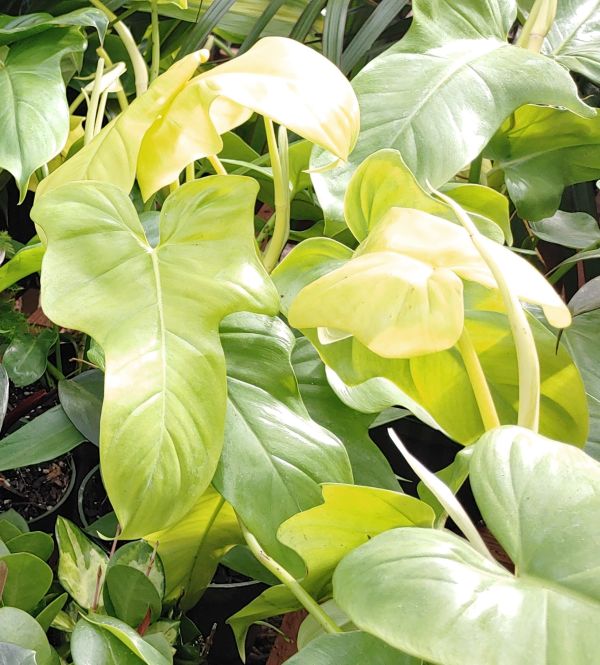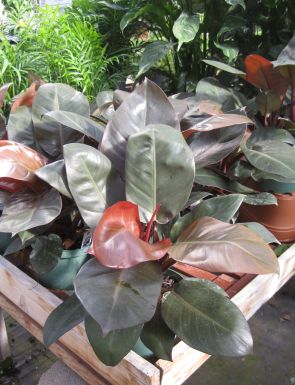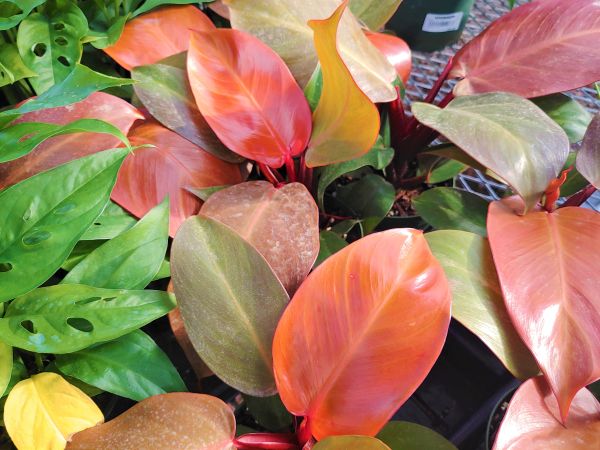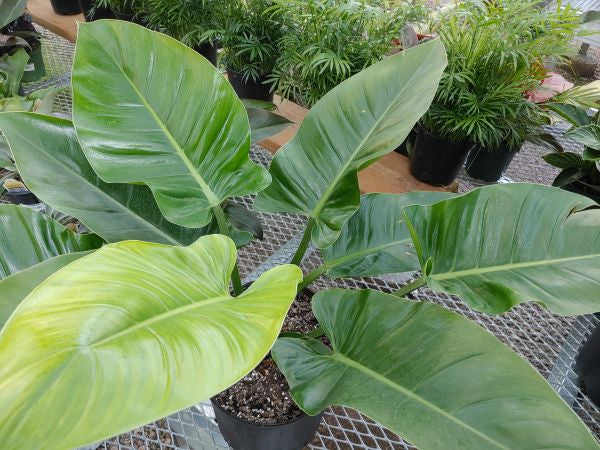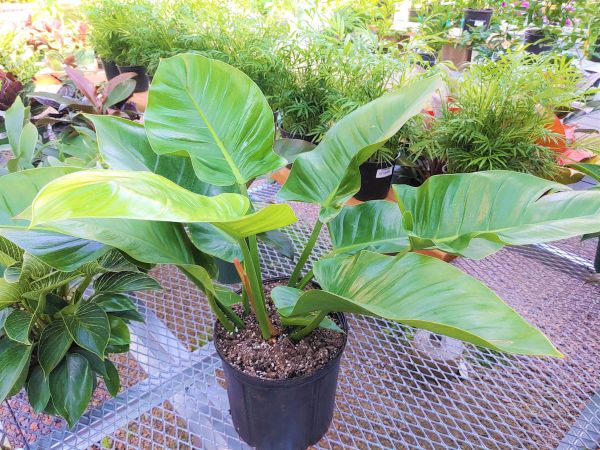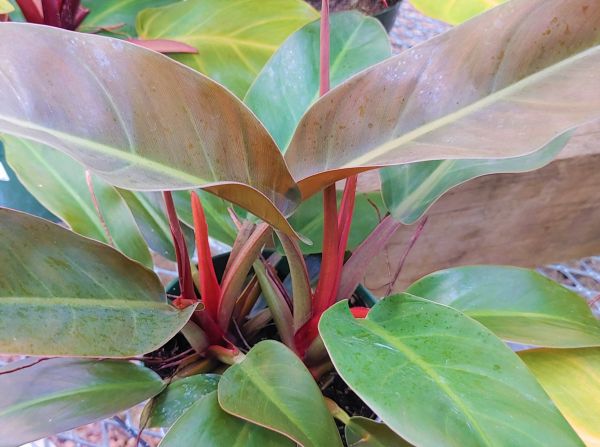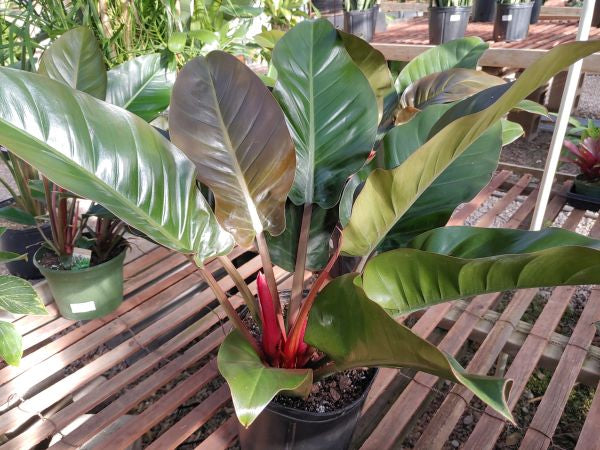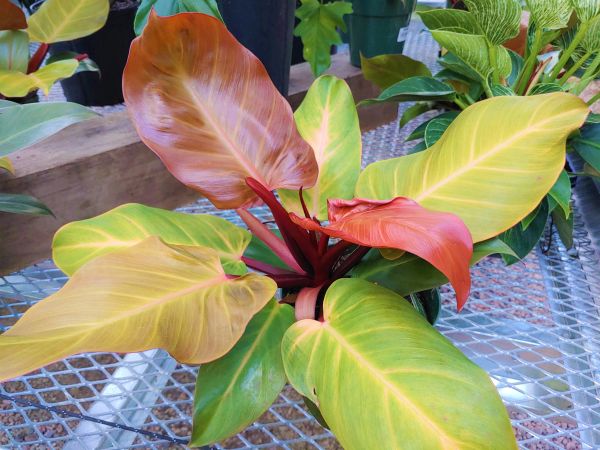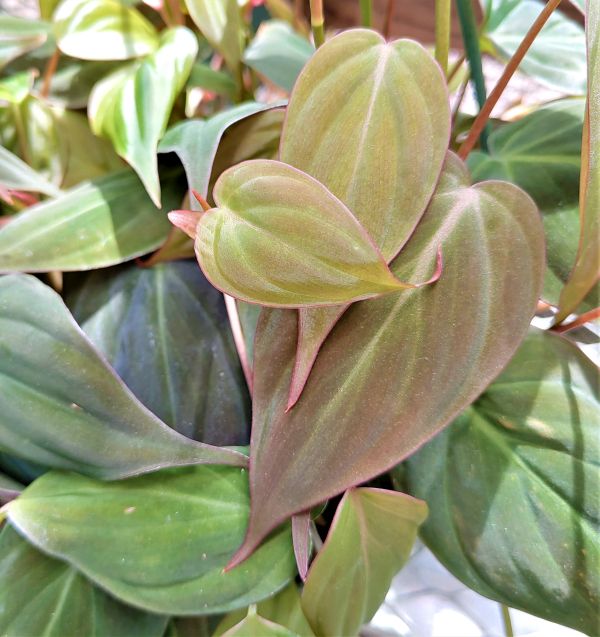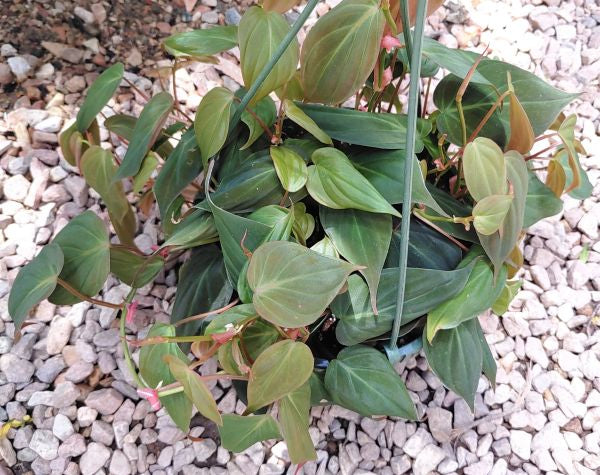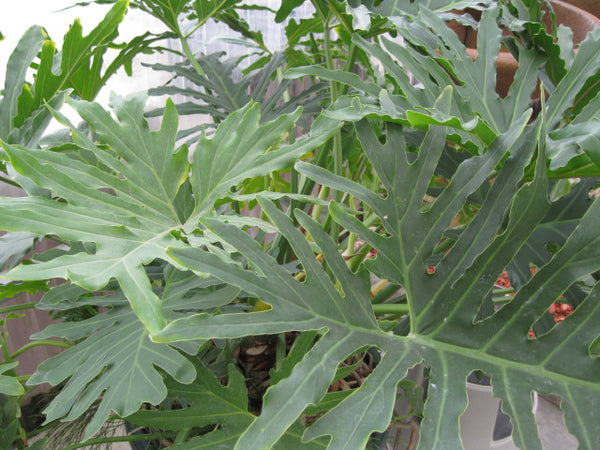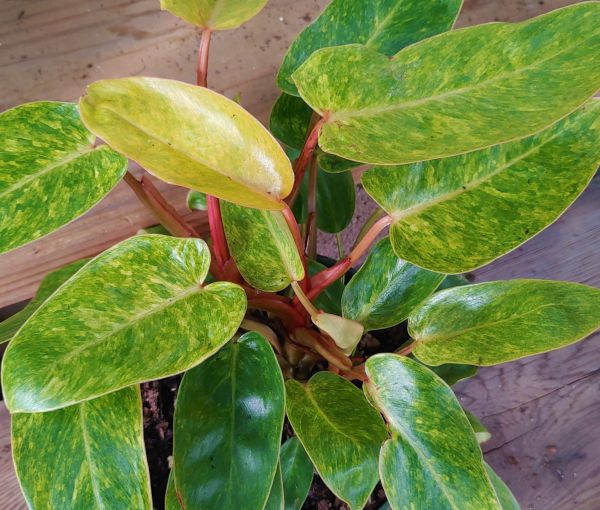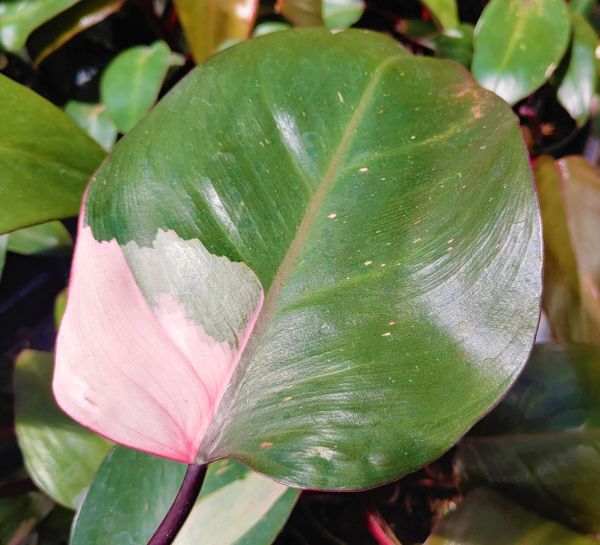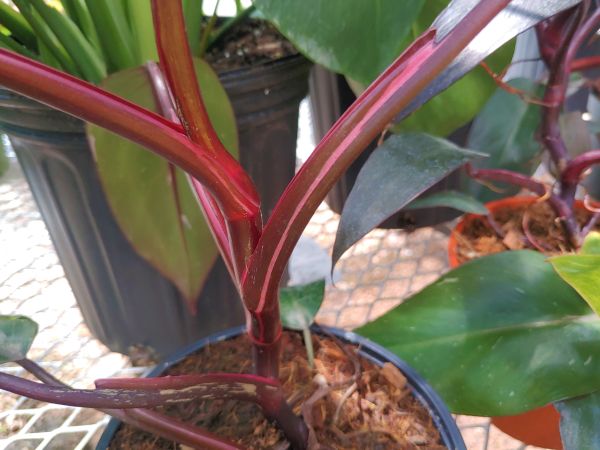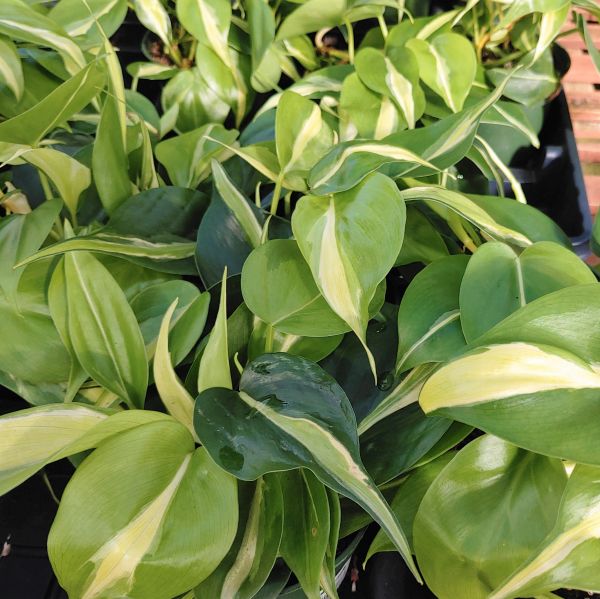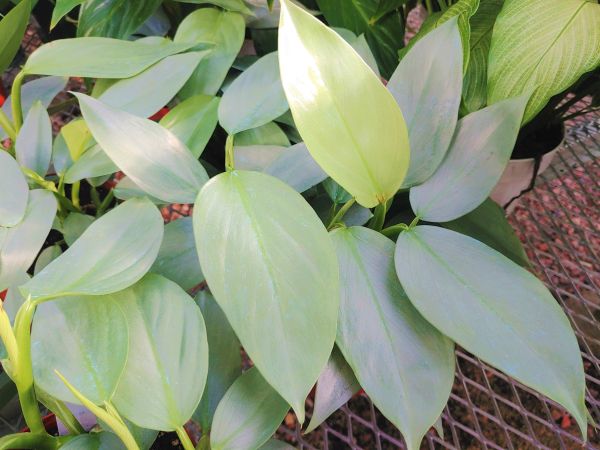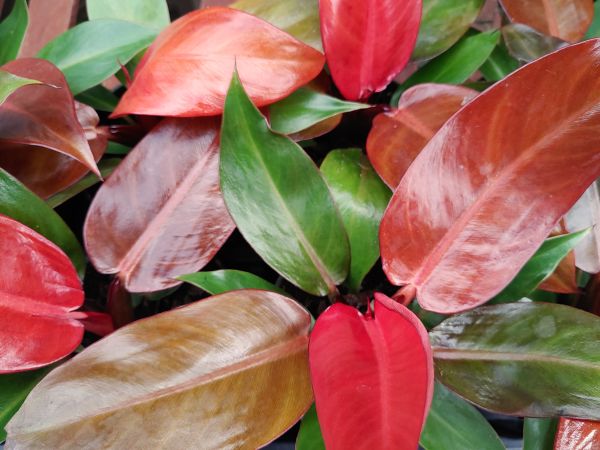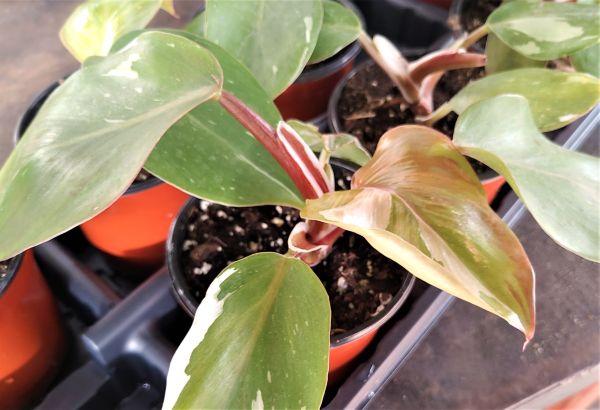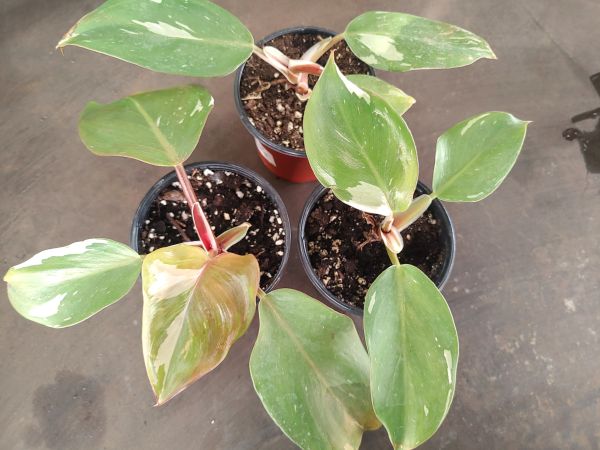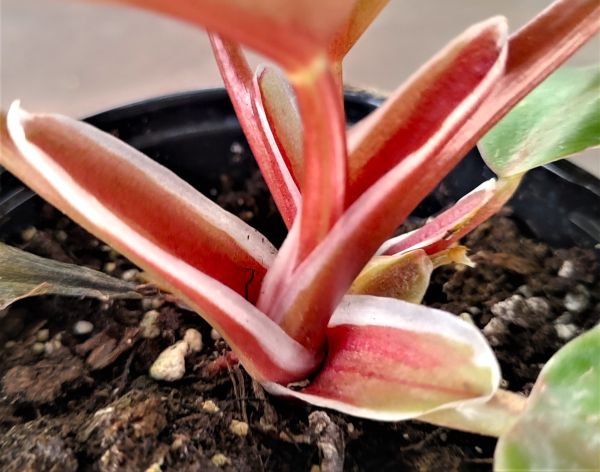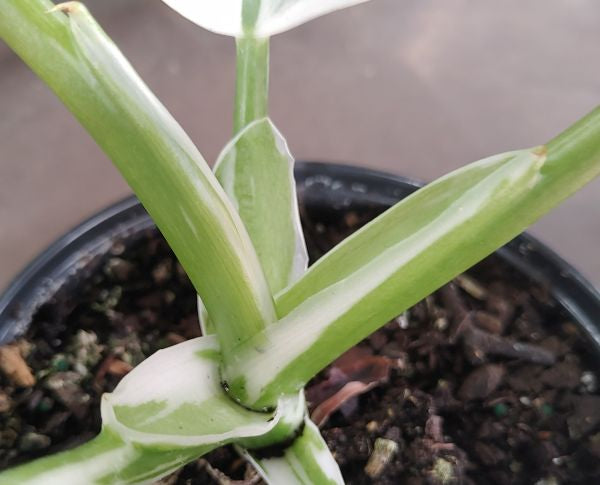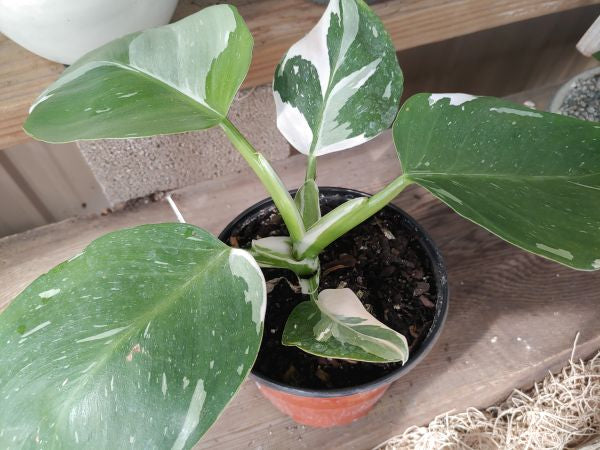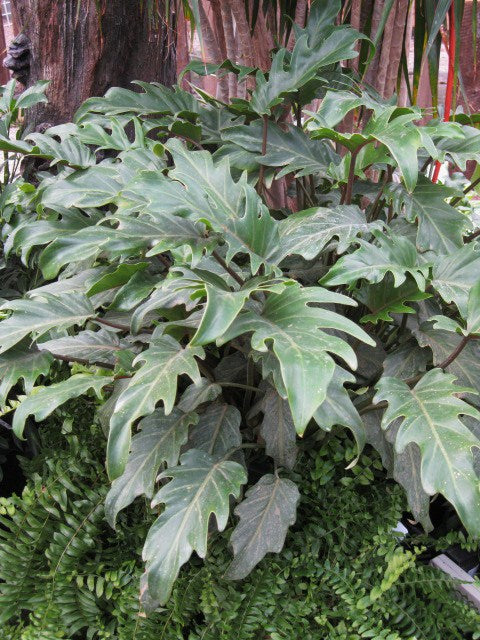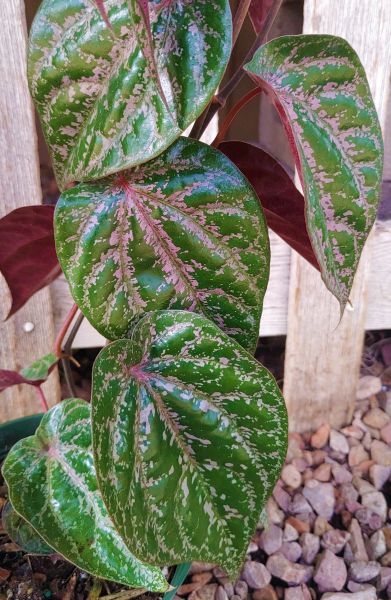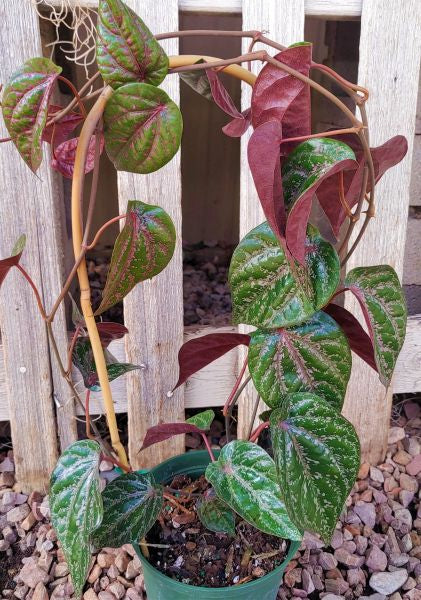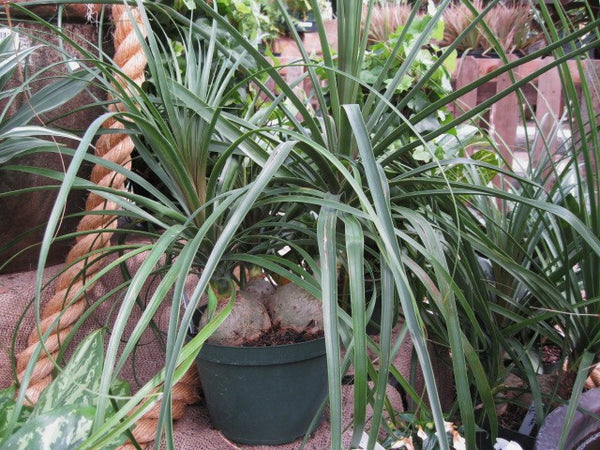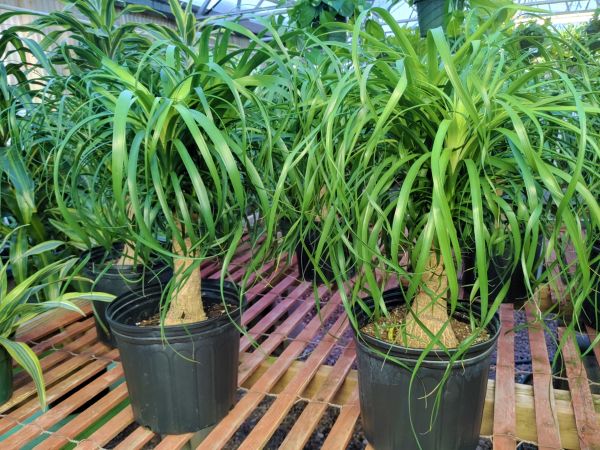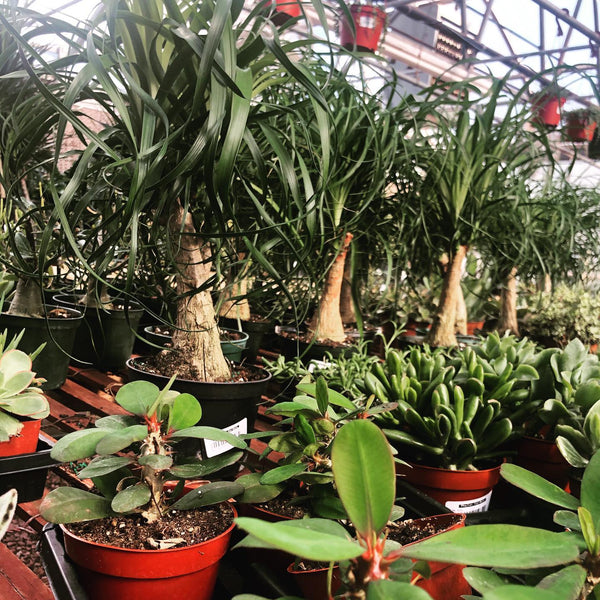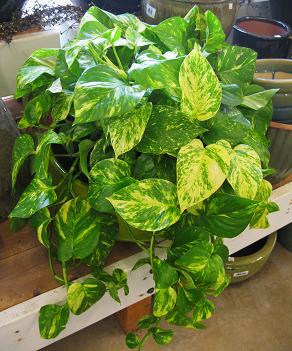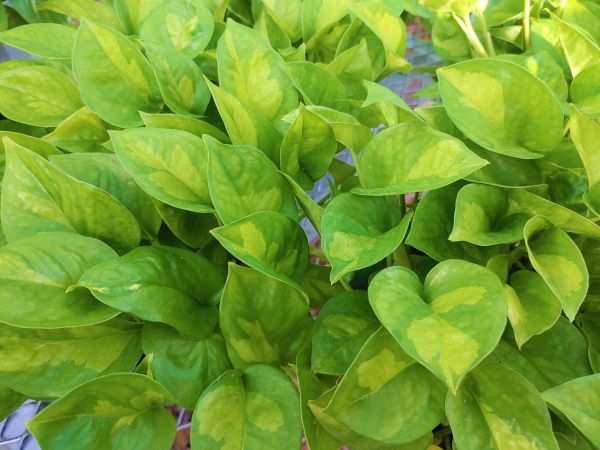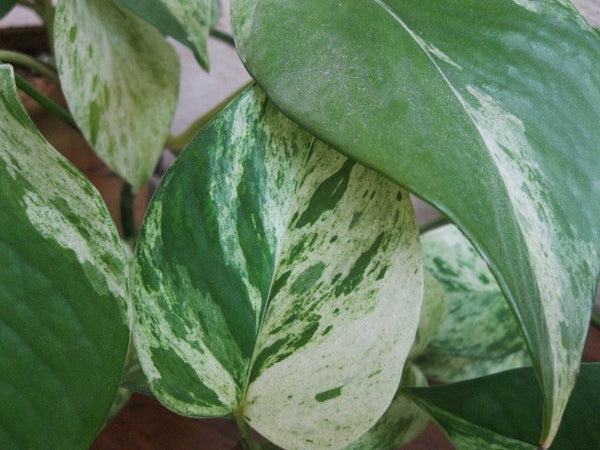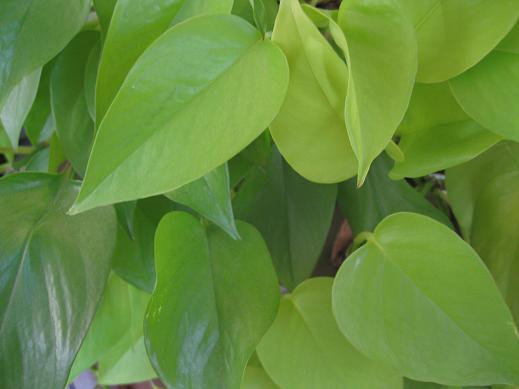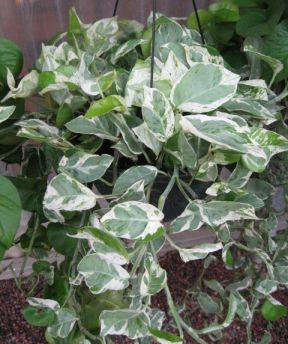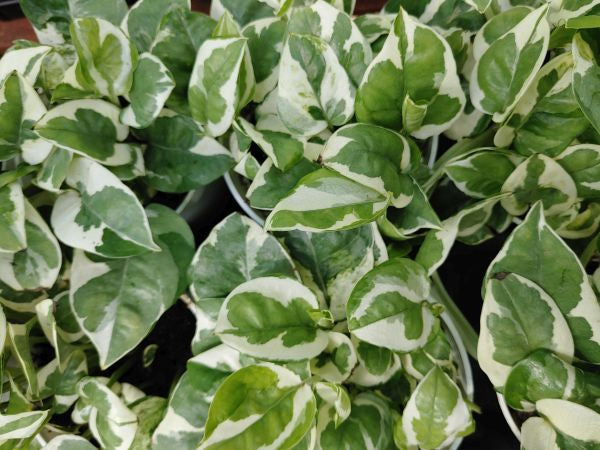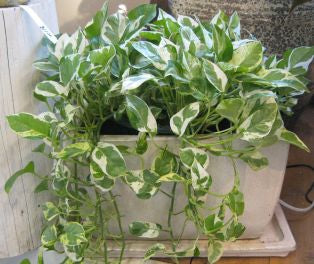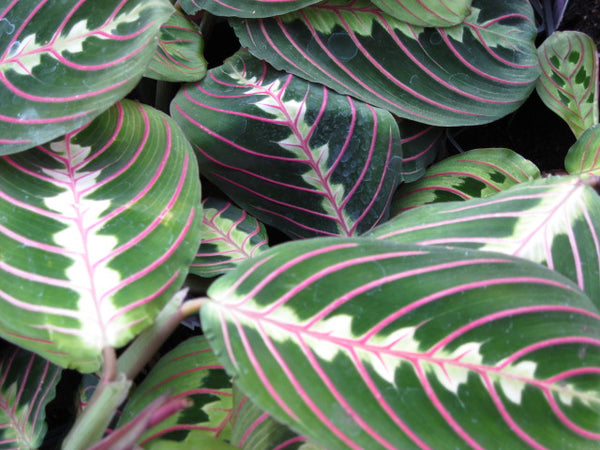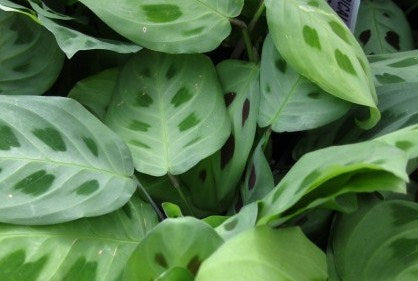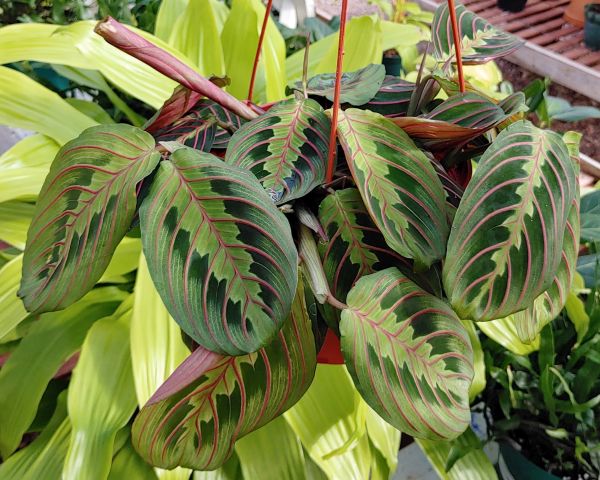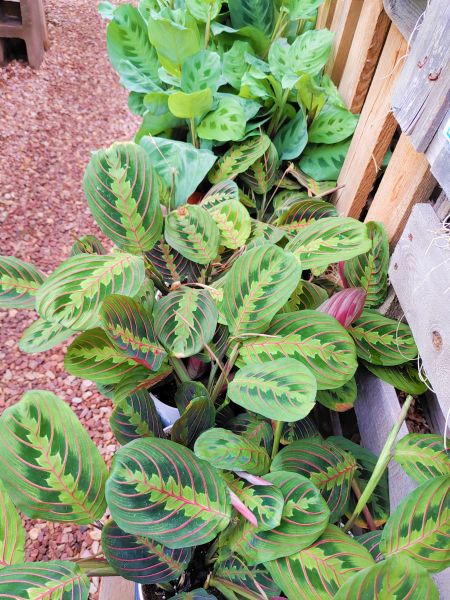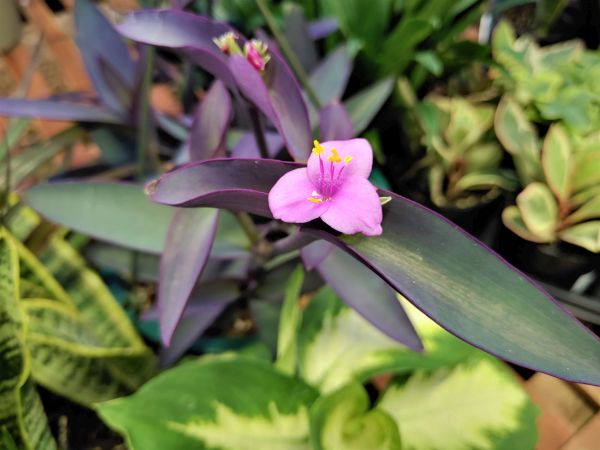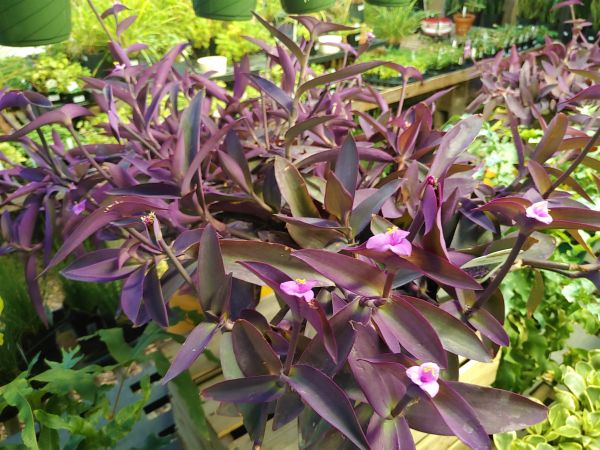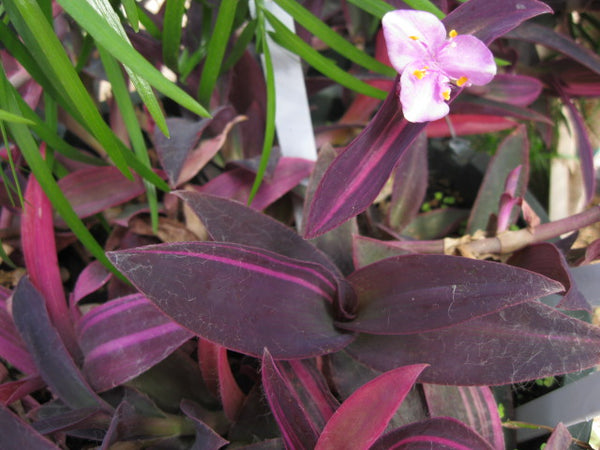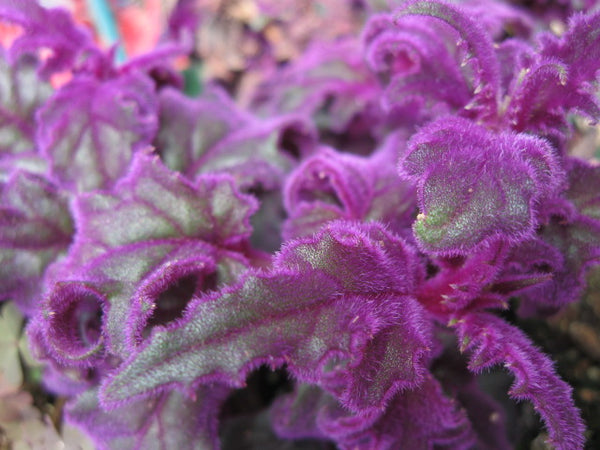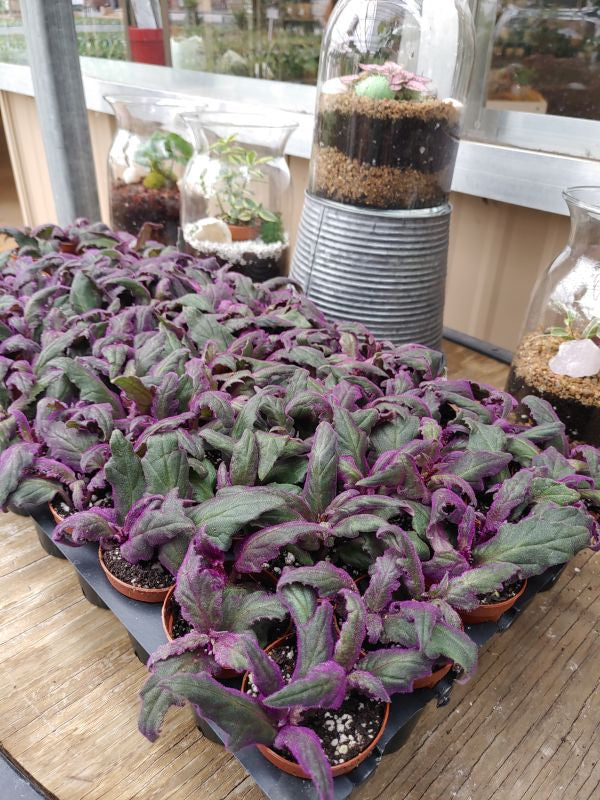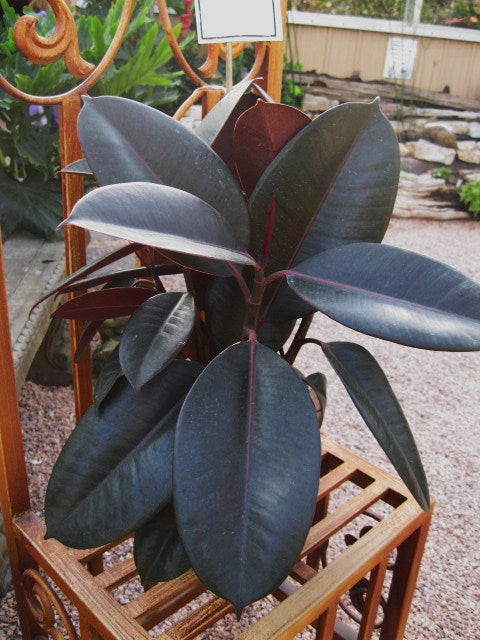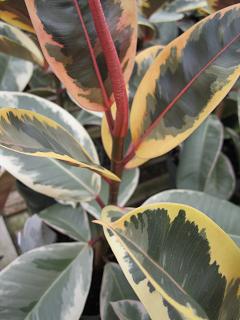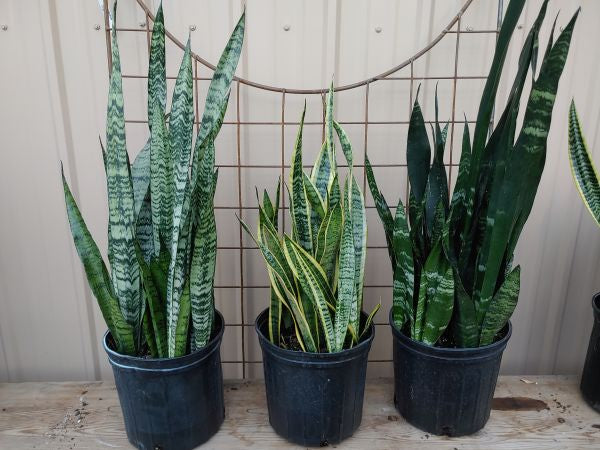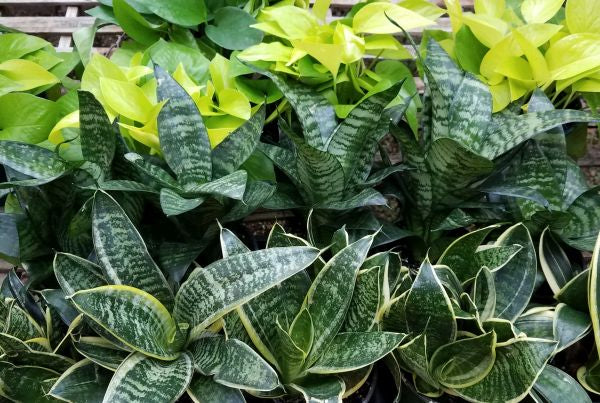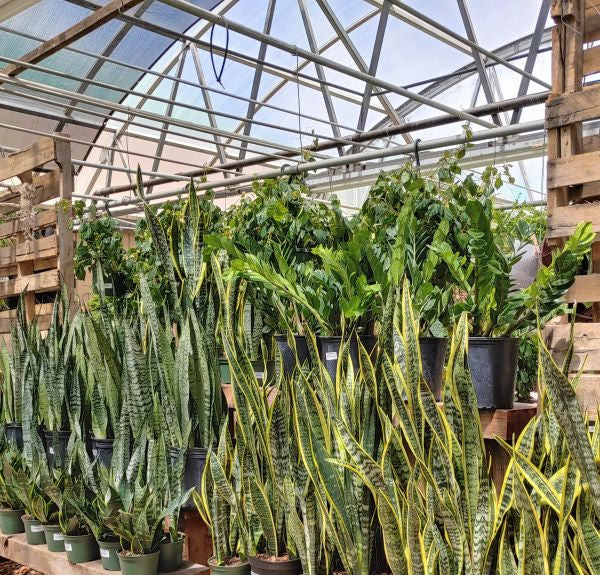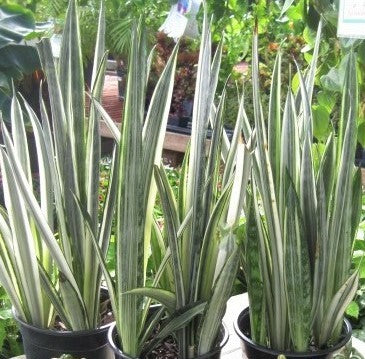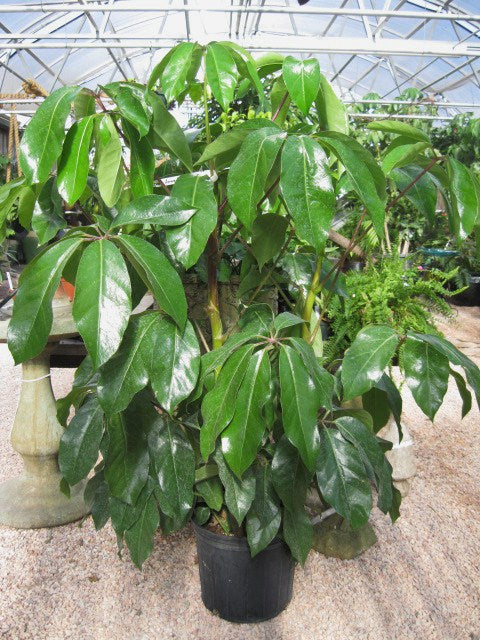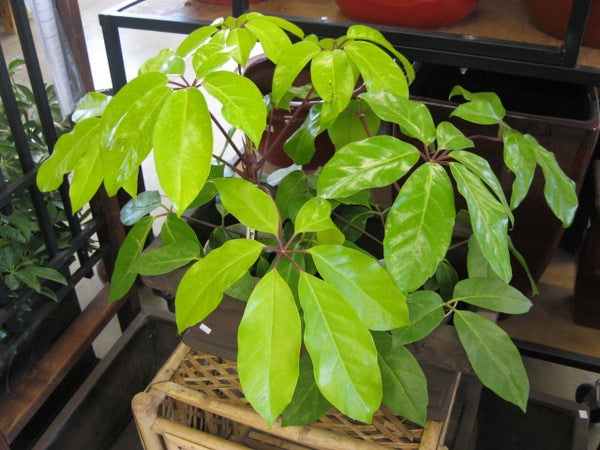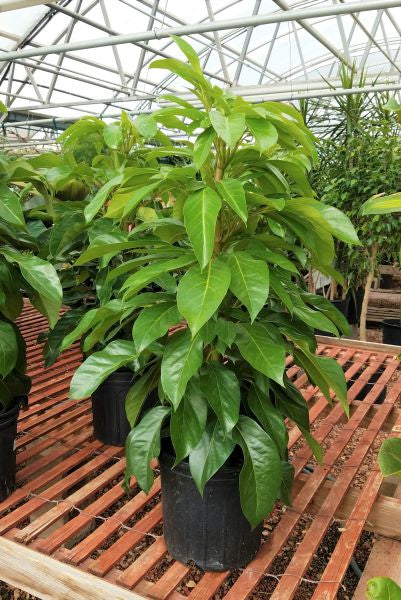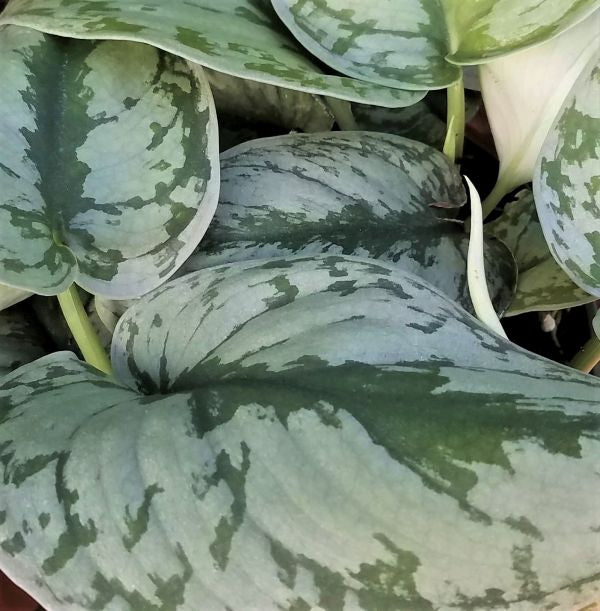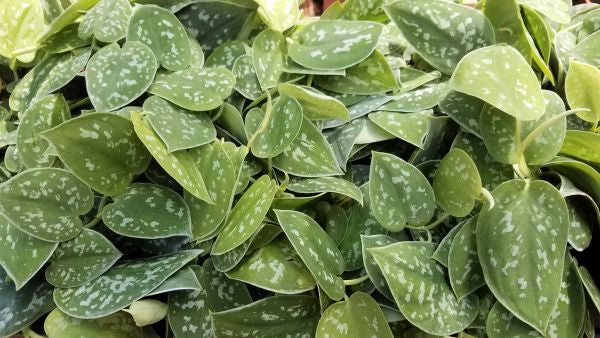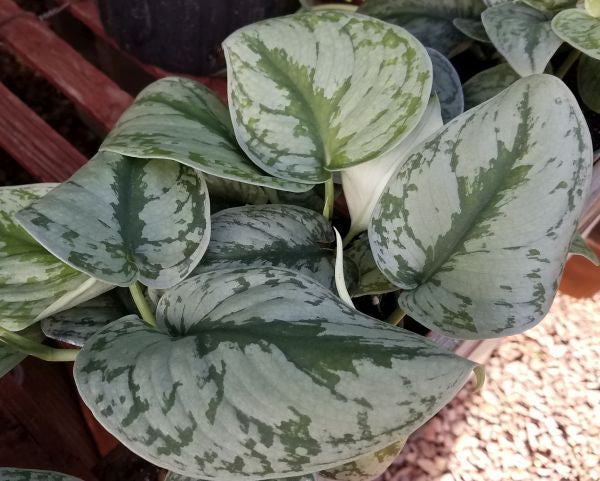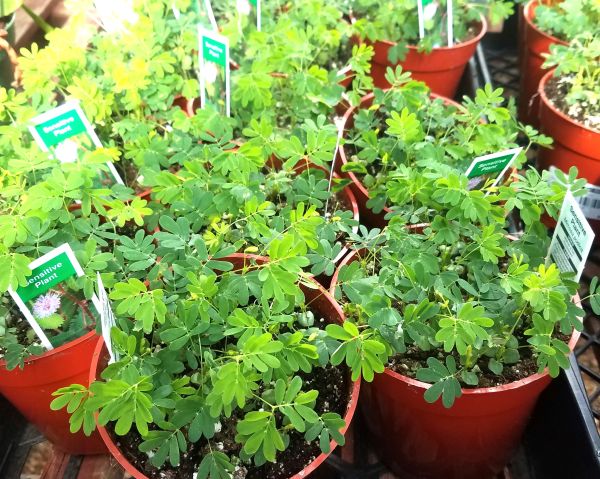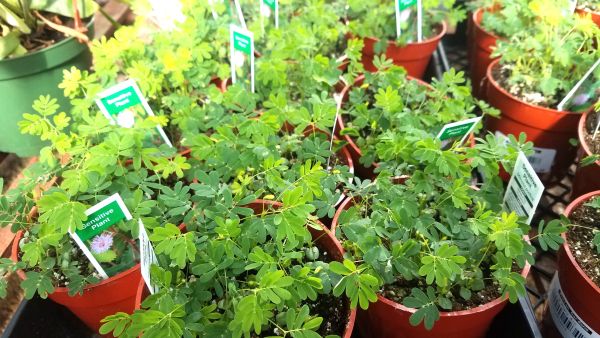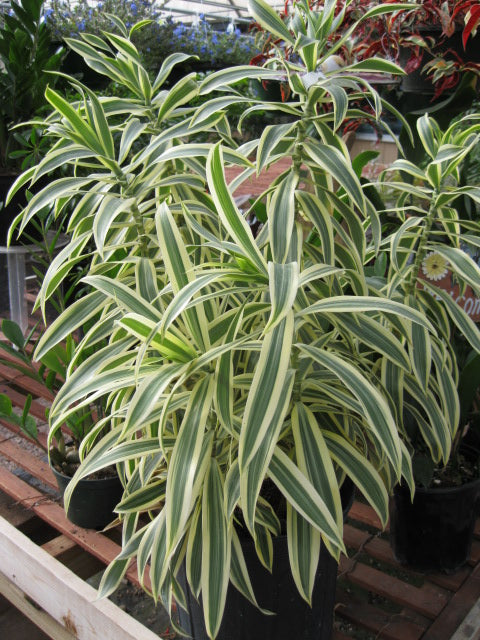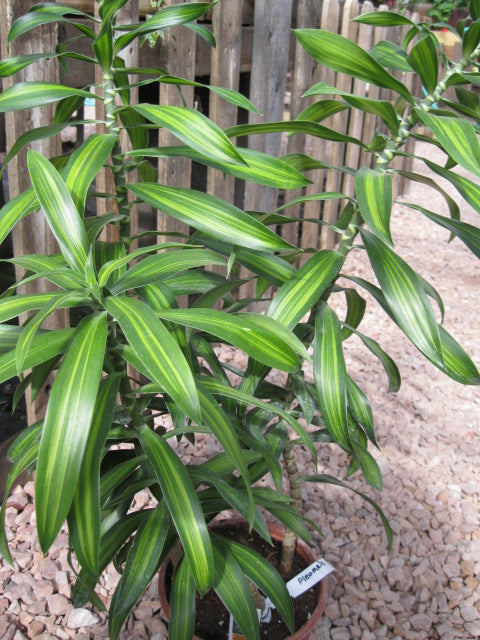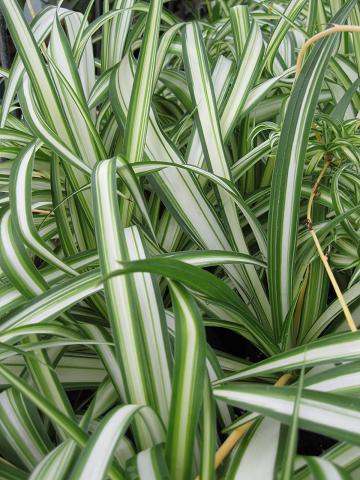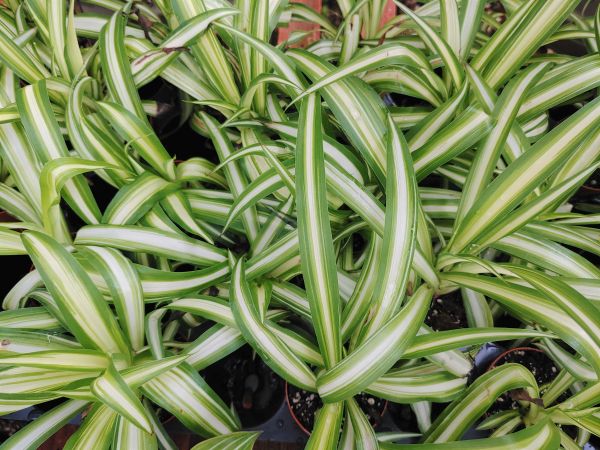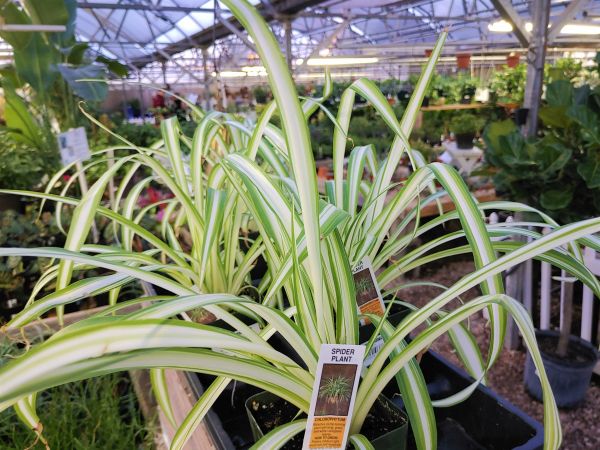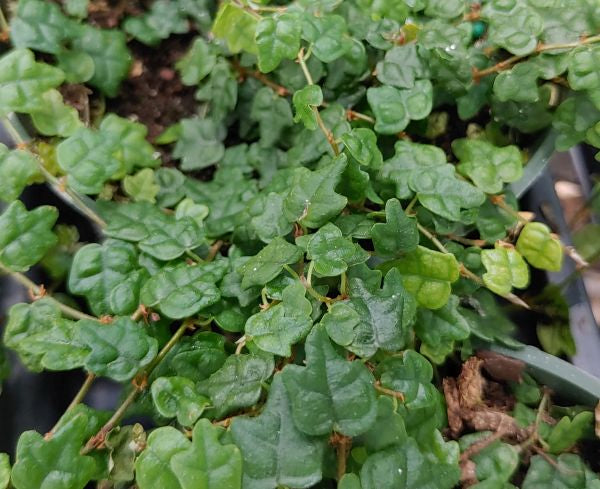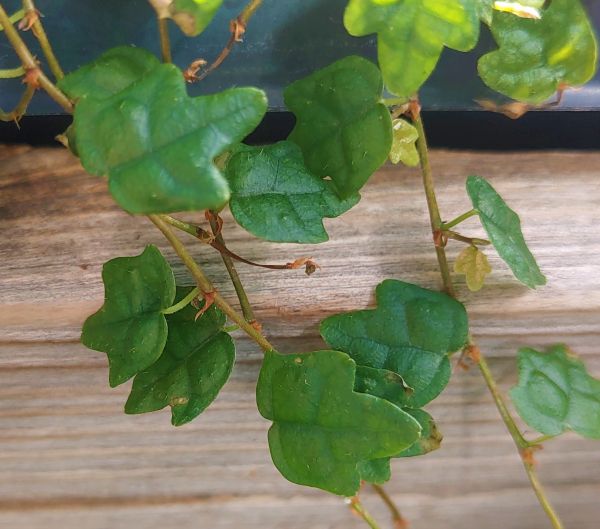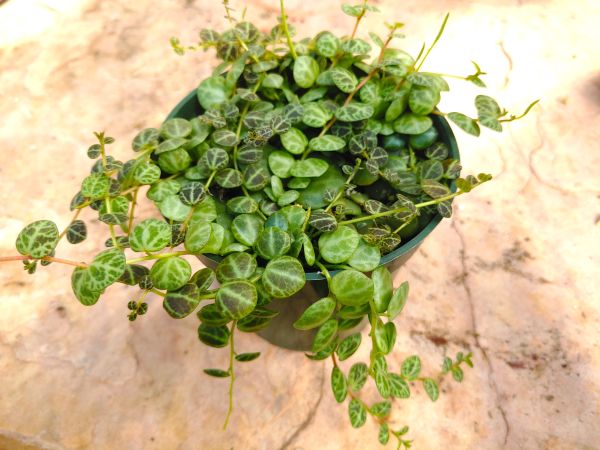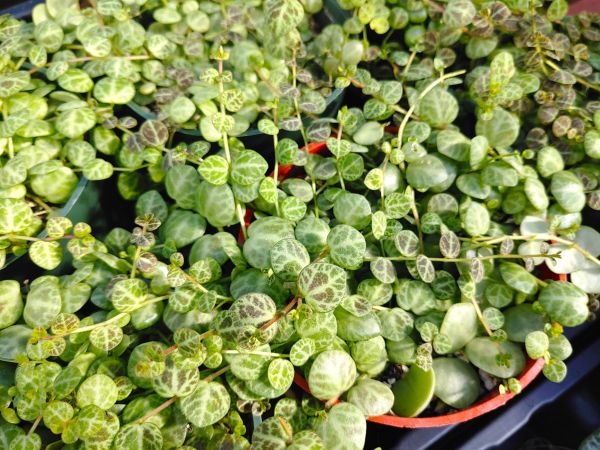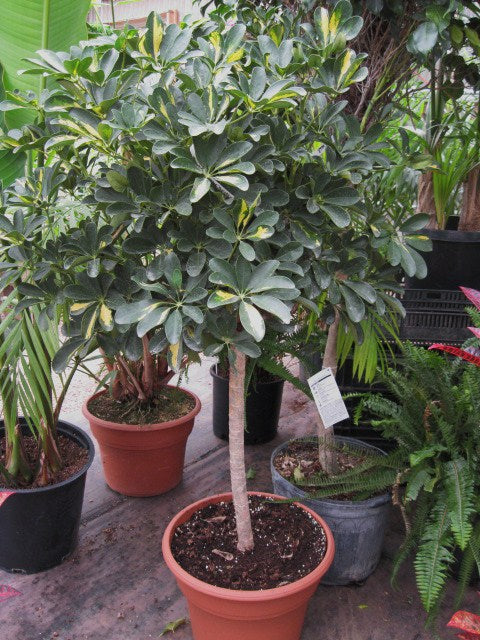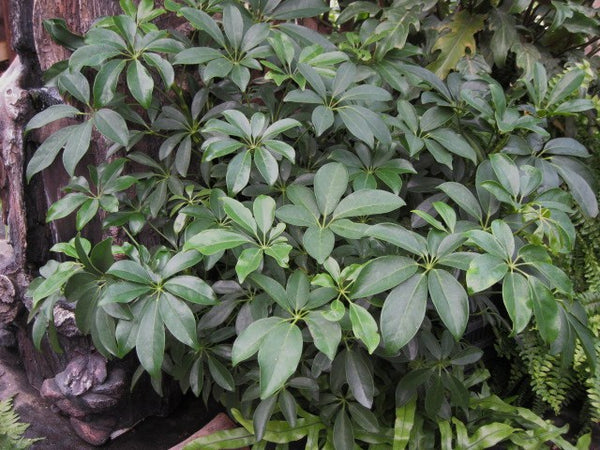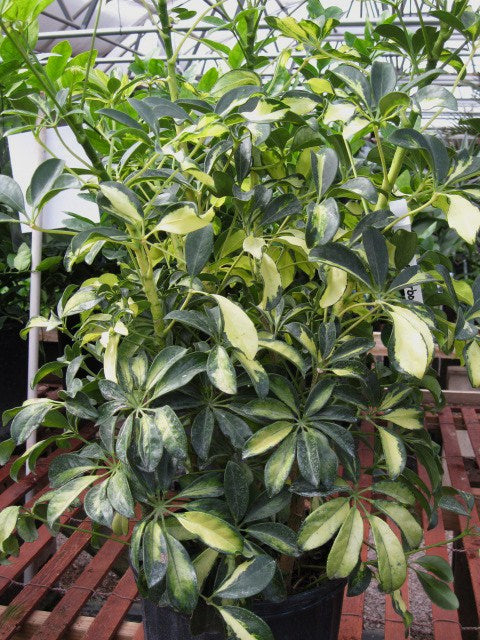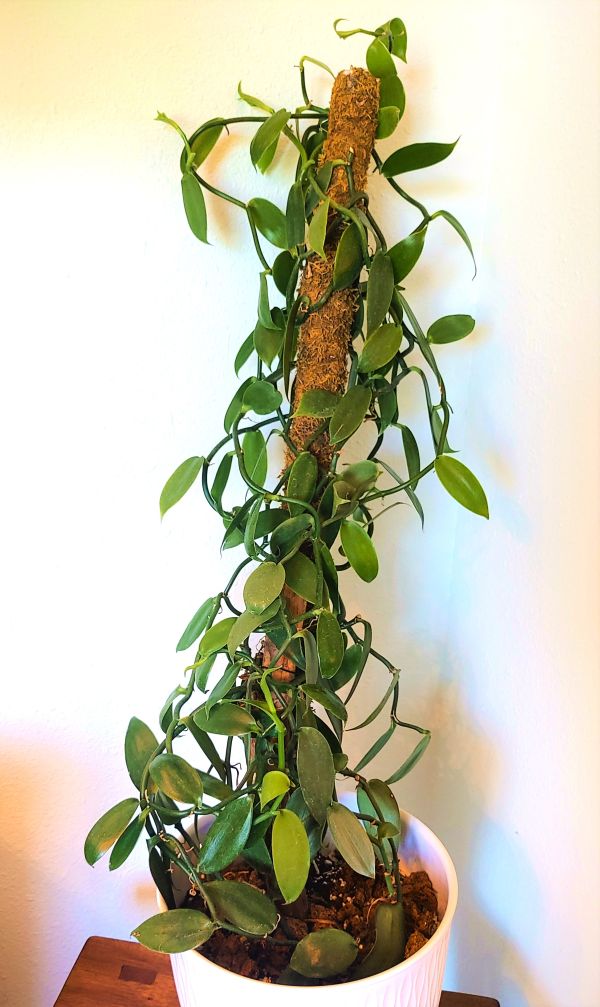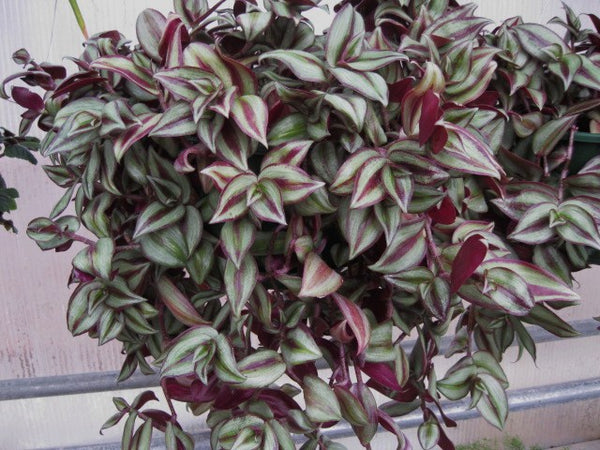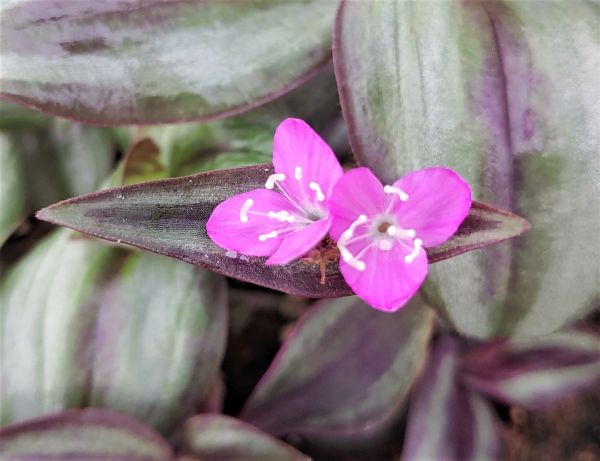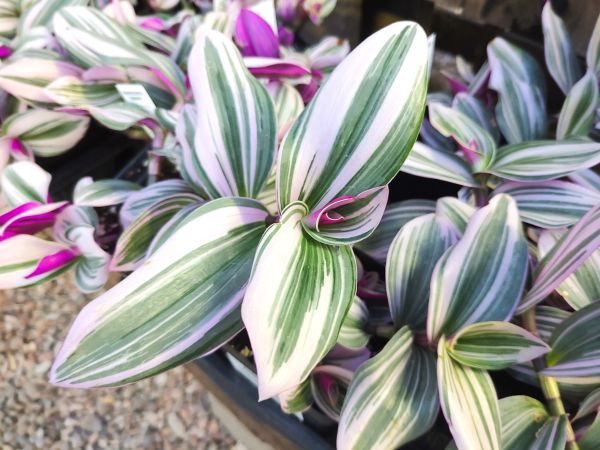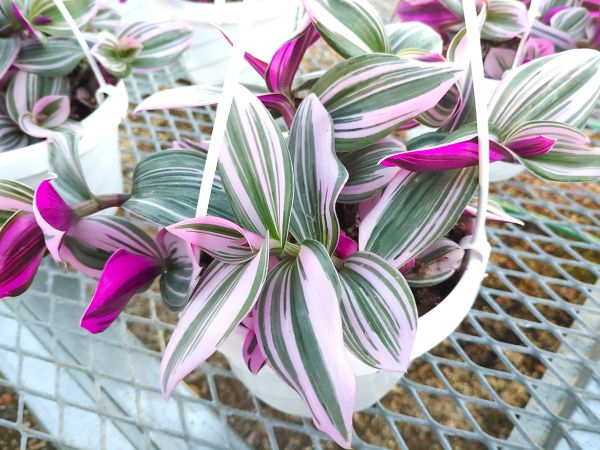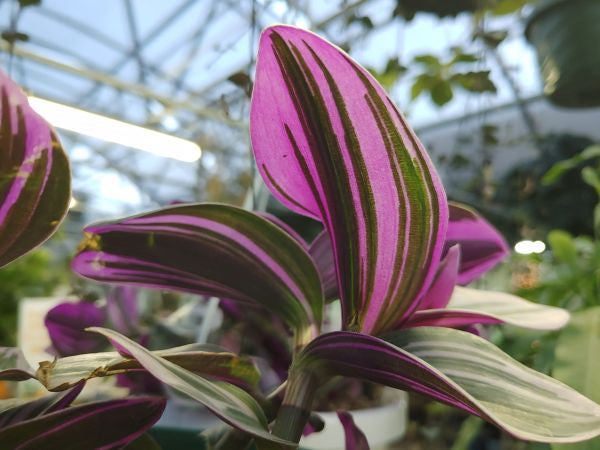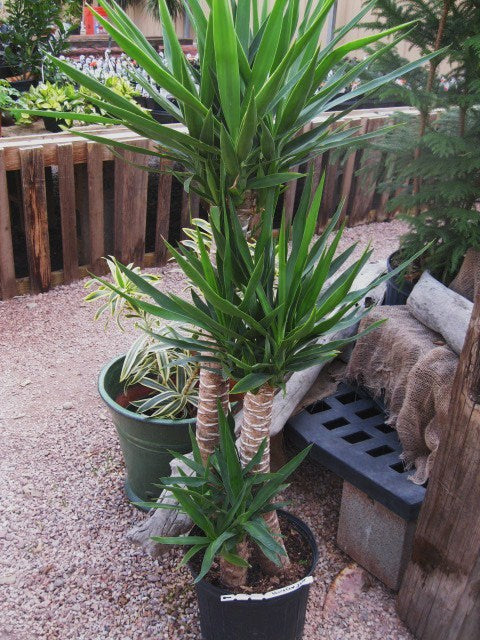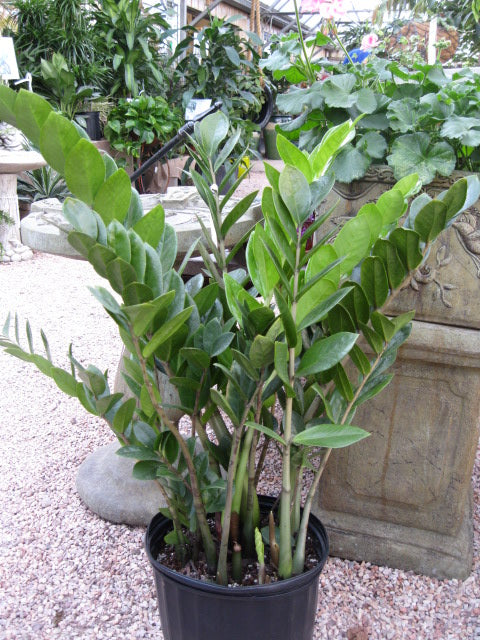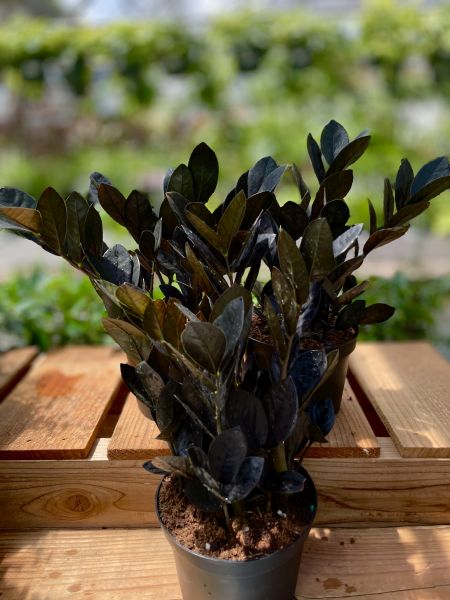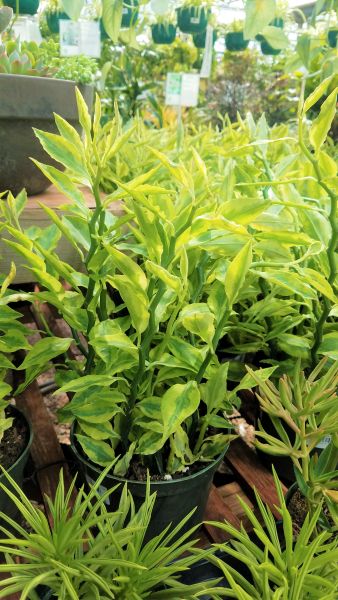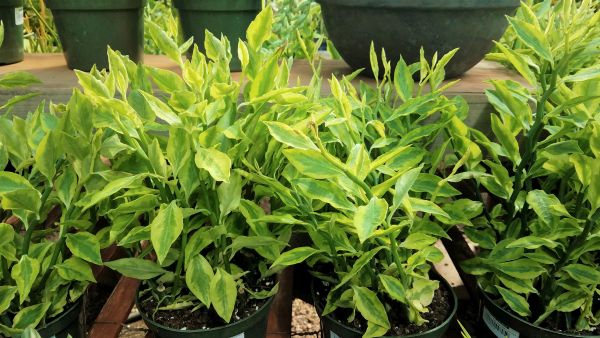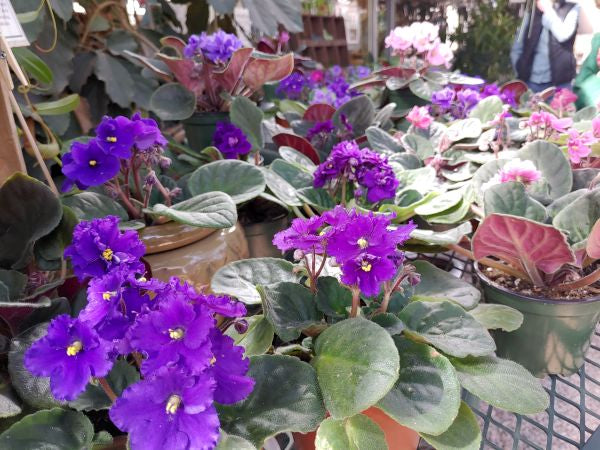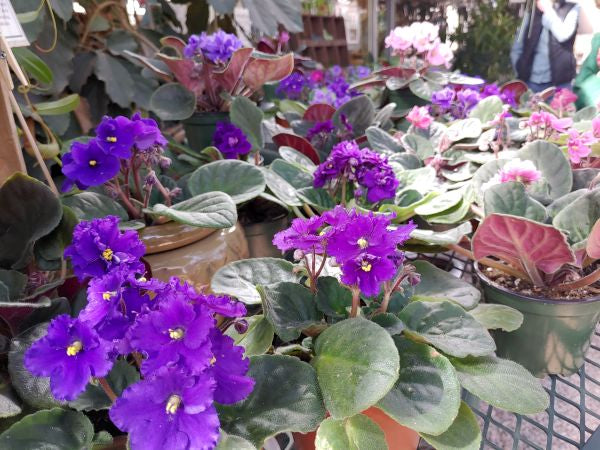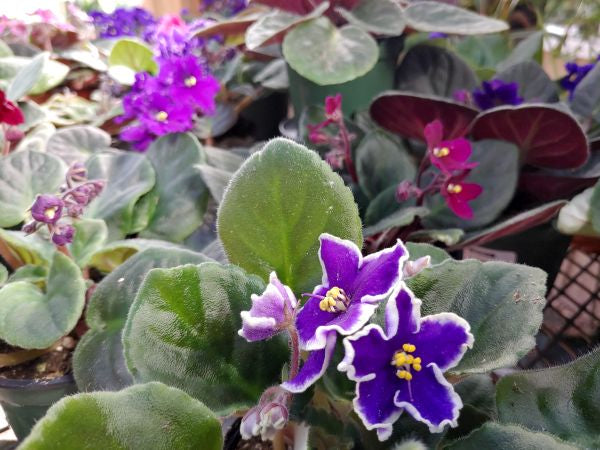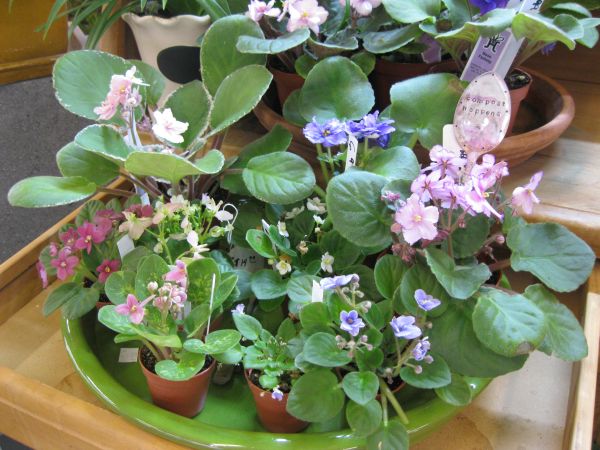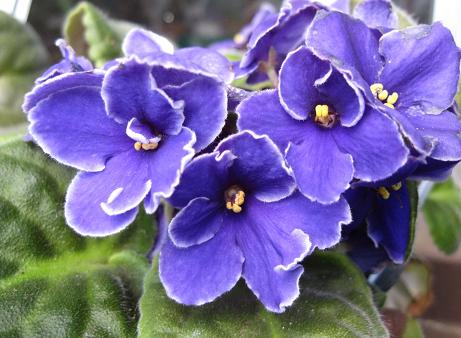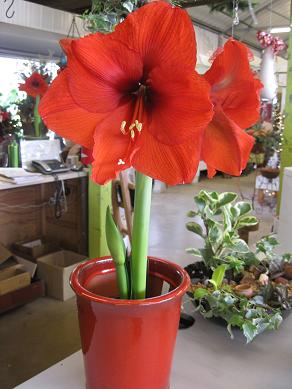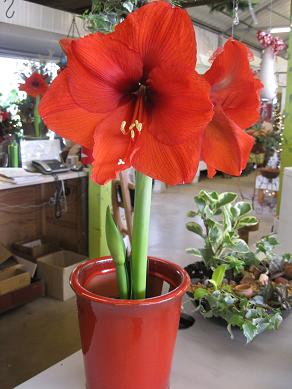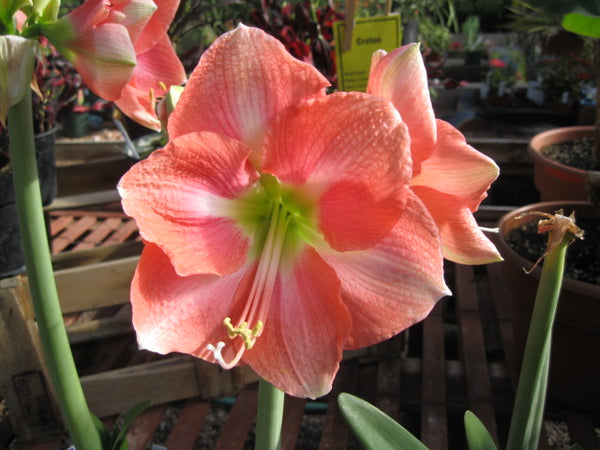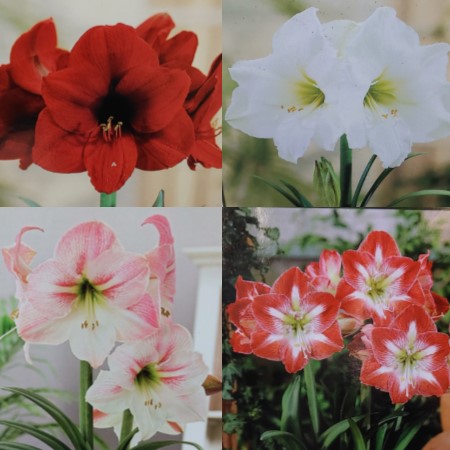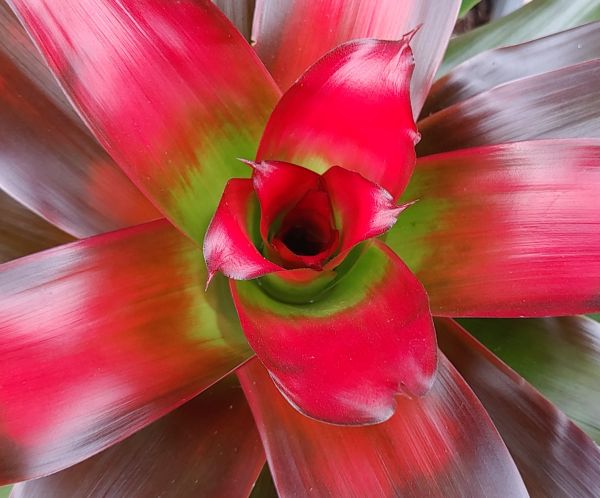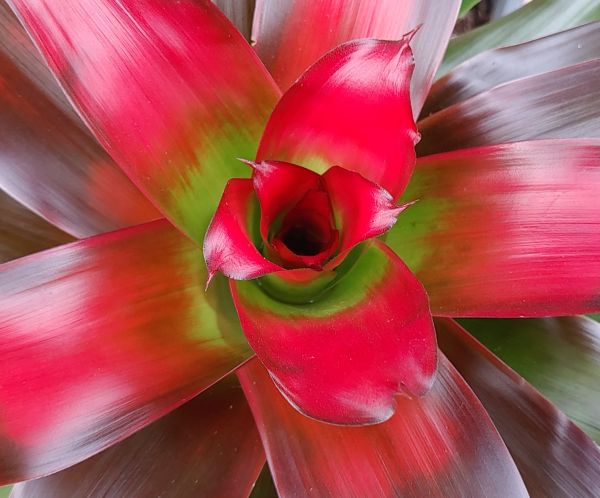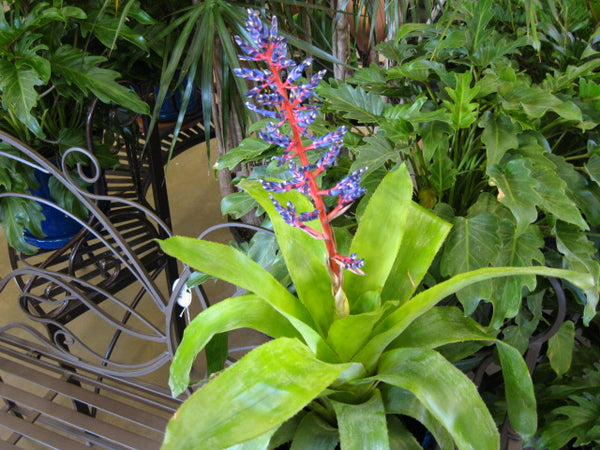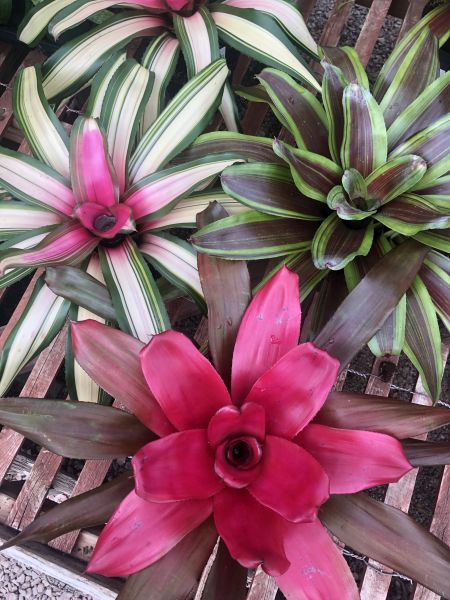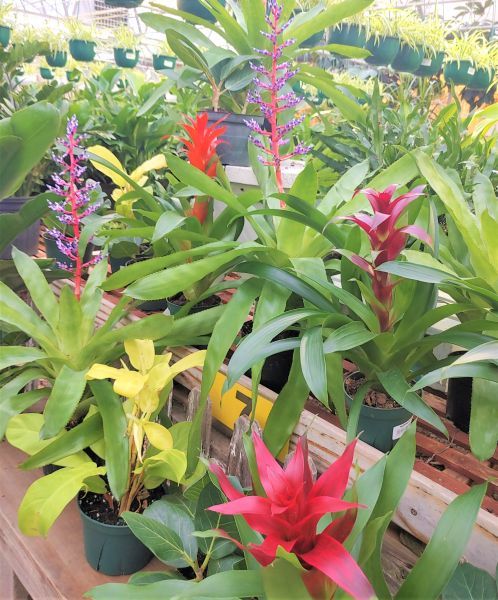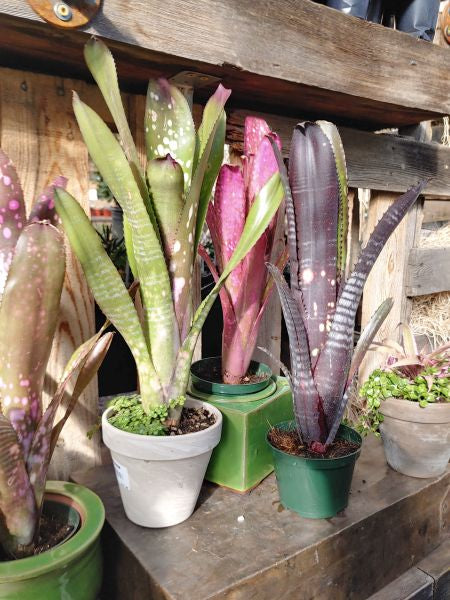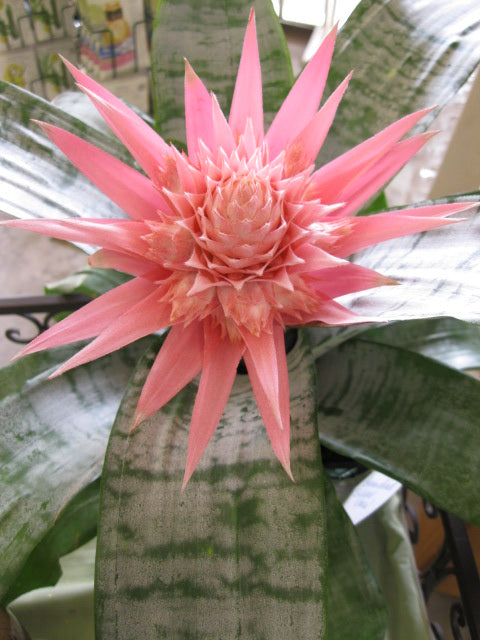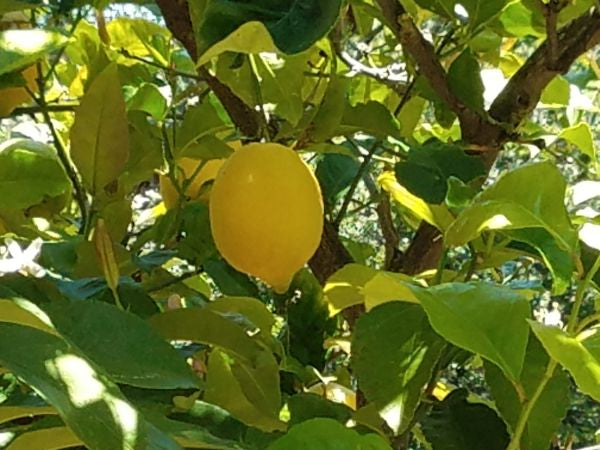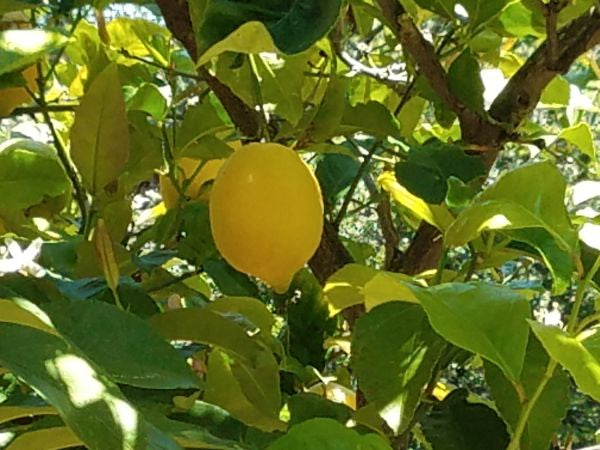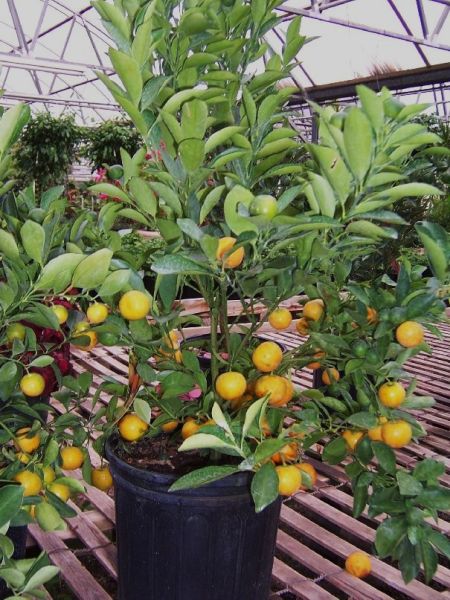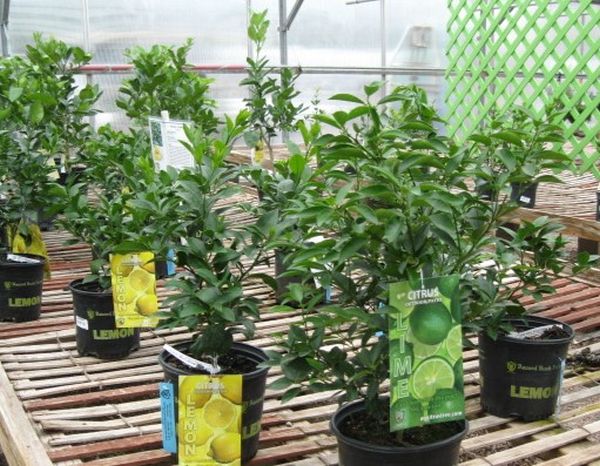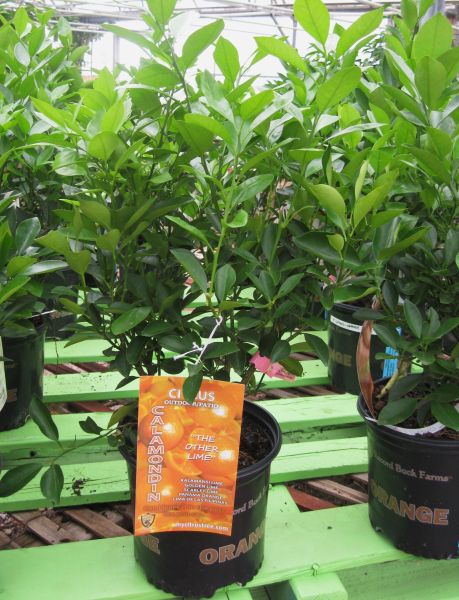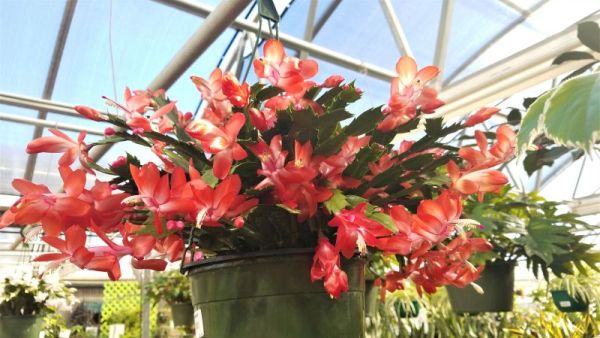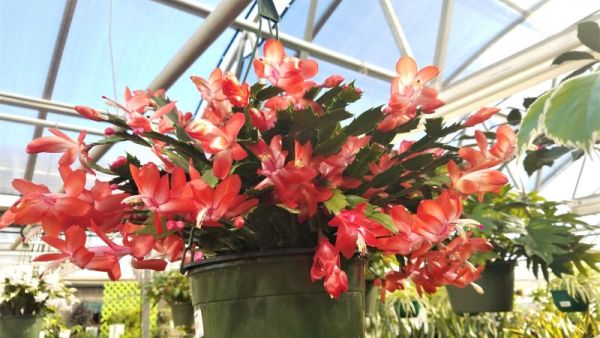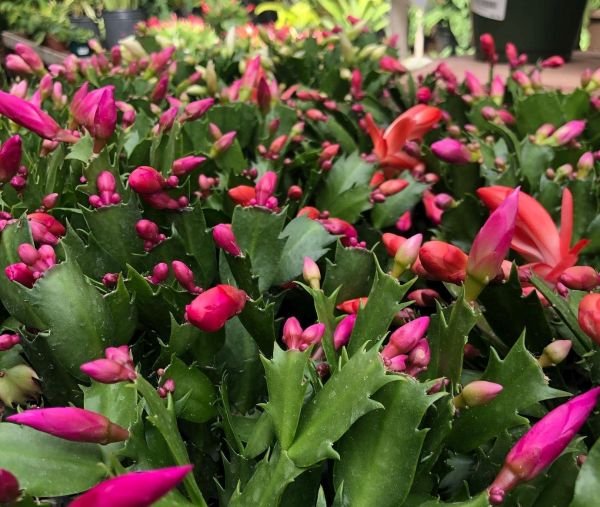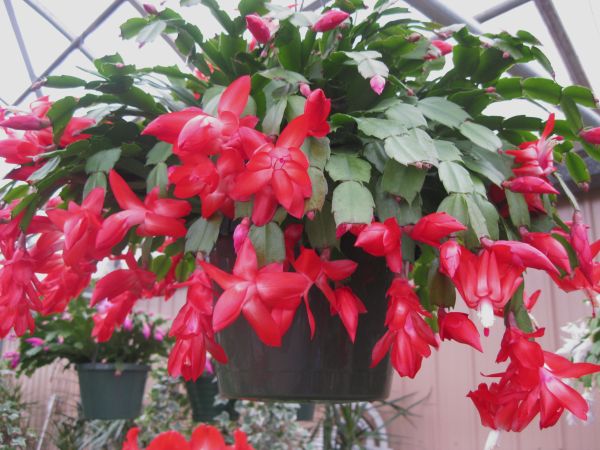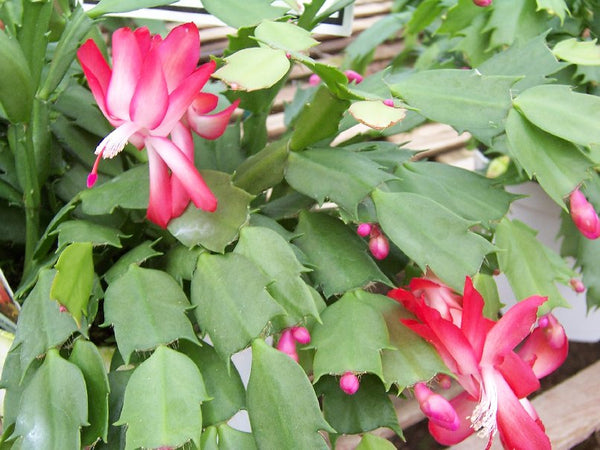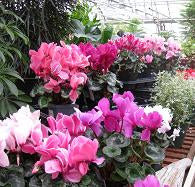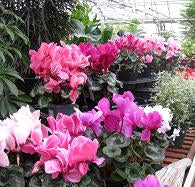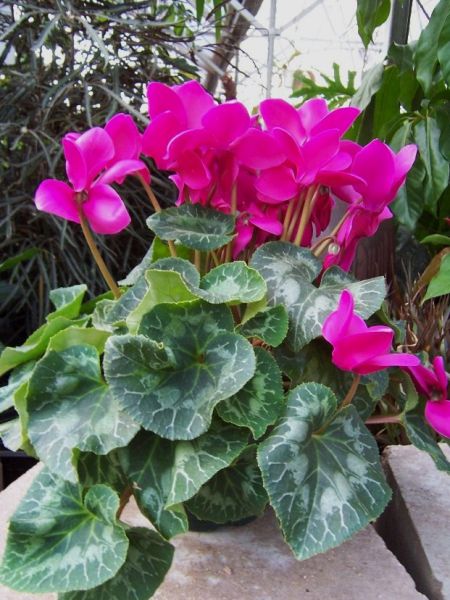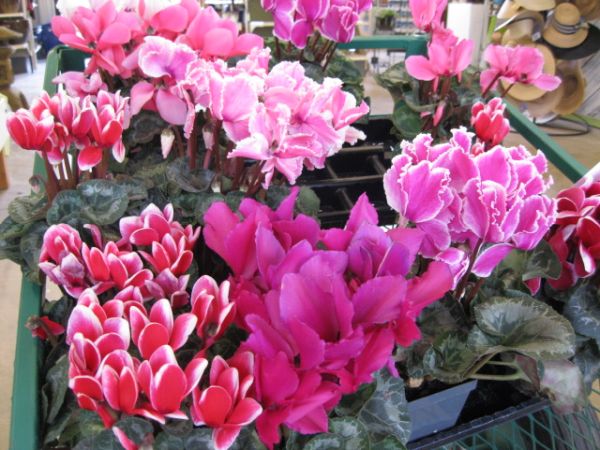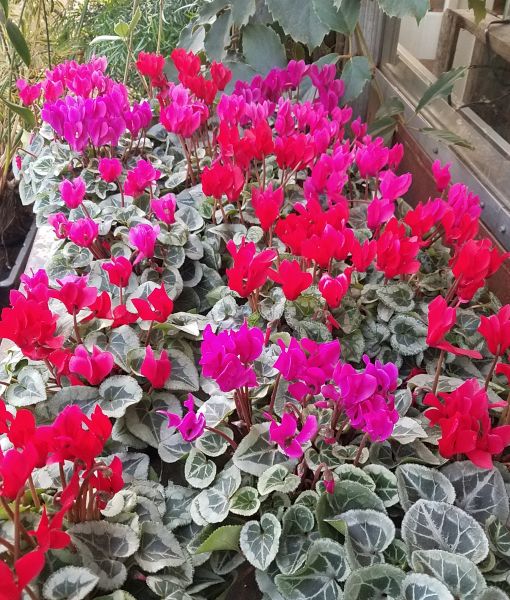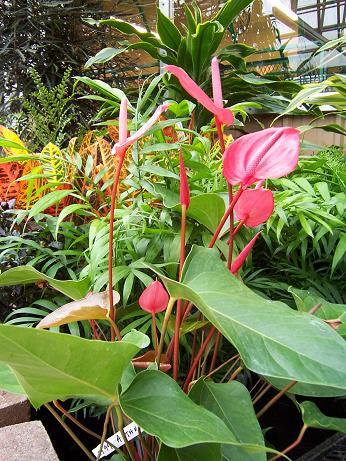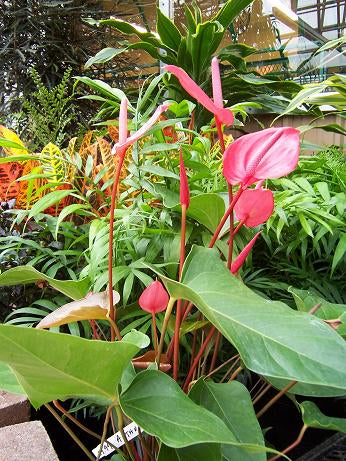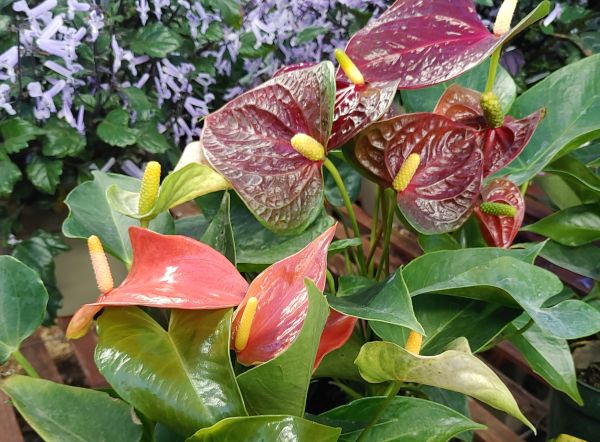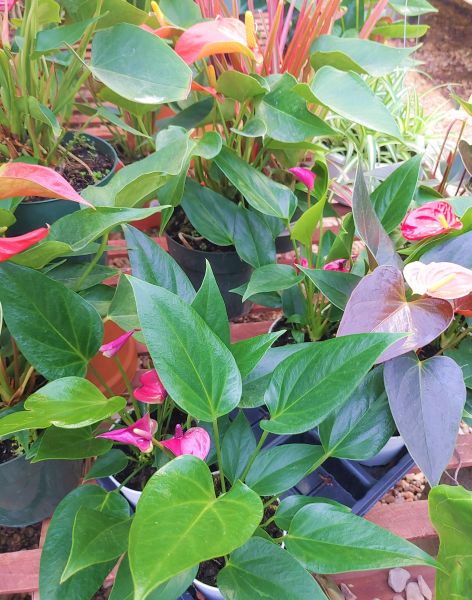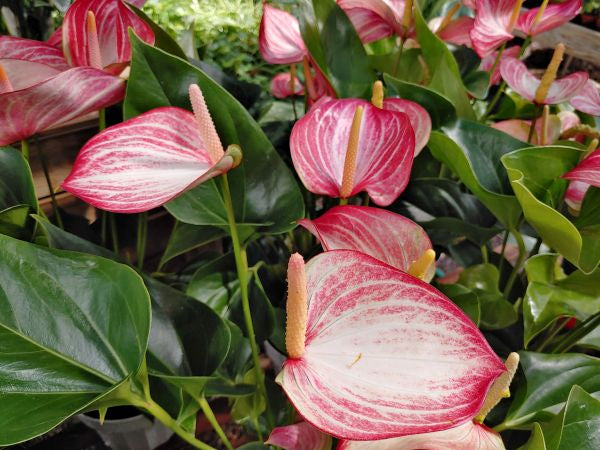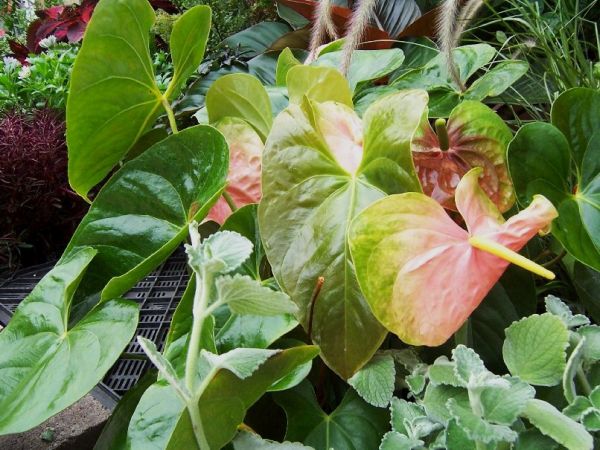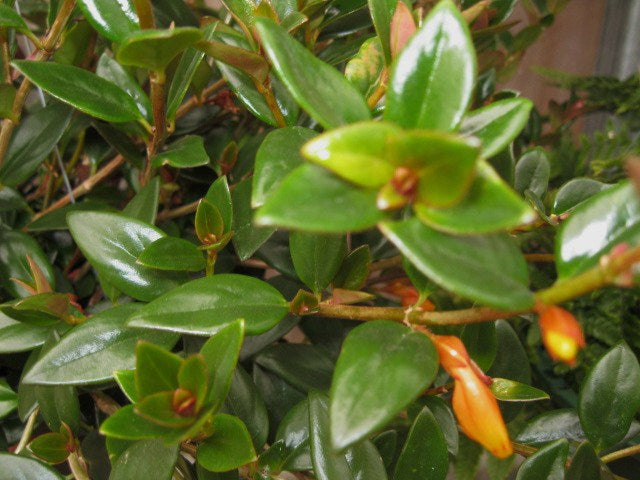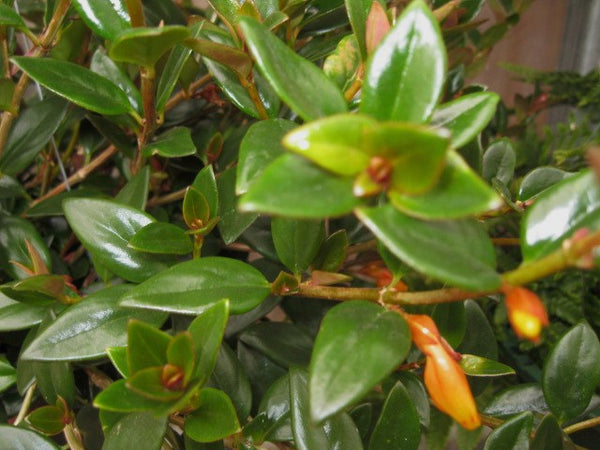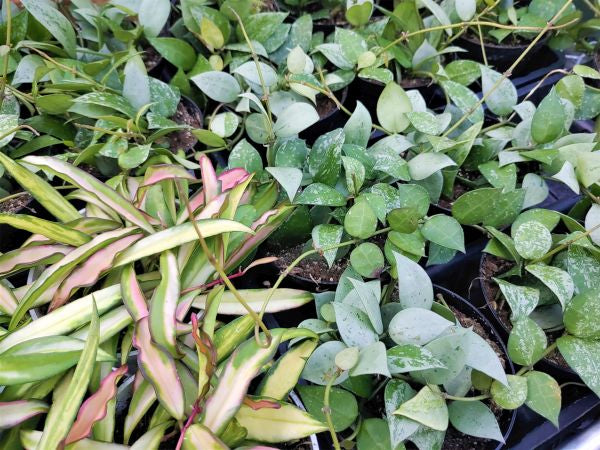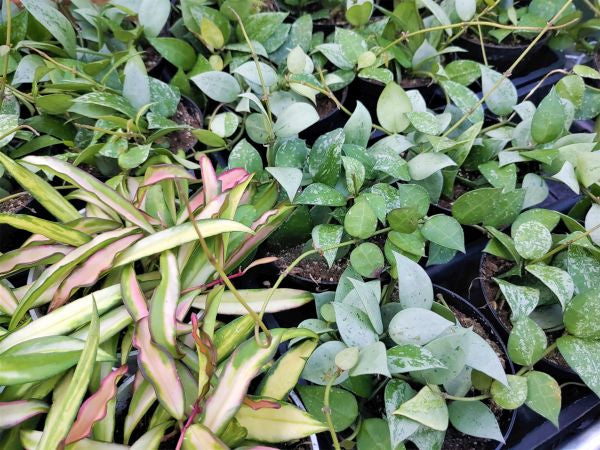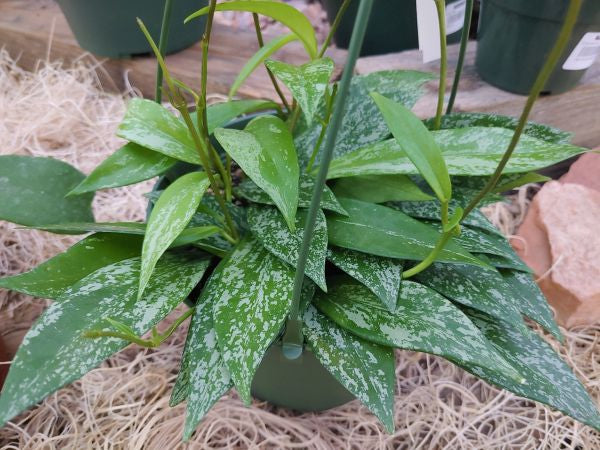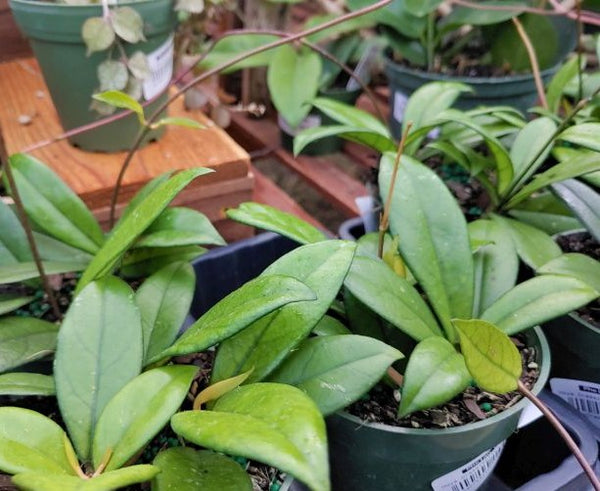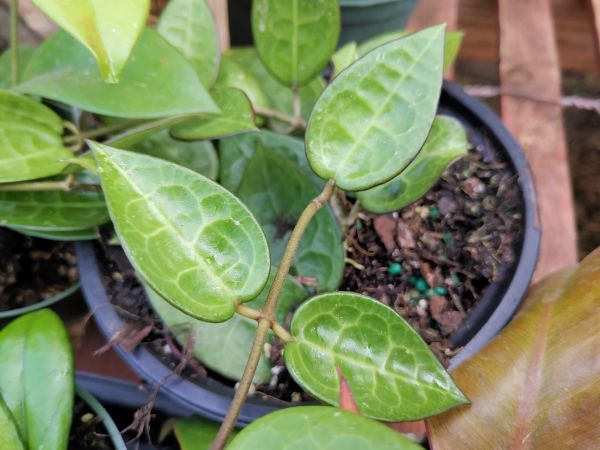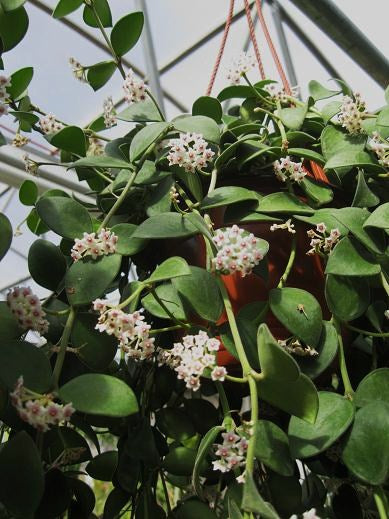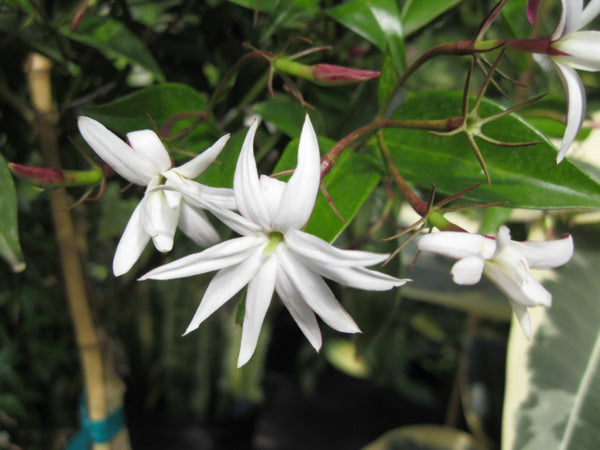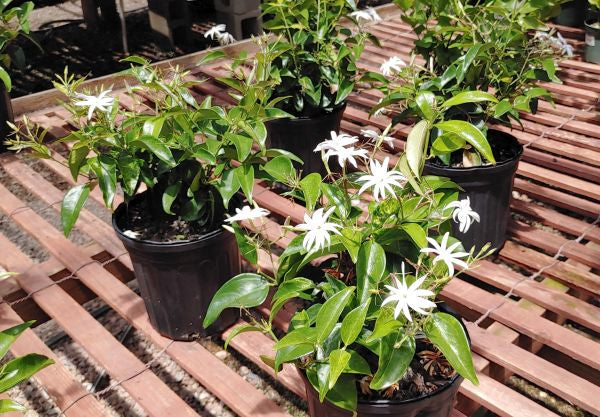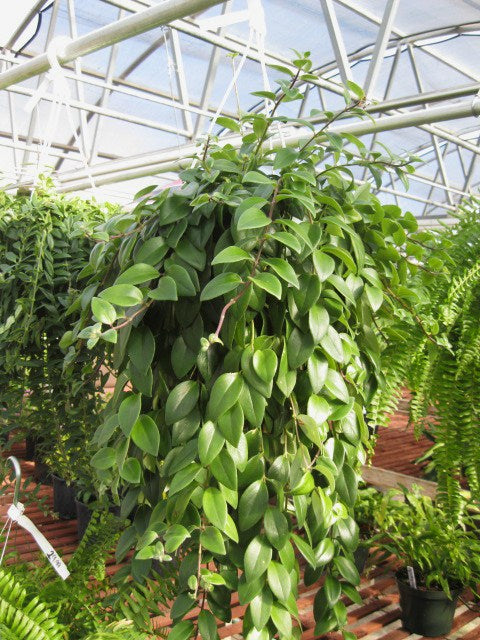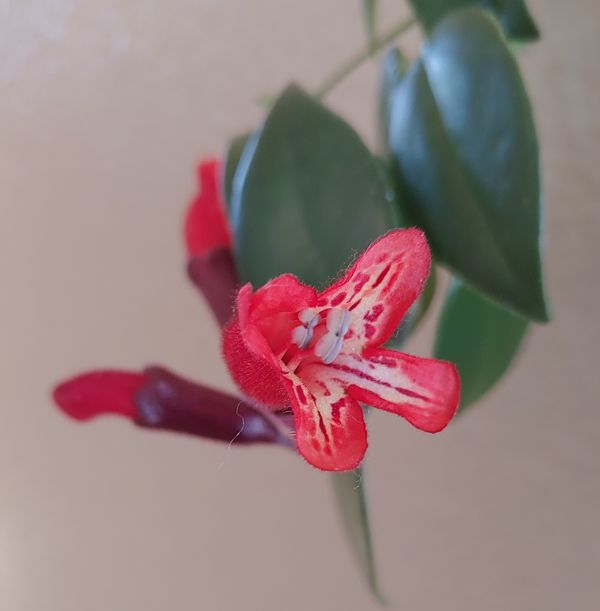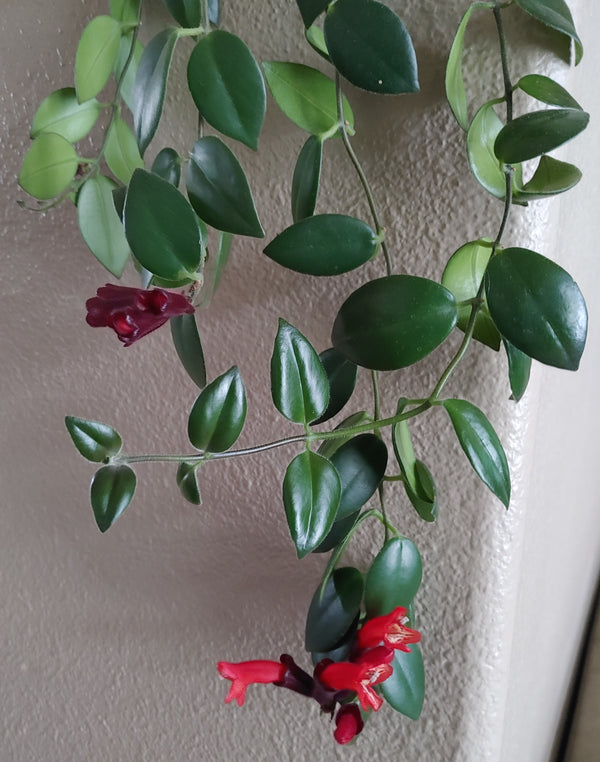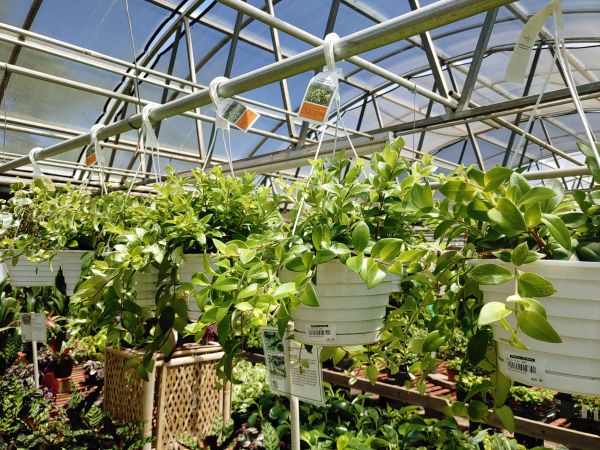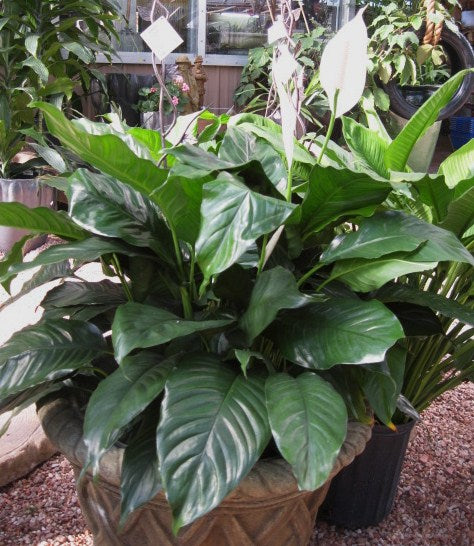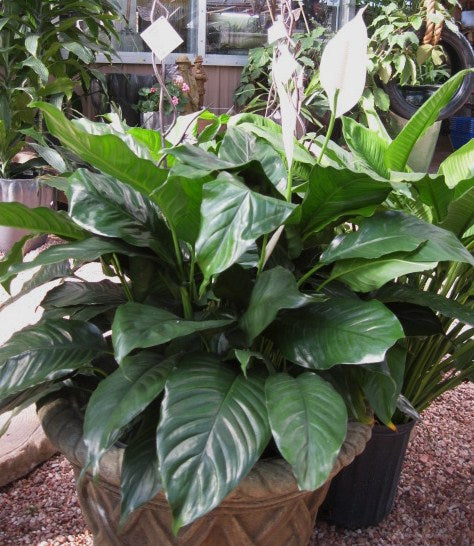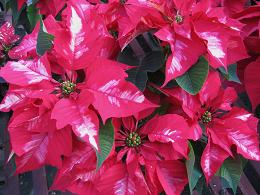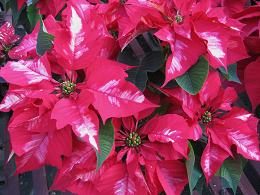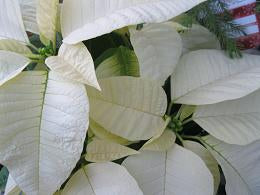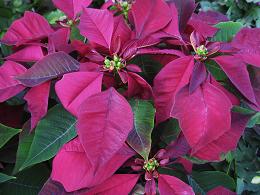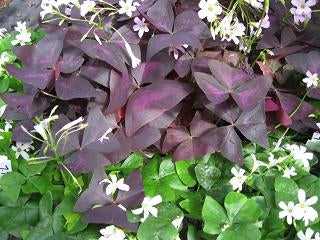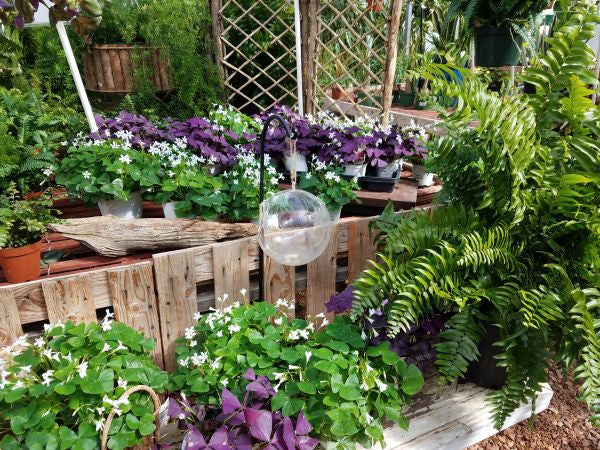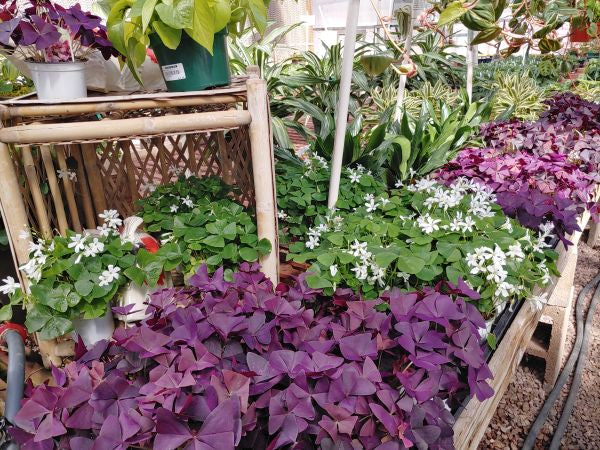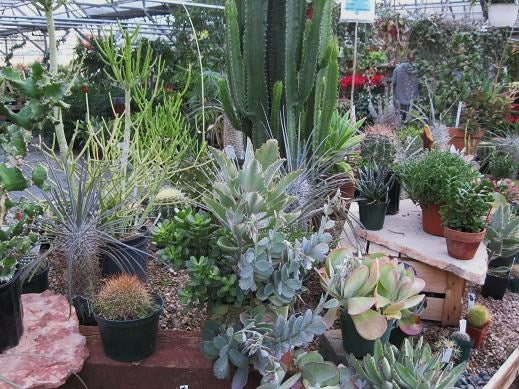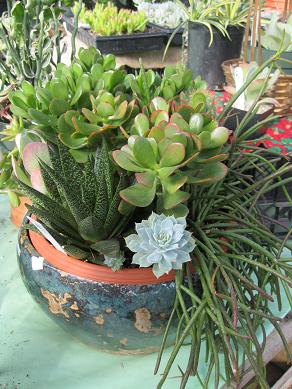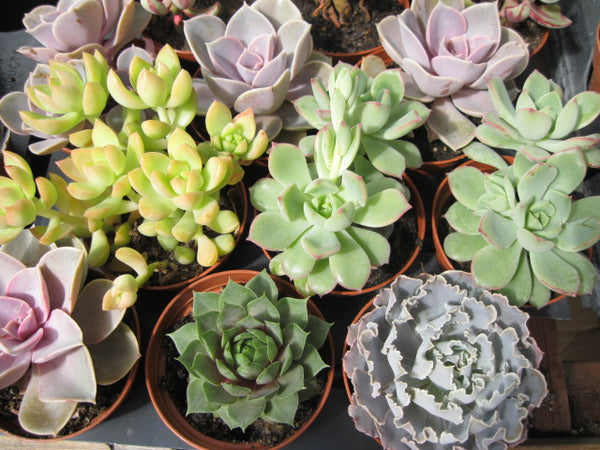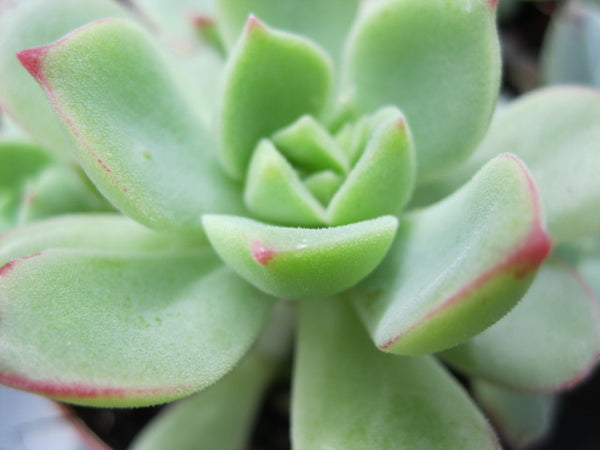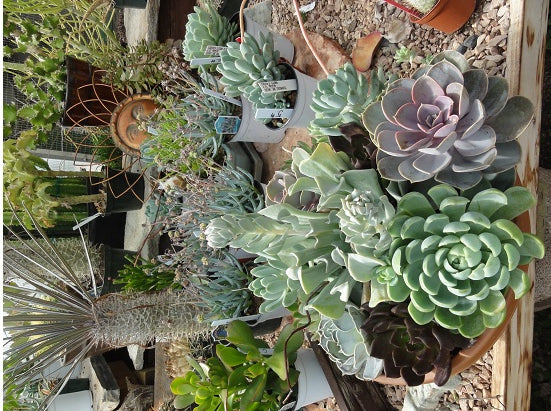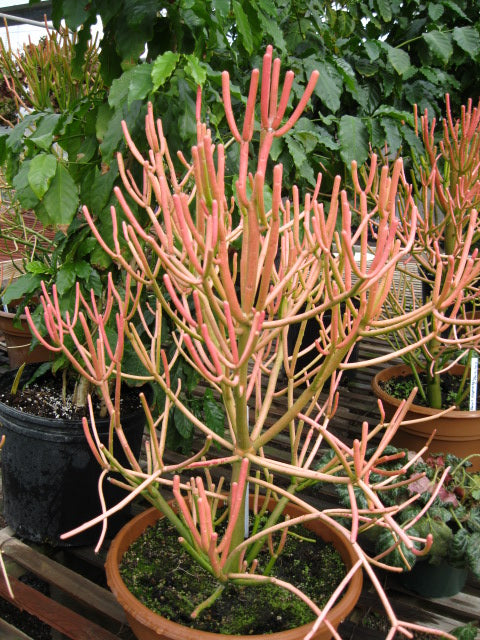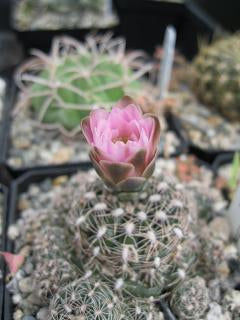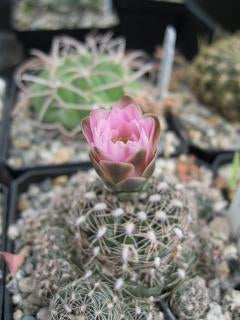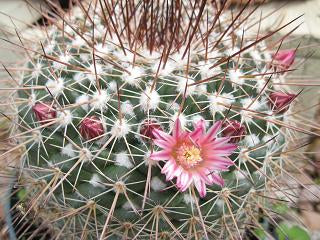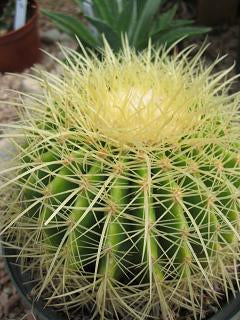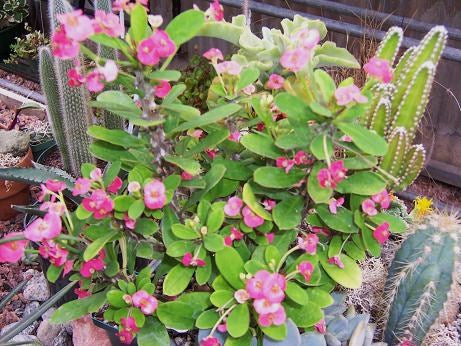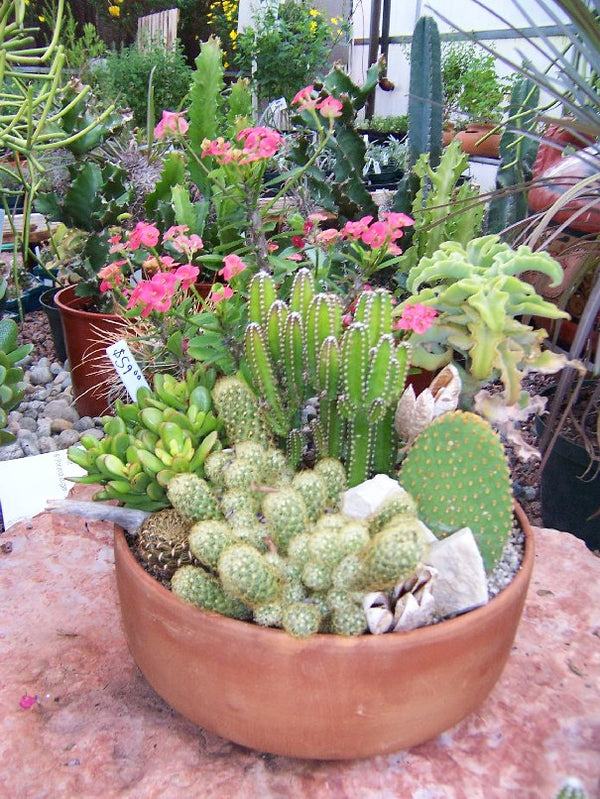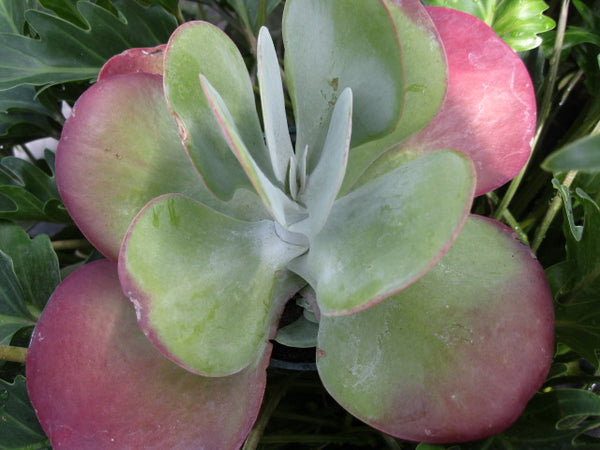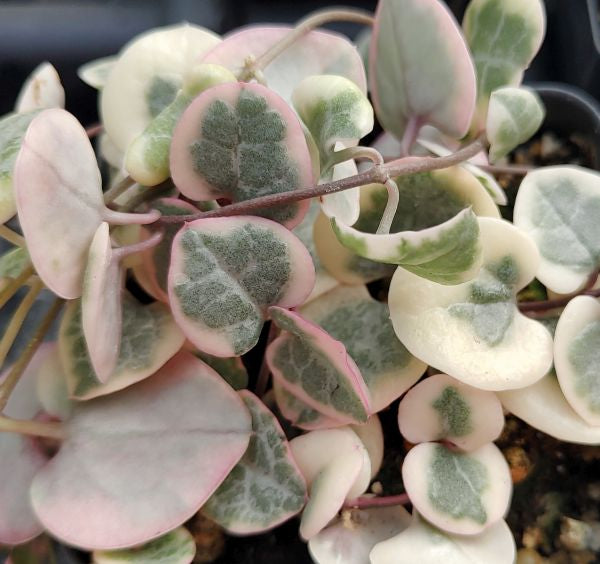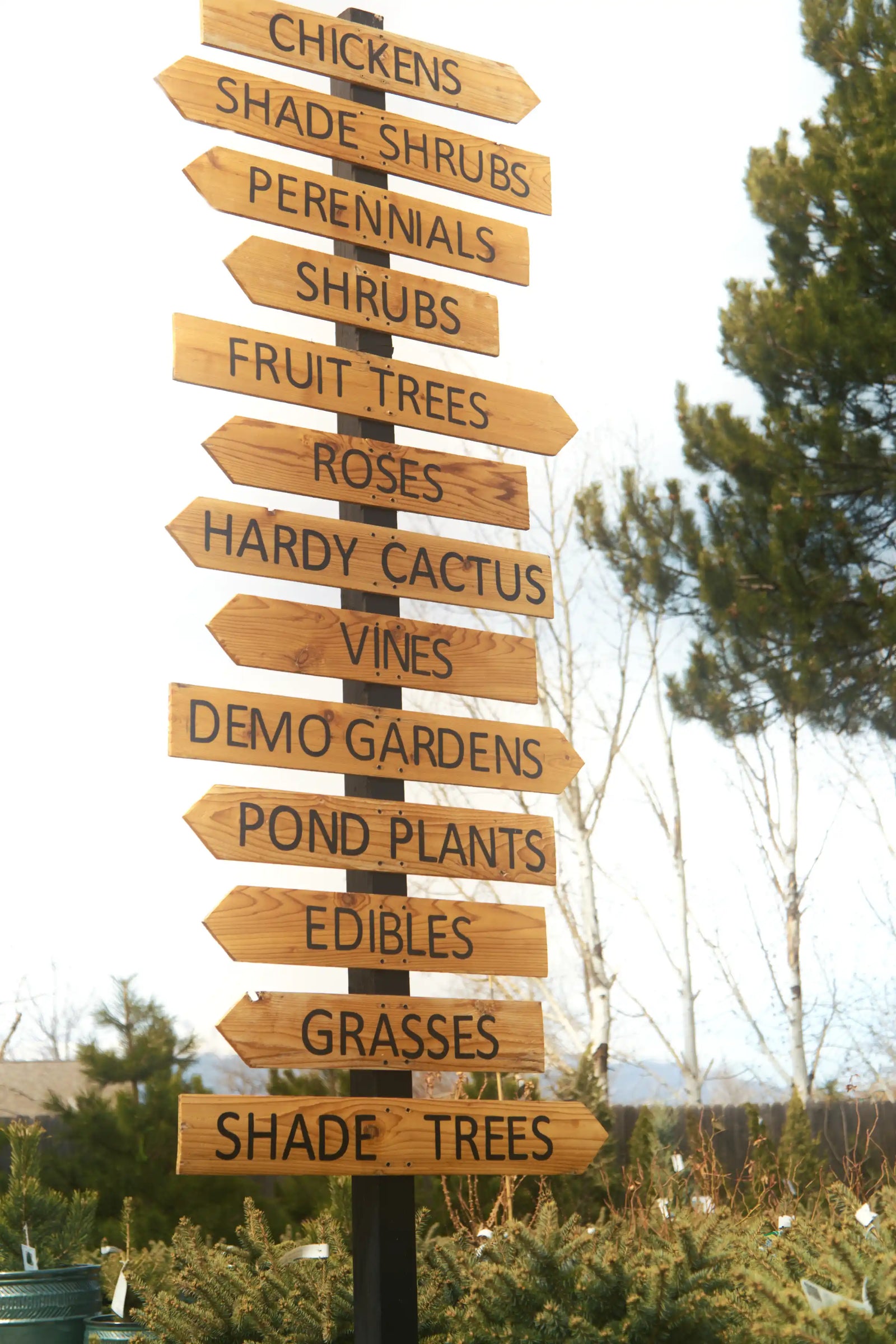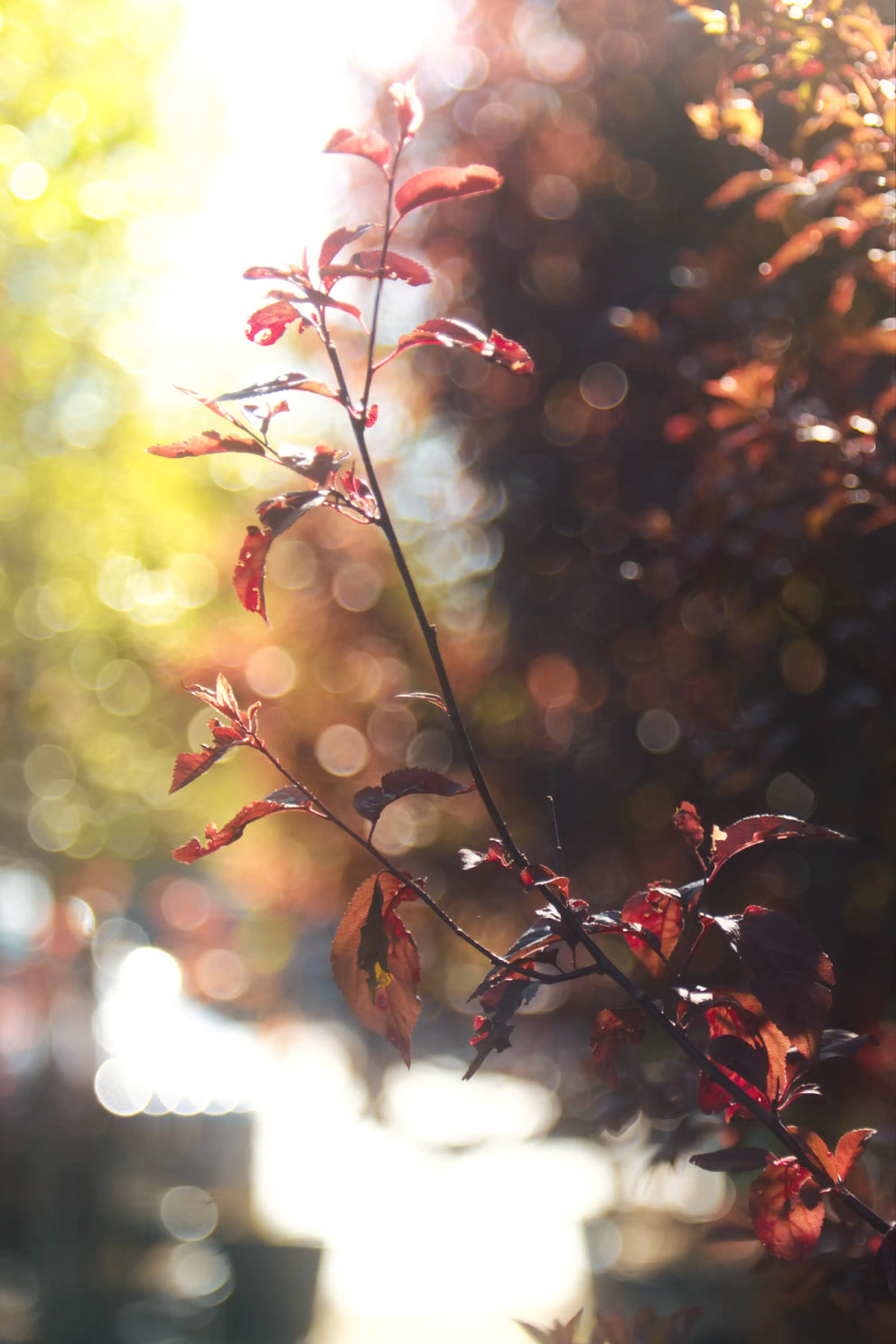A Breath of Fresh Air
Indoor plants help breathe life into your space. Many types also purify indoor air. Tropicals grace our greenhouse year-round. So, whether you need an indoor plant or want to blend them into your shady outdoor summer displays…so be it. We believe that begonias and ferns CAN live side by side in peace and harmony!
Success with indoor plants is easiest when you match your indoor environment to a plant's growing needs. First, determine where in your home you’d like your future houseplants to live. This will influence the size and type of plant to choose (smaller tabletop, floor plant, or one that can trail) Most plants will need natural light from a window somewhere in the room.
What Type of Light Do You Have?
Next, determine what type of light you have in that area: low (L), medium (M), bright indirect (BI), or bright direct (BD). Here is a light guide to help you determine what level you have. It is common for plants to be able to adapt to more than one light level. Most plants will do well in bright indirect light. But, if you have extremes—very low light, or bright direct light—make sure you select plants that can handle these conditions.
Although our stock varies by season and availability, below is a sample of the plants we quite often carry. Let us know if you are looking for something specific, and we’ll try to bring it in for you.
Want to plant a fairy garden or terrarium? We carry miniature starter plants that are good candidates for this use. These are types that will naturally stay small, are slow growers or respond well to trimming.
Repotting Services
If you want to refresh your existing houseplants...bring them in to us. Our reasonable re-potting service will have your plants looking new again.
Pet friendly Plants: Does your pet chew on the leaves of your plants? If so, you might consider choosing one that is KNOWN to be non-toxic to dogs and cats. This information can be found on the ASPCA website at: www.aspca.org. Their website offers an extensive searchable database for toxic & non-toxic plants of all types (be sure to use botanical names in their database) Click here for a list of pet friendly plants that we often have in stock.
Non-flowering Houseplants
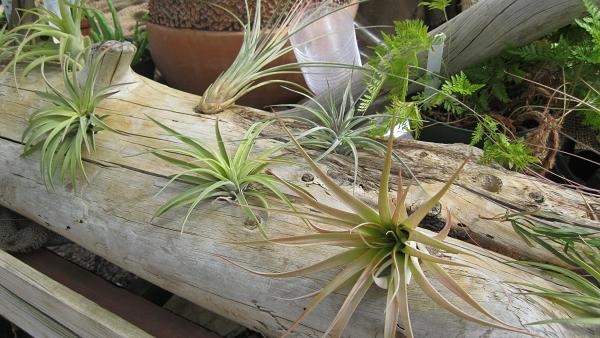
Air Plants (Tillandsia spp.)
Light Preference:
Medium or Bright Indirect
Water Needs:
No soil to water with these! They take in water through their leaves. Thoroughly wet/soak once or twice a week. Dry upside down so as not to rot the centers.
Notes:
These easy care plants are fun to display in a shallow tray with rocks or even seashells and are sometimes attached to decorative items such as lava rock or driftwood.
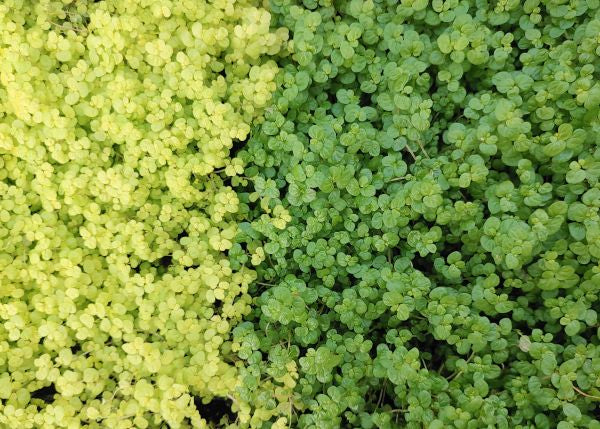
Angels’s Tears (Soleirolia soleirolii)
Light Preference:
Bright Indirect Light
Water Needs:
Prefers to be consistently moist, especially the golden variety.
Notes:
Teeny tiny green or golden leaves forms a dense, low growing mat. Wonderful if you want a “mossy” look in a terrarium.
Easy to grow, if it gets root bound, pot up or refresh soil so that it does not stress by going continually dry.
Note: This is a different plant from Baby’s Tears. It offers smaller leaves and requires more consistent watering.
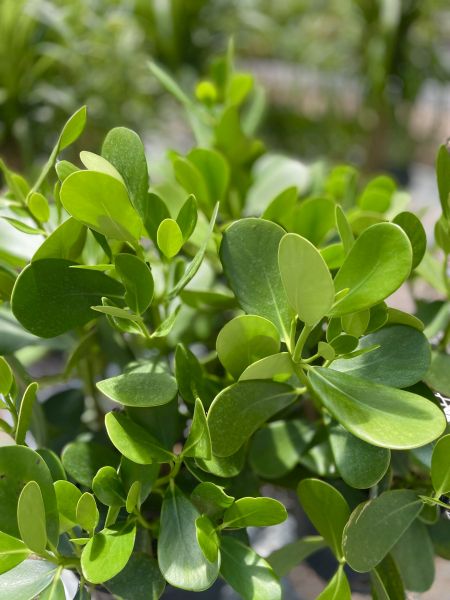
Autograph Plant a.k.a Clusia (Clusia)
Light Preference:
Bright Direct or Bright Indirect
Water Needs:
Allow rootball to go 1/2 way dry before watering well. Avoid waterlogging.
Notes:
Will grow to be a large bush in the home. Use fast-draining soil when potting up and only once the plant has filled the current pot. Grown indoors, this plant needs a lot of light. It’s a good choice for those bright West or South facing windows that tend to burn other tropicals. Can take as much light as a cactus indoors but needs more water.
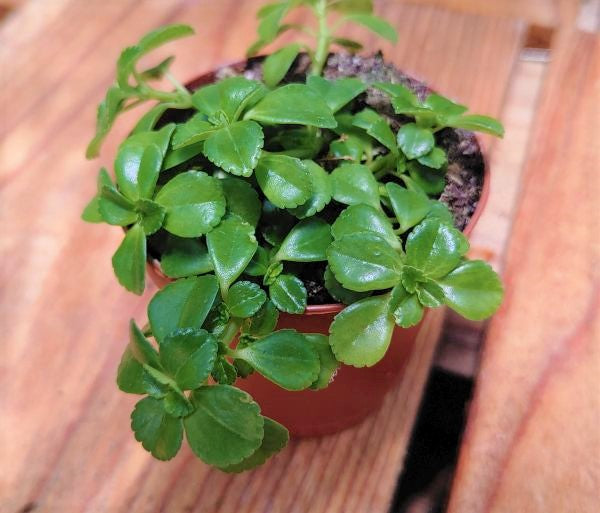
Baby Tears (Pilea)
Light Preference:
Bright Indirect Light
Water Needs:
Prefers to be consistently moist Moderate moisture is ok in
Winter and when roots have more room (ex. after dividing or potting up)
Notes:
Small shiny green leaves cover this easy low growing plant. Often used in terrariums or fairy gardens to create a dense groundcover, BUT it can also be put into hanging baskets or pots as it will trail a little if given the opportunity.
Variation:
There is also a silvery-blue leaf type that has a red stem - sometimes called “Aquamarine” Baby Tears.
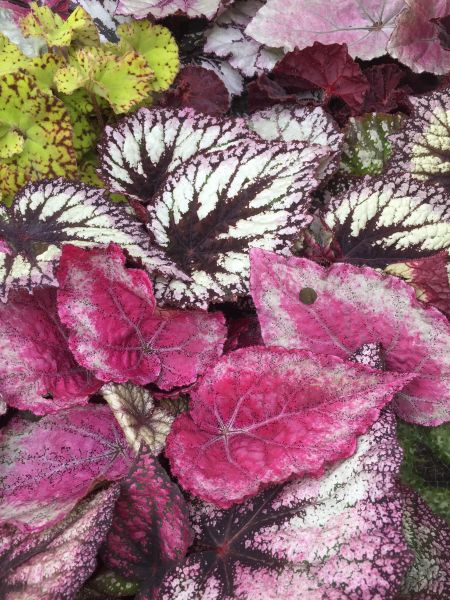
Begonia, Rex Fancy Leaf Types (Begonia rex)
Light Preference:
Medium to Bright Indirect
Water Needs:
Keep lightly moist. Allow surface to dry lightly between waterings. Water less in winter. Avoid overwatering.
Notes:
Lovely foliage in various shades and patterns. Repot every spring. Leaves of pot-bound plants can lose color. Prefers warm temps (min. 60 degrees).
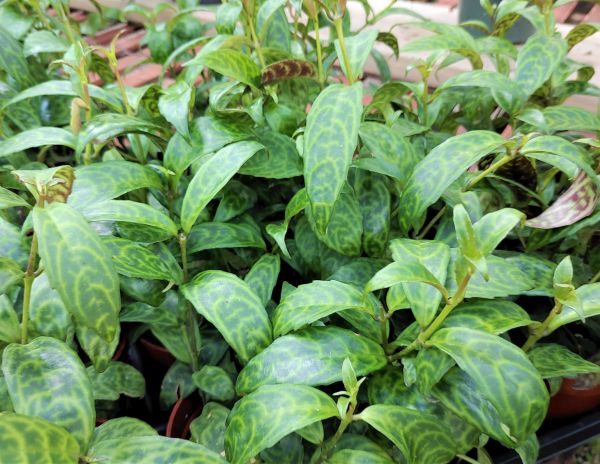
Black Pagoda Lipstick Plant (Aeschynanthus )
Light Preference:
Medium or Bright Indirect
Water Needs:
Rootball can approach dryness between waterings.
Notes:
Decorative patterned leaves adorn this easy care trailing lipstick plant. It will bloom light yellow tubular flowers similar to the lightest color on the leaf. Striking undersides of the leaves show off well when hung up. Easy to display in a tabletop manner as well. Very easy plant...great for beginners!
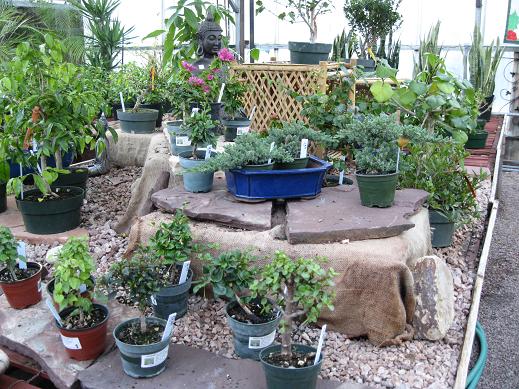
Bonsai (various species)
We mostly carry tropical bonsai which does well indoors. Many of our bonsai are considered "pre-bonsai"...woody plant starts that are at the beginning stages for you to be able to shape.
Light Preference:
Bright Indirect is fine for most
Water Needs:
Requires more water than typical houseplants since roots are constricted. Keep consistently moist but provide good drainage.
Some of the Bonsai Varieties We Offer:
*Ficus varieties
*Eugenia
*Schefflera (Schefflera arboricola)
*Pomegranate (Punica granatum)
*Jade (Crassula varieties)
*Fukien Tea (Carmona microphylla)
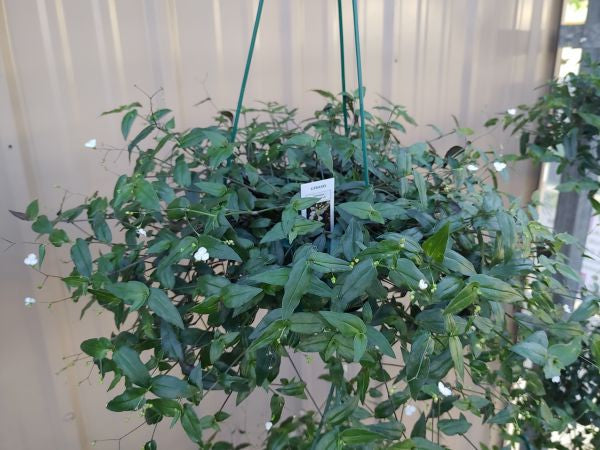
Bridal Veil, Tahitian Bridal Veil (Gibasis, formerly tradescantia)
Light Preference:
Bright Indirect
Water Needs:
Not picky...can be kept lightly moist or lightly dry. Just avoid soggy soil.
Notes:
Easy care plant with dainty leaves that have a purple hue on the underside. Blooms almost continuously in good light. Gets dotted with dainty white flowers. Easily trimmed to keep it looking bushy. Can be used in a hanging basket or pot.
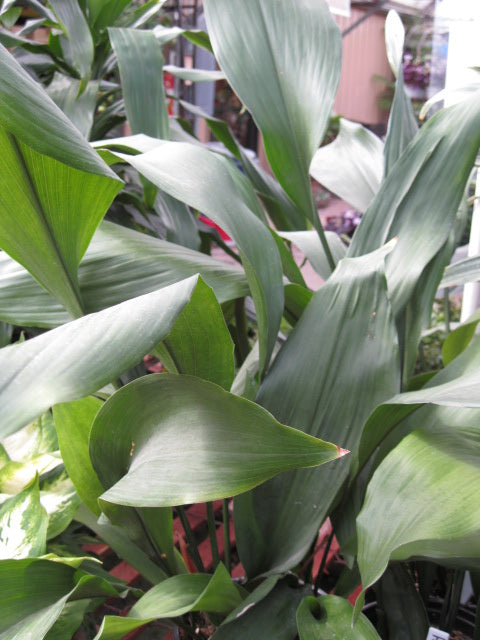
Cast Iron Plant (Aspidistra elatior)
Light Preference:
Low to Medium. Avoid direct sun.
Water Needs:
Let the surface go lightly dry between waterings. Water sparingly in winter.
Notes:
A durable plant with deep green leaves. Dislikes re-potting so only do so every 4-5 years. Easy care!
Variation: ‘Milky Way’ is a variegated version that has deep green leaves with decorative spotting.
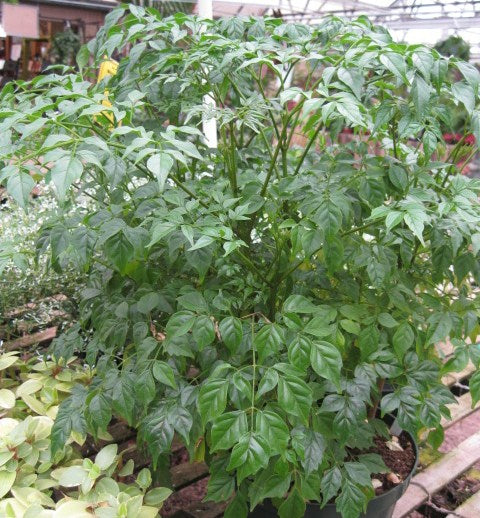
China Doll (Radermachera sinica)
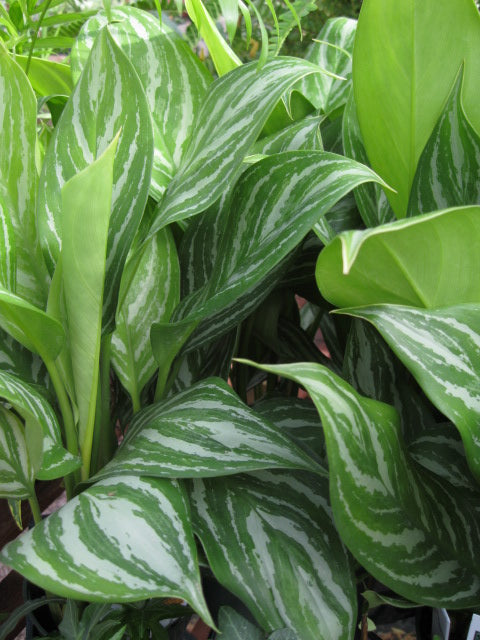
Chinese Evergreen, green leaf types (Aglaonema)
Light Preference:
Low to Medium Light. Dislikes bright light.
Water Needs:
Let the surface go lightly dry between waterings. Avoid waterlogging. Water sparingly in winter.
Notes:
A dependable, easy care plant. Wide variation in foliage color. The darker the leaf, the lower the light it can handle. Lighter leaves like medium light. Likes warm temperatures (minimum temp 60 degrees) Very slow growing. Ideal for extremely low light location.
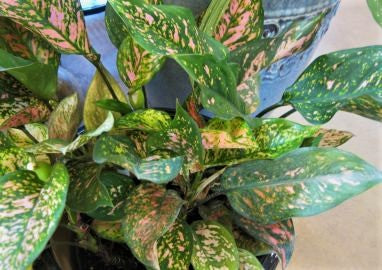
Chinese Evergreen, colorful leaf types (Aglaonema varieties)
Light Preference:
Medium Light or Bright Indirect for optimal leaf coloration. Will not keep good coloration in low light as will the green leaf types.
Water Needs:
Let the surface go lightly dry between waterings. Avoid waterlogging. Water sparingly in winter.
Notes:
These relatively new varieties of Chinese Evergreens boast all different color combinations of pink or red edging, veins, or speckles on their leaves. Some even have colorful stems. As with the green leaf types, they are dependable, easy care plants provided you keep them out of direct sun and don’t overwater them. Likes warm temperatures (minimum temp 60 degrees) Very slow growing.
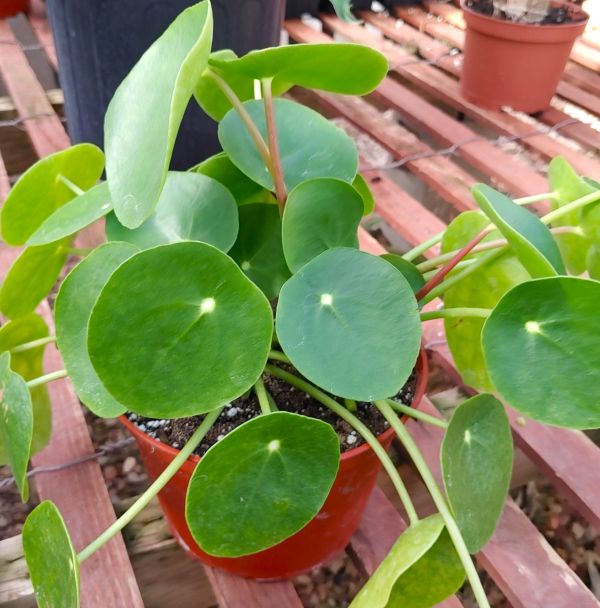
Chinese Money Plant (Pilea peperomioides)
Light Preference:
Bright Indirect
Water Needs:
Allow soil to go lightly dry between waterings. Water less in winter.
Notes:
Round “coin shaped” leaves extend out from the stem. Over time, the stem will grow up and the plant will naturally look more like a tree form. If you’d like to keep it looking bushy, make sure you add more than one plant to a pot. It will also make many more offset babies in the soil that you can leave with the mother or pot up to share with friends.
Tip: Be sure to rotate your plant so it doesn’t get a case of the “extreme leans” over time.
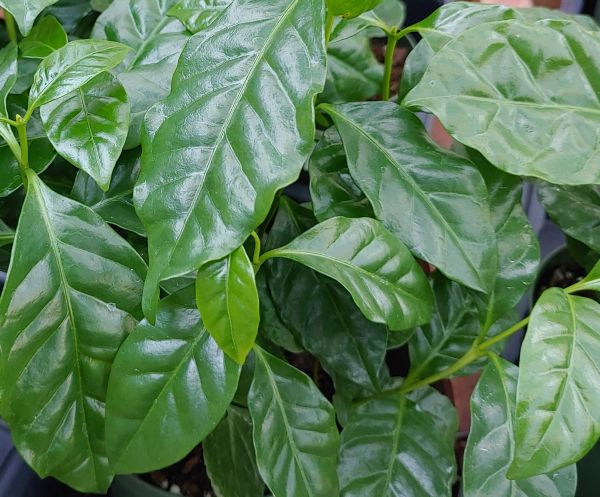
Coffee Plant (Coffea arabica)
Light Preference:
Bright Indirect
Water Needs:
Likes to be consistently moist, but avoid waterlogging.
Notes:
Naturally dark shiny green leaves. May flower occasionally, but not likely to develop coffee beans indoors for most people. Can reach 5 feet indoors, but is easily pruned to control size, and encourage bushiness.
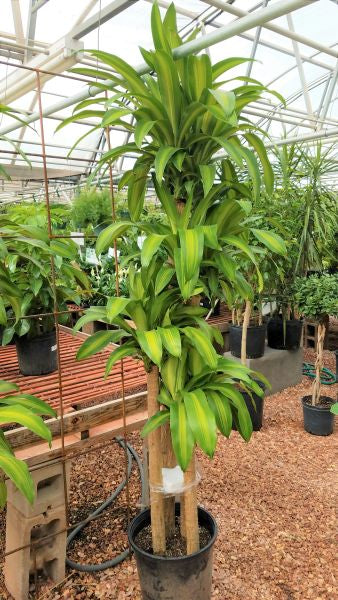
Corn Plant (Dracaena fragrans ‘Massangeana’)
Light Preference:
Low to Medium Light.
Water Needs:
Keep the soil moist, not soggy. Reduce water in winter so that the surface dries, but don’t let compost completely dry out.
Notes:
A dependable, easy care floor plant that can offer height in a narrow space. It can reach 6ft or more. If it gets taller than you like, you can saw the cane to desired height and it will sprout new leaves.
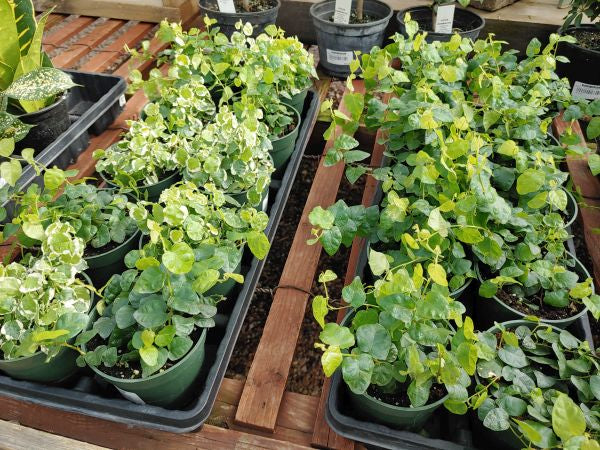
Creeping Fig (Ficus Repens)
Light Preference:
Bright Indirect
Water Needs:
Consistent, even watering is best, aim for lightly moist by watering when the surface dries.
Notes:
A popular vining type Ficus. Grown as a trailing plant in a pot or hanging basket. Also popular for larger terrariums as it is easy to root on wood or train where you want it to grow. If it gets too long for your liking, simply trim it back. As with all Ficus, its roots fill a pot quickly. If it starts to outgrow your pot, increase pot size OR remove and refresh the bottom 1/3 of your soil to keep it happy.
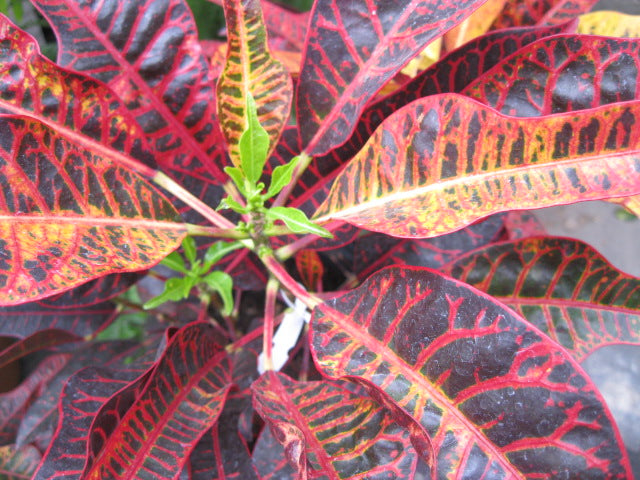
Croton (Croton)
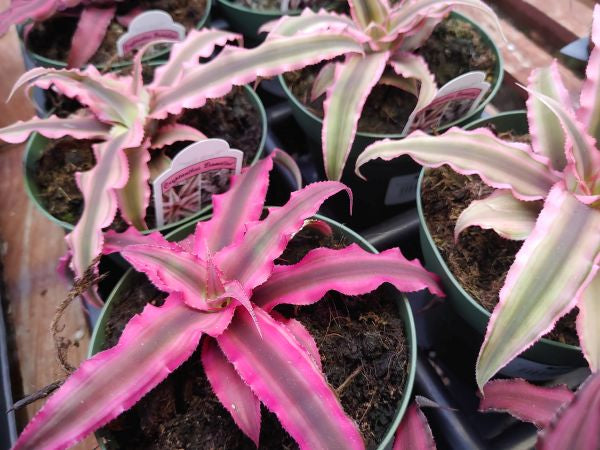
Cryptanthus a.k.a Earth Star (Cryptanthus )
Light Preference:
Bright Indirect
Water Needs:
Prefers lightly moist but can approach dryness. Brown tips= too dry. Watering frequency will increase in Winter due to dry indoor air if it is not housed in a terrarium setting.
Notes:
Related to other bromeliads, this easy and versatile plant is at home in both terrariums or mixed into succulent gardens with similar light needs. Varieties offer striped leaves in pink, red, silver, and green. Native to Brazil, this plant will love humidity but also does well as a houseplant in Colorado without added misting. Grows in many types of mediums as long as it drains quickly.
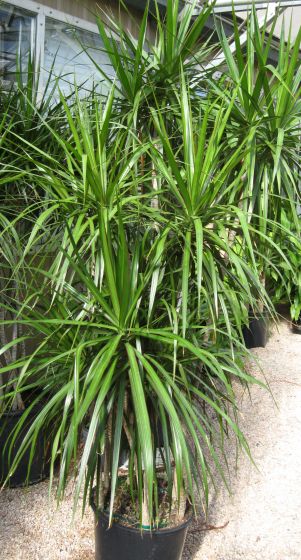
Dracaena Dragon Tree (Dracaena marginata)
Light Preference:
Low, Medium or Bright Indirect
Water Needs:
Prefers moist soil. Reduce water in winter so that the surface dries, but don’t let compost completely dry out.
Notes:
A dependable, easy care floor plant that can offer height in a narrow space. It can grow up to 10ft tall. If it gets too tall, canes can be cut to the desired height and leaves will eventually re-emerge. This is best done in late Spring or Summer during our warmest months.
The variety 'Tricolor' has pink and green leaves and is often offered as a small starter plant.
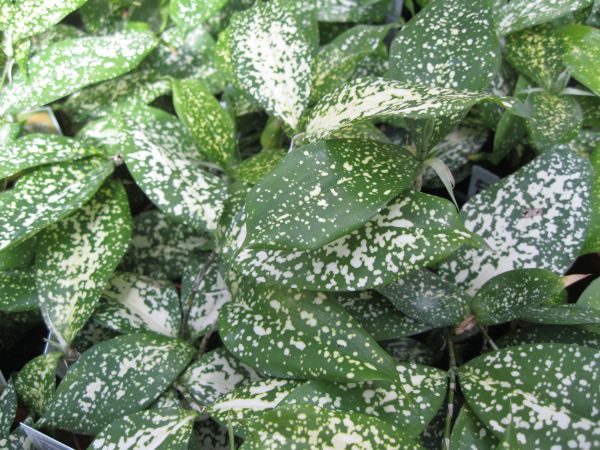
Dracaena ‘Florida Beauty’ (Dracaena surculosa formerly: godseffiana)
Light Preference:
Medium to Bright Indirect
Water Needs:
Prefers moist soil. Reduce water in winter so that the surface dries, but don’t let compost completely dry out.
Notes:
This type of Dracaena offers pretty rounded leaves with distinct markings. ‘Florida Beauty’ has spotted creamy white & green variegation. Unlike other Dracaenas, this type has a bushier habit and will stay small (2 feet maximum). Slow growing. Easy care. ‘Gold Dust’ has yellow/green variegation.
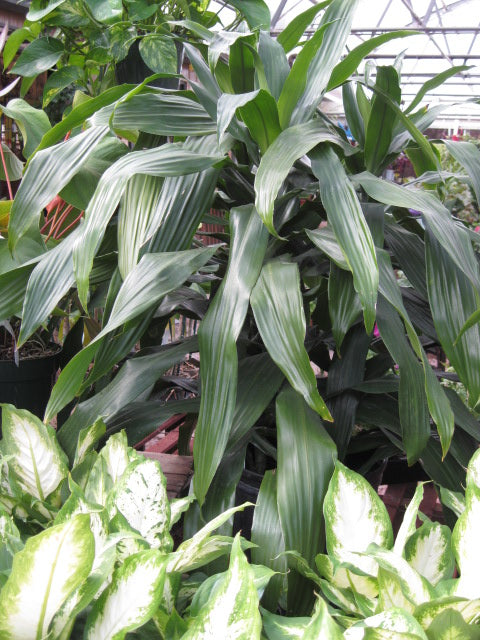
Dracaena ‘Janet Craig’ (Dracaena deremensis)
Light Preference:
Low to Medium
Water Needs:
Prefers lightly moist, but not boggy soil. Reduce water in winter so that the surface dries, but don’t let compost completely dry out to the bottom of the pot.
Notes:
Slow growing type with deep green arching leaves. Can reach 5ft-8ft tall indoors. Prefers warm temperatures.
Variations:
Janet Craig 'Compacta'... also wonderful for low light but will be much smaller in size at maturity with a much tighter growth habit
'Variegated' Janet Craig and 'Art' have green leaves edged in yellow.
'Limelight' and 'Neon have lime green leaves.
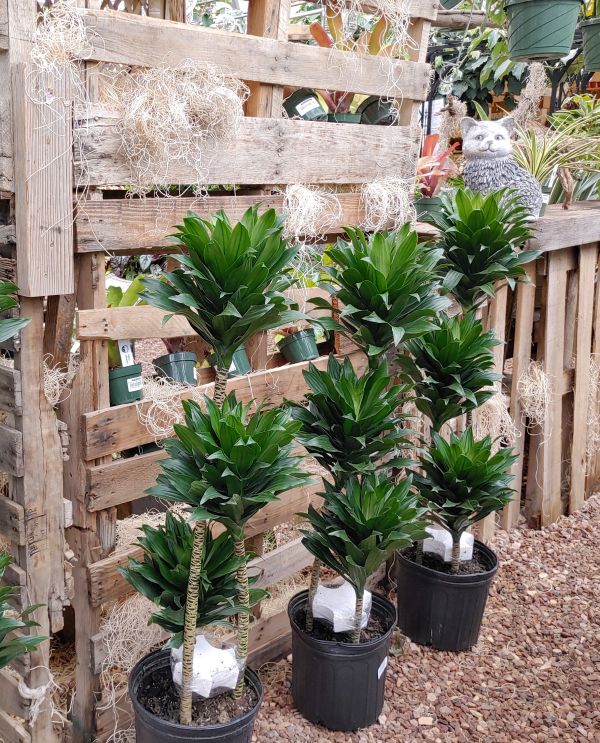
Dracaena 'Janet Craig Compact' Dracaena (Dracaena deremensis compacta)
Light Preference:
Low, Medium or Bright Indirect
Water Needs:
Prefers moist soil. Reduce water in winter so that the surface dries, but don’t let compost completely dry out.
Notes:
A slow growing, easy care plant with deep green leaves. It is a smaller version of the taller ’Janet Craig’ Dracaena. Leaves are more tightly held giving it an upright busy look. Indoors, expect a height of 2’-3’ after many years of growth.
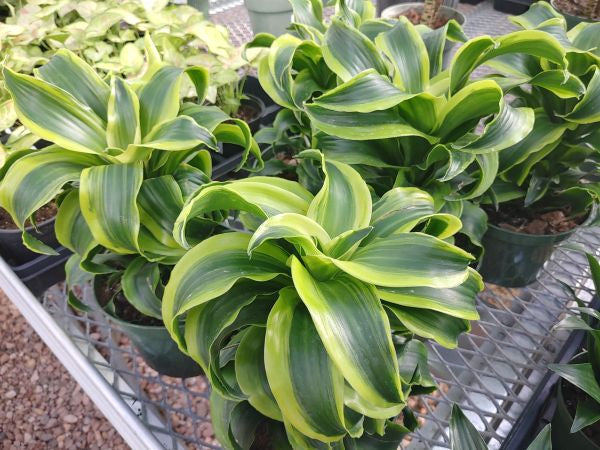
Dracaena ‘Tornado’ (Dracaena)
Light Preference:
Low, Medium, Bright Indirect
Water Needs:
Prefers lightly moist soil in Summer. Reduce water in winter so that root ball dries about 1/2 way down. Don’t let compost completely dry out.
Notes: A dracaena with a twist! Green leaves edged in yellow grow in a spiral pattern. An easy care plant that is great for
beginners and will tolerate lower light levels.
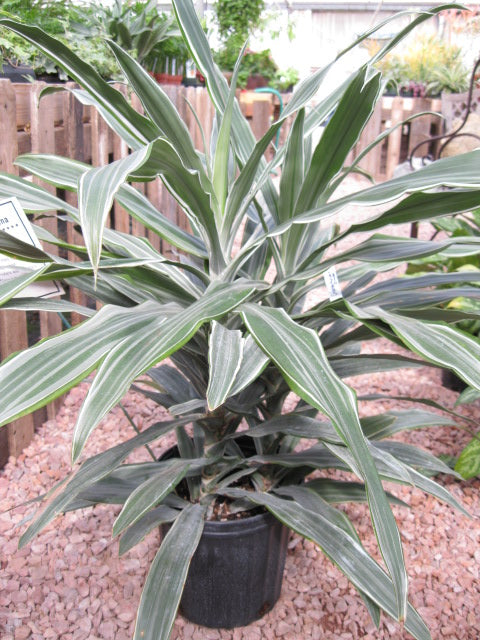
Dracaena ‘Warneckii’ (Dracaena deremensis ‘Warneckii’)
Light Preference:
Low to Medium
Water Needs:
Keep compost moist, not boggy. Reduce watering in winter but do not allow to dry out.
Notes:
An upright, durable plant that is slow growing. Also known as a ‘Striped Dracaena’ the colorful markings are most pronounced on new growth. Can grow up to 4ft tall indoors.
Variations:
Lemon Lime Dracaena and Warneckii 'Gold Star' are edged in yellow
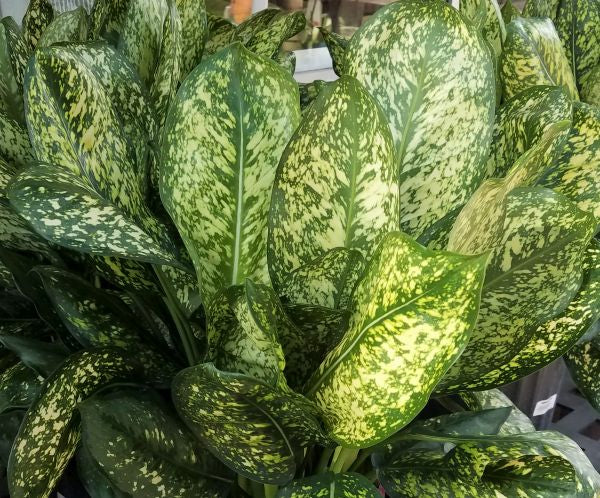
Dumb Cane (Dieffenbachia)
Light Preference:
Low to Medium
Water Needs:
Let surface dry between waterings. Water sparingly in winter.
Notes:
Highly decorative leaves on an upright plant. Must have warm temperatures (min. 60 deg). Some varieties can reach 5ft at maturity though many will remain shorter.
Makes a nice tabletop plant when young.
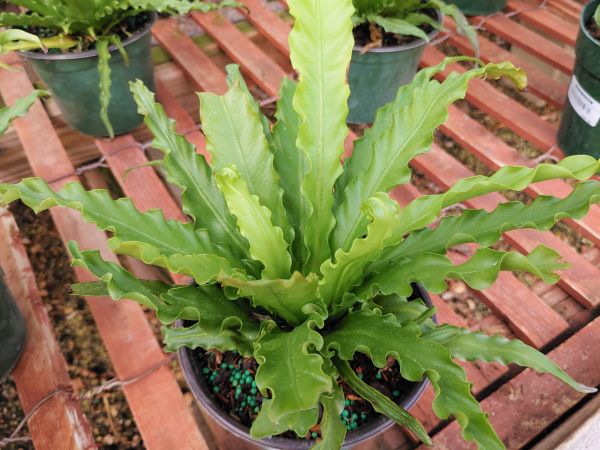
Fern: Bird’s Nest varieties (Asplenium varieties)
Light Preference:
Bright Indirect
Water Needs:
Consistent watering but allow the top few inches to dry. Less frequent in Winter.
Notes:
Named for their distinct growth pattern. Medium green leaves can be smooth, wavy, frilly, twisted, crinkly, spiral, or clubbed based on the type. They form new growth from the center that is low at first before unfurling. Long-lived but slow growing plant. Humidity is great but avoid boggy conditions to avoid rot. To that end, grow in light but well drained soil. They may be slow to dry out compared to other houseplants.

Fern Blue Star (Phlebodium aureum)
Light Preference:
Medium to Bright Indirect
Water Needs:
Can keep soil in a moist to lightly dry range as this isn't a fussy fern. Provide good drainage so that roots never sit in water.
Notes:
Easy to grow ferns that adapt to dry indoor air and produces lots of fronds. Deeply lobed green-gray foliage on thin stalks. Will easily reach 2’-3’ with basic care and good light. When roots fill current pot completely, either upsize or refresh the bottom 1/3 of soil to avoid stress.
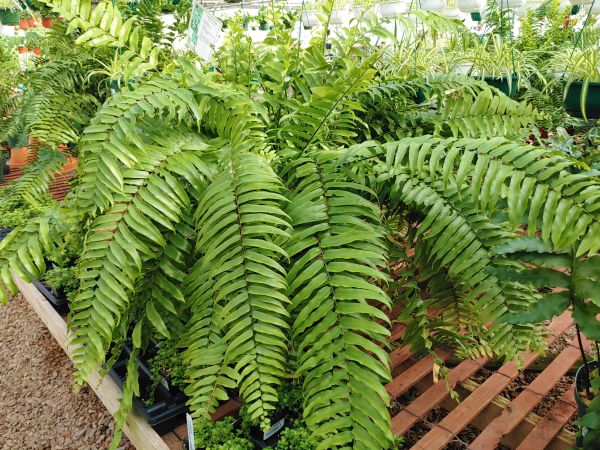
Fern Macho (Nephrolepis biserrata )
Light Preference:
Bright Indirect or Bright Direct
Water Needs:
Consistent watering but allow the top few inches to dry. Less frequent in Winter.
Notes:
As the name implies, this beautiful type of Boston fern can get quite large at 3-4’ indoors. Lovely arching fronds. As with all ferns, it can quickly fill up a container. Keep them happy by upsizing gradually OR refresh each season by removing the bottom 1/3 of the root mass and adding new soil.
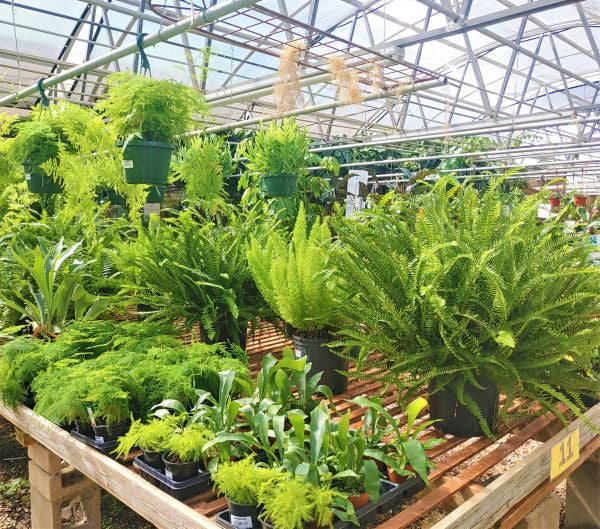
Fern Other Varieties
Light Preference: Bright Indirect, some types don't mind direct light.
Water Needs: Keep compost moist, not soggy.
Notes:
We offer both trailing and upright types of Boston Ferns which are both pet friendly according to the ASPCA. We also offer other "true" ferns. While all ferns would love the humidity of a bright bathroom, many types are not fussy in our environment.
Boston types (trailing, Macho, Kimberly, Jester, Chester), Kangaroo, Blue Hare's Foot, Blue Star, and Staghorn all adapt well to our dry climate. Some others may want some added humidity as with misting, a humidifier OR housing them in a terrarium or large open glass container.
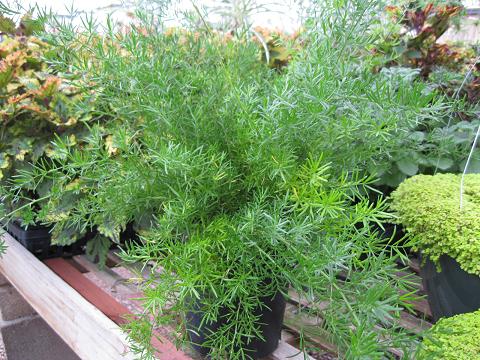
"Fern" Asparagus (Asparagus densiflorus ‘Sprengeri’)
Light Preference:
Bright Indirect to Bright Direct
Water Needs:
Not fussy as long as it doesn’t sit in water or get boggy. Lightly moist to lightly dry between waterings.
Notes:
Often sold as an annual plant for outdoor pots, this plant is equally at home in a bright spot indoors. Green leaves will develop into an arched trailing habit. NOT a true fern, this plant is related to Asparagus and Lilies. Though beautiful, it is not pet friendly.
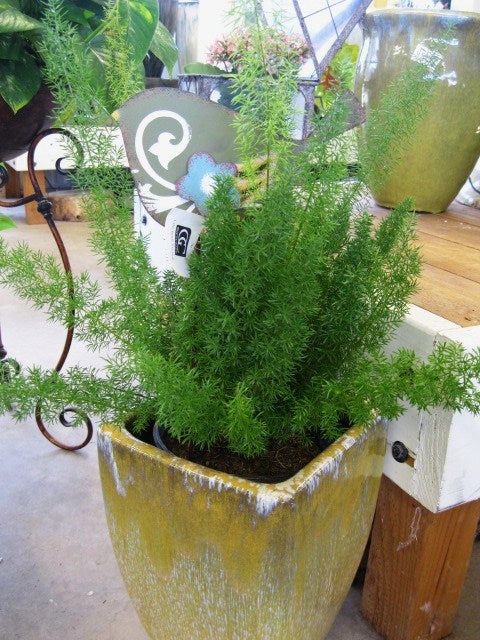
"Fern" Foxtail (Asparagus densiflorus ‘meyeri’)
Light Preference:
Bright Indirect or Bright Direct
Water Needs:
Allow surface to go dry between
waterings. Water less in winter.
Notes:
Very easy to grow. Upright bottle-brush plumes resemble a fox tail. Although not a true fern, it is related to the Asparagus and Lilies. Though beautiful, it is not pet friendly. Indoors it will spread 2ft wide. Can also be used outdoors in shade during the warm growing season.
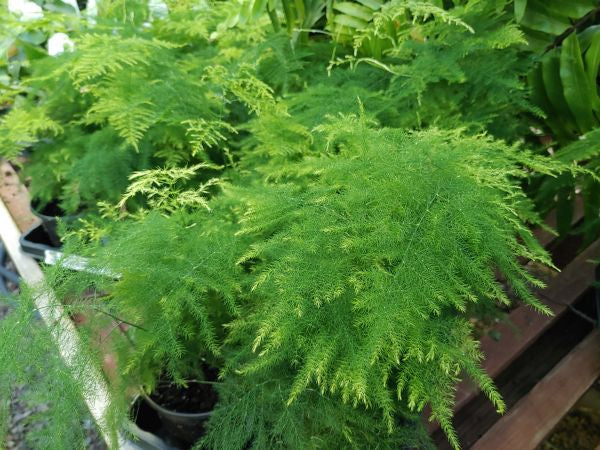
“Fern” Plumosa (Asparagus plumosus, Asparagus setaceaus)
Light Preference:
Bright Indirect
Water Needs:
Lightly moist, requires more consistent watering than other asparagus ferns. But, reduce in Winter and avoid boggy conditions.
Notes:
Airy, delicate looking fronds will grow upright and can get quite tall over time.
Humidity, such as in a bright bathroom is helpful. NOT a true fern, this plant is related to Asparagus and Lilies. Though beautiful, it is not pet friendly.
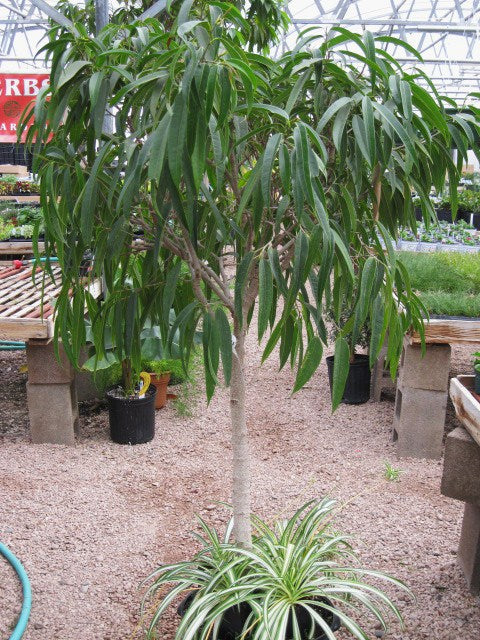
Ficus ‘Alii’ (Ficus binnendiijkii)
Light Preference:
Bright Indirect with Bright Direct at least part of the day or Bright Direct location
Water Needs:
Allow soil to go lightly dry between waterings. Water less in winter. Do NOT allow soil to become waterlogged.
Notes:
This hybrid ficus makes a nice floor plant. Leaves are medium green, long and slender. Mature height is usually 8’-10’ indoors but can get taller in good conditions. Keep all
ficus away from cold drafty areas. Avoid abrupt changes in temperature and water.
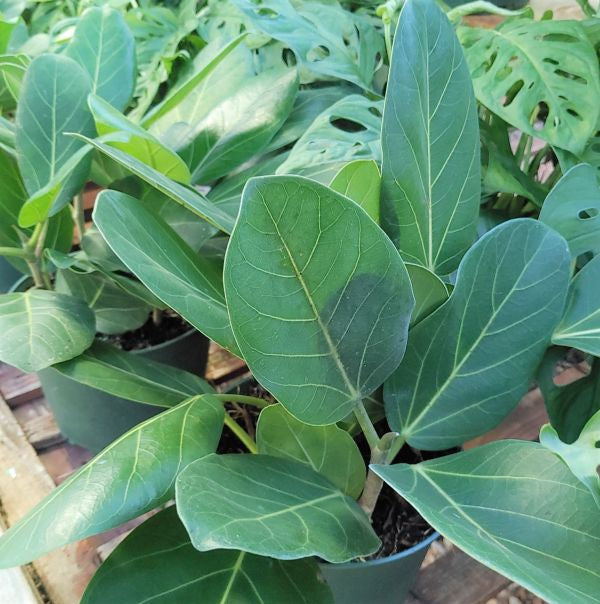
Ficus ‘Audrey’ a.k.a. Banyan Fig (Ficus benghalensis)
Light Preference:
Bright Indirect
Water Needs:
In Summer, allow to dry a few inches down. Water less in winter when plant growth is minimal. Do NOT allow soil to become waterlogged.
Notes:
This type of banyan fig will grow to be a tree in your home of up to 10’ or more. It likes humidity but will tolerate indoor conditions if sited correctly. Best to keep all ficus away from cold drafty areas and heater vents and avoid abrupt changes in temperature and water.. A few feet from a South or West facing window would work well for light. Also very important to provide well-draining soil! Can use a peat based potting soil but mix in 30% perlite or succulent soil.
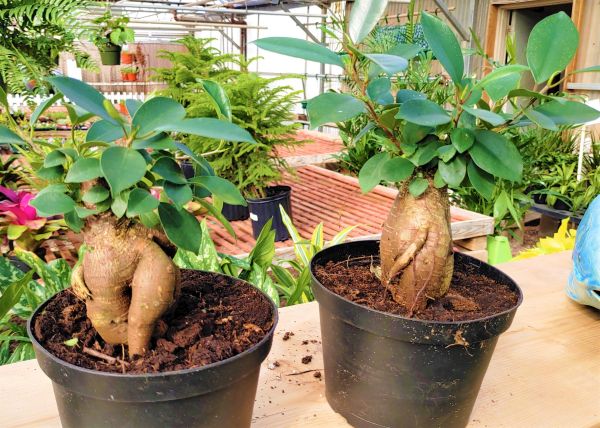
Ficus ‘Ginseng’ (Ficus microcarpa ‘Ginseng’)
Light Preference:
Bright Indirect
Water Needs:
In Summer, allow to dry a few inches down. Water less in winter when plant growth is minimal. Do NOT allow soil to become waterlogged.
Notes:
Though not related to Ginseng, it is given this name for it’s thick bulbous roots that look similar. Many people like to use them as a bonsai. But, they may be grown as an average, easy care houseplant as well. Their roots come in all shapes and sizes and offer so much character. Aerial roots will form in more humid conditions. A great ficus for beginners! Best to keep all ficus away from cold drafty areas and heater vents and avoid abrupt changes in temperature and water. Also very important to provide well-draining soil! Use a peat based potting soil but mix in 30% perlite or succulent soil.
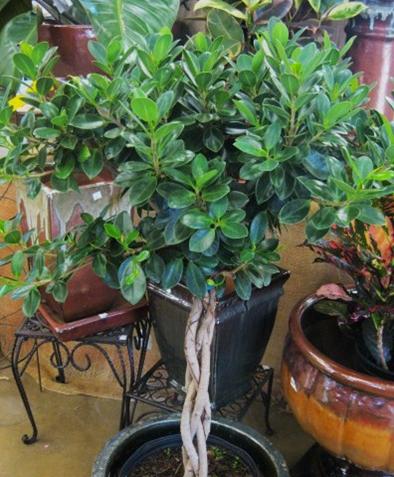
Ficus Green Island --a.ka. Indian Laurel Fig, Chinese Banyan (Ficus microcarpa)
Light Preference:
Bright Indirect to Bright Direct
Water Needs:
Allow surface soil to go lightly dry between waterings. Water less in winter. Do NOT allow soil to become waterlogged.
Notes:
This slow growing ficus is one of the easiest to grow. An attractive houseplant, it offers thick, rounded green, leaves. It makes a nice floor plant
that, at maturity, can reach 8ft. However, it can easily be trimmed to keep growth controlled. In fact, it is frequently used as a bonsai plant. As with
all ficus, avoid temperature extremes.
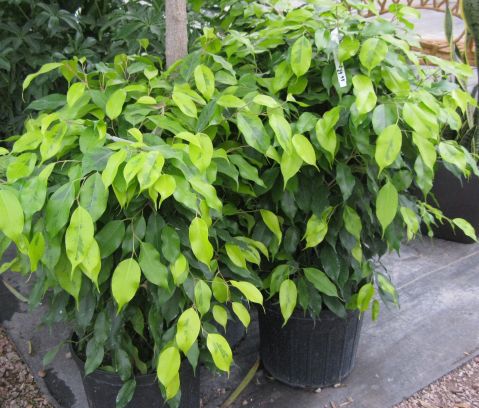
Ficus 'Neon' (Ficus benjamina)
Light Preference:
Bright Indirect to Bright Direct
Water Needs:
Allow soil to go lightly dry between
waterings. Water less in winter. Do NOT allow soil to become waterlogged.
Notes:
Do you like lime green? This pretty hybrid weeping fig offers a bright accent with its two toned foliage. As with other weeping figs, it can be grown as a bush or tree form. They can be pruned to be kept bushy. Keep all ficus away from cold drafty areas. Avoid abrupt changes in temperature and water.
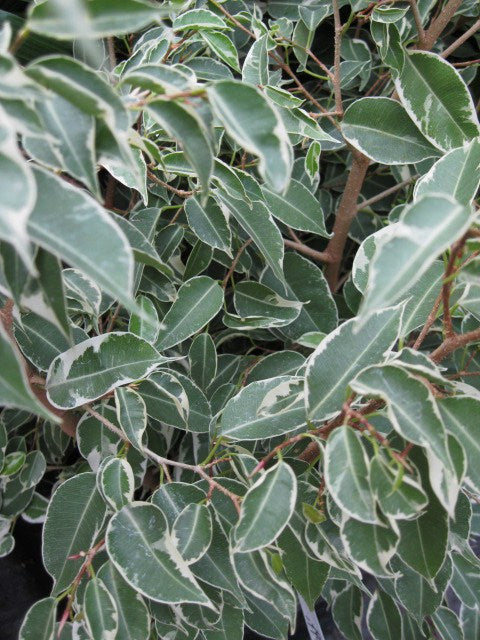
Ficus Variegated (Ficus benjamina)
Light Preference:
Bright Indirect or Bright Direct
Water Needs:
Allow soil to go lightly dry between waterings. Water less in winter. Do NOT allow soil to become waterlogged.
Notes:
A variegated version with pretty creamy green leaves. Comes in both bush and tree forms. Makes a nice tabletop plant when young. Smaller in stature than other
weeping figs. Keep all ficus away from cold drafty areas. Avoid abrupt changes in temperature and water.
Variation: Ficus ‘Starlite’ has brighter, more prominent variegation than the standard ‘variegata’ type
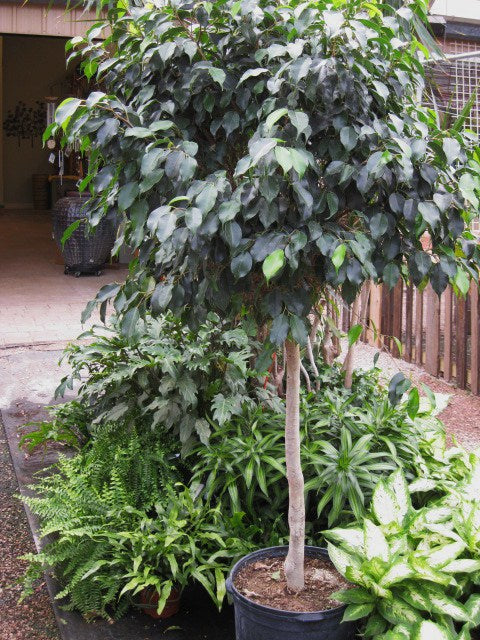
Ficus Weeping Fig (Ficus benjamina)
Light Preference:
Bright Indirect to Bright Direct
Water Needs:
Allow soil to go lightly dry between waterings. Water less in winter. Do NOT allow soil to become waterlogged.
Notes:
Glossy green leaves adorn this indoor tree. Mature height is usually 8’-10’ indoors but can get taller in good conditions. Can be pruned to keep tighter or allow natural branching to occur. Keep all ficus away from cold drafty areas. Avoid abrupt changes in temperature and water.
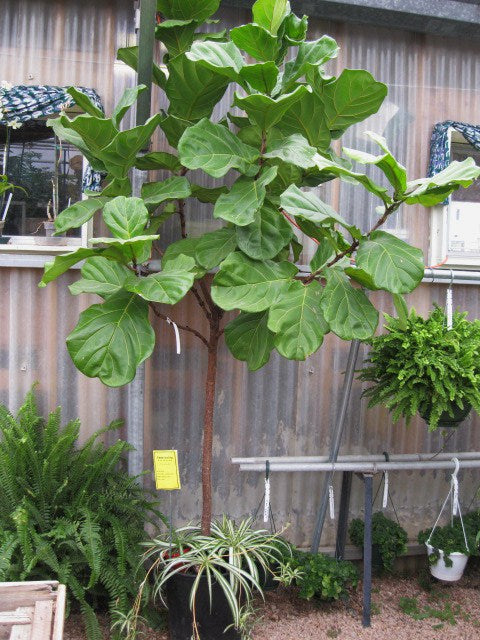
Fiddle Leaf Fig (Ficus lyrata)
Light Preference:
Bright Indirect
Water Needs:
Allow soil to go lightly dry between waterings. Water less in winter. Do NOT allow soil to become waterlogged.
Notes:
Large violin-shaped leaves adorn this floor plant. Comes in both a tree form and a more narrow columnar form. Will eventually get quite tall, 15’ or more. Keep all ficus away from cold drafty areas. Avoid abrupt changes in temperature and water.
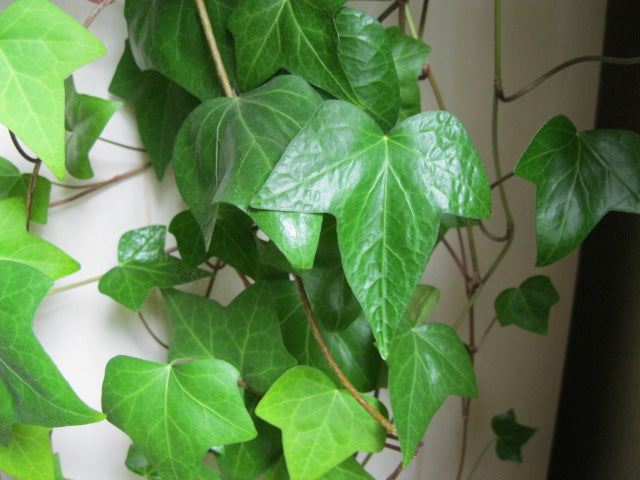
Ivy, Algerian (Hedera canariensis)
Light Preference:
Medium or Bright Indirect (The all-green type can take lower light)
Water Needs:
Allow soil to go lightly dry between waterings. Water less in winter.
Notes:
Glossy green or variegated leaves are produced on red trailing stems. Variegated version has cream and green leaves.
Use as tabletop or hanging plants. Very low care and adapts to dry indoor air well.
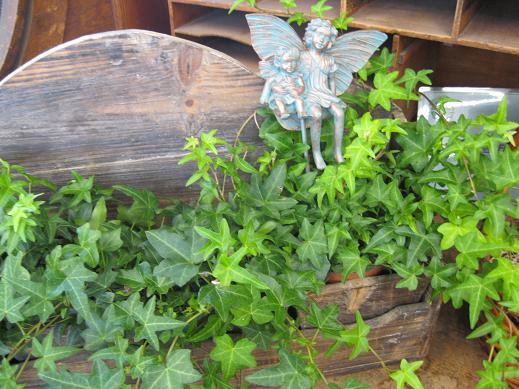
Ivy, English (Hedera helix)
Light Preference:
Medium to Bright Indirect (only the all green types can take lower light)
Water Needs:
Water when surface is dry. Mist or rinse leaves regularly in our dry Colorado air. Bright humid bathrooms work well for this plant.
Notes:
Trim tips to keep bushy or allow to trail. Makes a nice tabletop or hanging plant or can be trained upward as a topiary. Does well in cool temps. Can be used outdoors during the growing season in shady annual beds and containers.
Variations: Green leaf types come in many different shapes. Variegated types come in white/green or yellow/green combos.
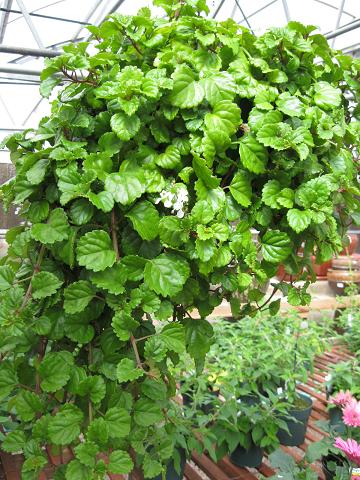
Ivy, Swedish (Plectranthus australis)
Light Preference:
Medium to Bright Indirect
Water Needs:
Water when surface is dry. Reduce water in winter.
Notes:
Hailing from Scandinavia, this fast growing plant flourishes in dry air. Though it is mostly grown for its scalloped foliage, it will occasionally bloom with tiny white orchid-like flowers. As with other trailing plants, you can pinch out the stem tips to keep it bushy.
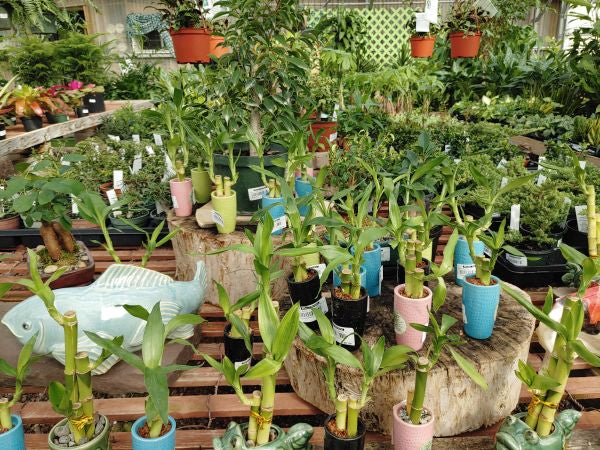
Lucky Bamboo (Dracaena sanderiana)
Light Preference:
Low, Medium or Bright Indirect
Water Needs:
Typically grown in water like cut flowers, change out weekly.
Notes:
Lucky “Bamboo” is actually a type of Dracaena. Since it is usually grown in water, easy weekly care includes changing out your water so it doesn’t become stagnant, and rinsing off the leaves every once in awhile to remove dust. For best health, you should feed it every few months. To do this, simply remove from current container, set into a vase with water that has mild diluted liquid feed added for a few hours. Then place back in clear water. If you choose to grow it in soil, follow the same care tips you would for any Dracaena. They can be sensitive to minerals and chlorine in tap water. Use distilled water if your tips are browning.
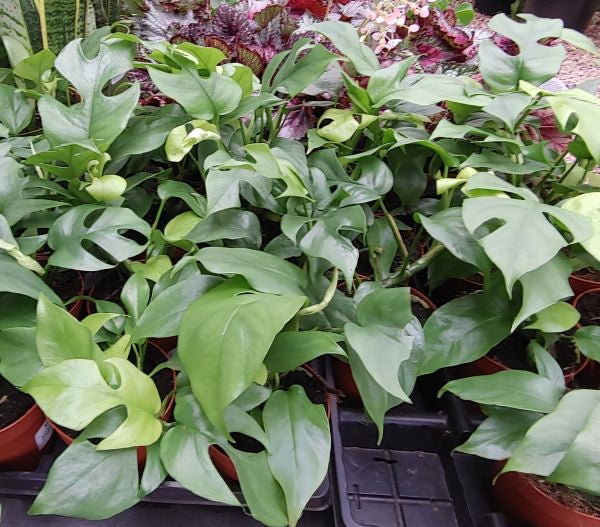
Mini “Monstera” (Rhaphidophora tetrasperma)a.k.a. “Monstera” minima, “Philodendron” Ginny
Light Preference:
Bright Indirect
Water Needs:
Allow to go lightly dry between waterings. Avoid waterlogged soil.
Notes:
Though this vining plant is an aroid, it is not actually a Monstera. But, since the leaves look like a miniature version of Monstera deliciosa, the name stuck. The leaves fenestrate and stay smaller, but the vine itself can get quite tall. Grow it upward on a support such as a coco/moss pole, trellis or stakes. If you have the vertical space, it is an adorable, easy care plant. Trim to control height.
Use a potting mix that offers light but fast draining soil. (Potting mix with extra perlite works well) and pot up only when roots fill the current pot.
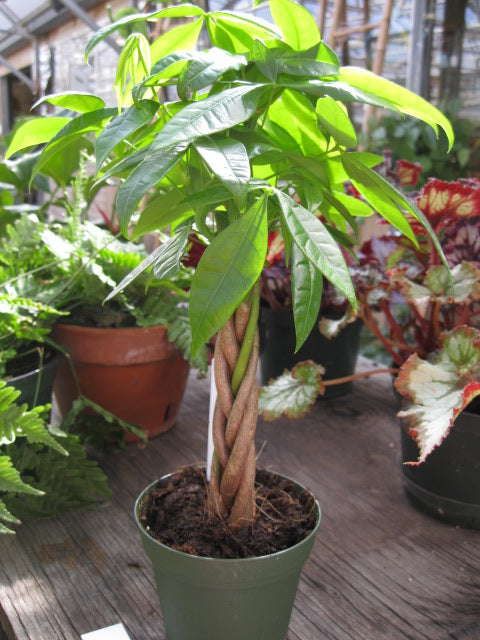
Money Tree (Pachira aquatica)
Light Preference:
Bright Indirect
Water Needs:
Aim for lightly moist. Water well and then allow soil surface to go lightly dry. Don’t let it sit in water.
Notes:
Some believe the money tree may bring you good luck and prosperity. It’s a pretty plant that offers easy care. It can be treated as a bonsai to keep it small (follow rules for root pruning to keep it happy). Or, it can grow up to 10 foot tall if you choose to pot it into larger containers as it grows. (do so
incrementally as it prefers to be pot-bound to help avoid soggy soil)
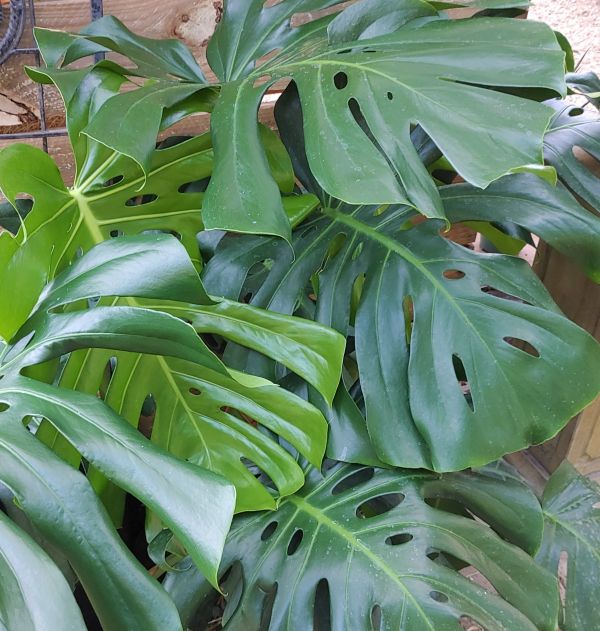
Monstera Deliciosa aka Split-Leaf Philodendron (Monstera deliciosa)
Light Preference:
Bright Indirect
Water Needs:
Allow root ball to approach a lightly dry level between waterings. Avoid
boggy soil.
Notes:
Gorgeous huge leaves split as they age on this large vining plant. You will want a strong support, such as a moss pole, or bamboo stakes to tie it up as it grows. Although it can be trimmed periodically to reduce size, plan on this taking up some room in your home as leaves can get up to 3’ wide. Potting soil should be amended with perlite so it drains faster.(some people also choose to add charcoal or orchid bark). Pot up gradually as roots fill pot. In ideal conditions, they will flower and fruit.
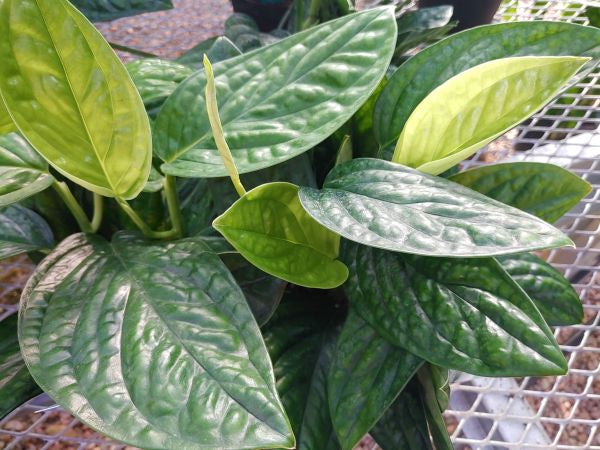
Monstera Peru (Monstera karstenianum)
Light Preference:
Bright Indirect
Water Needs:
Allow root ball to approach a lightly dry level between waterings. Avoid waterlogged soil.
Notes:
A lovely, easy-care Monstera with green textured leaves. This type does not fenestrate (split). You can choose to train it up a moss pole or let it trail. Potting soil should be amended with perlite so it drains faster (some people also choose to add charcoal, pumice or orchid bark).
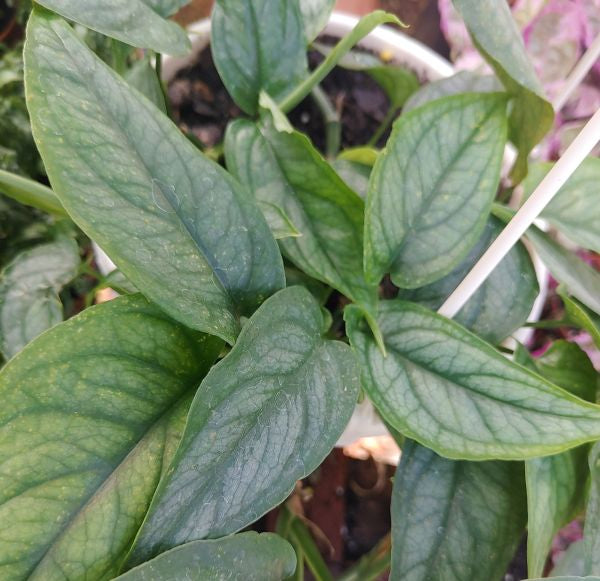
Monstera, Silver Monstera (Monstera Siltepecana)
Light Preference:
Bright Indirect
Water Needs:
Allow root ball to dry 1/2 way between waterings. Avoid waterlogged soil.
Notes:
When young, leaves will be very silver with deep green veining. As it ages, leaves will fenestrate (split) and become more green. You can choose to train it up a moss pole or let it trail. This is a fast grower. Potting soil should be amended with perlite so it drains faster.(some people also choose to add charcoal, pumice or orchid bark). This type would do well with a little more humidity or misting of leaves.
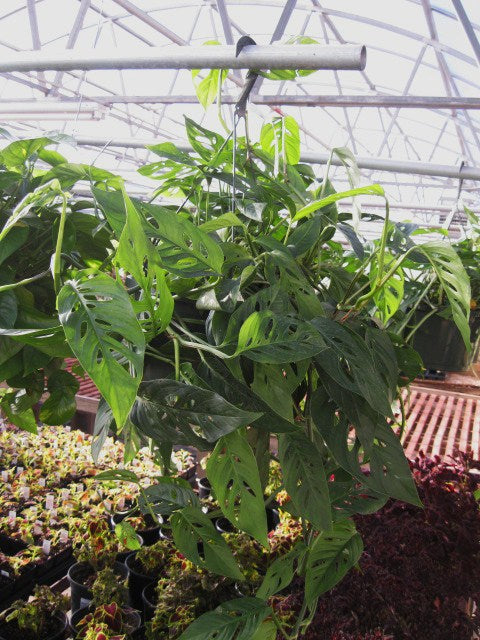
Monstera, Swiss Cheese Plant (Monstera adansonii)
Light Preference:
Medium to Bright Indirect
Water Needs:
Allow surface to go lightly dry between waterings. Water less in winter. Never allow to sit in water.
Notes:
Very easy to grow. Green leaves have holes similar to ‘swiss cheese’. Will trail down for an attractive hanging basket, ledge, or tabletop plant. Occasionally trim the ends to keep your plant bushy.
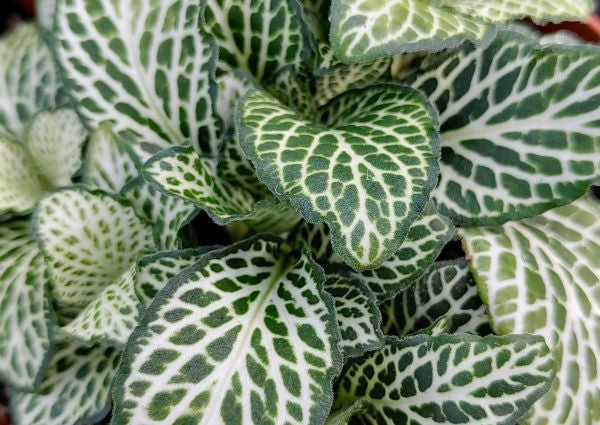
Nerve Plant (Fittonia)
Light Preference:
Bright Indirect
Water Needs:
Aim for lightly moist at all times. Humidity is a plus but avoid waterlogged soil.
Notes:
Brightly colored veined leaves in white, red or pink. Great candidate for a terrarium or other humid environment. It grows fast so either refresh the bottom 1/3 of your root ball with fresh soil frequently or pot up into next pot size to avoid it becoming root bound. Hates to be fully dry and will definitely tell you about it!
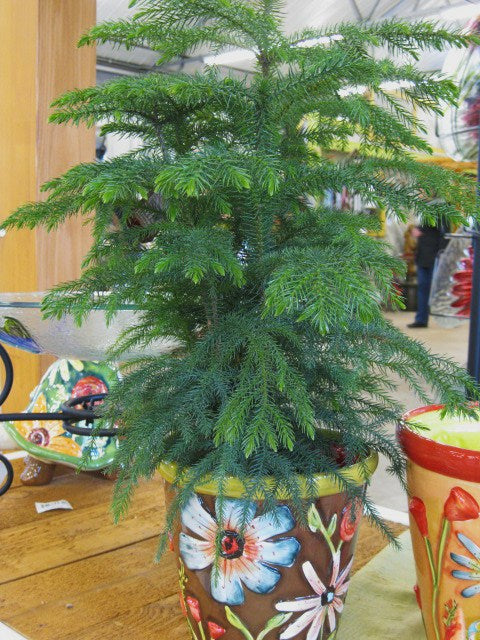
Norfolk Island Pine (Araucaria Heterophylla)
Light Preference:
Medium to Bright Indirect
Water Needs:
Allow surface to go lightly dry between waterings. Decrease water in winter.
Notes:
Soft needled indoor conifer. Flourishes in cool conditions. Can use this slow-growing type as a tabletop plant when small and as a floor specimen with larger plants. Grows up to 10 foot tall indoors. Can keep it pot-bound to restrict growth, but refresh the soil every couple of years.
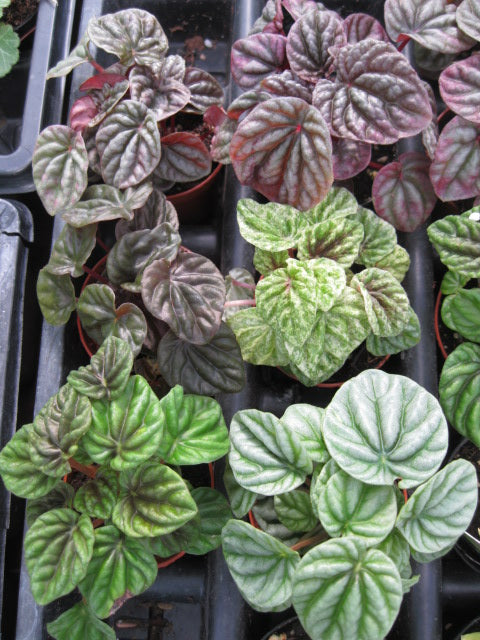
Peperomia “Ripple” Type Varieties(Peperomia caperata)
Light Preference:
Medium to Bright Indirect
Water Needs:
Allow soil to go lightly dry between waterings in Summer. Decreasing water in winter is key.
Notes:
An easy group of plants that adapt well to indoor conditions. Most ripple peperomia will mature at 8”-10” (not including their “blooms”) They form an upright rounded plant. Leaves are quilted, and come in a wide range of colors. Slower growing and compact, they are useful for terrariums, workspaces or anywhere you’d like to display a small plant. There are many hybrids currently in cultivation.
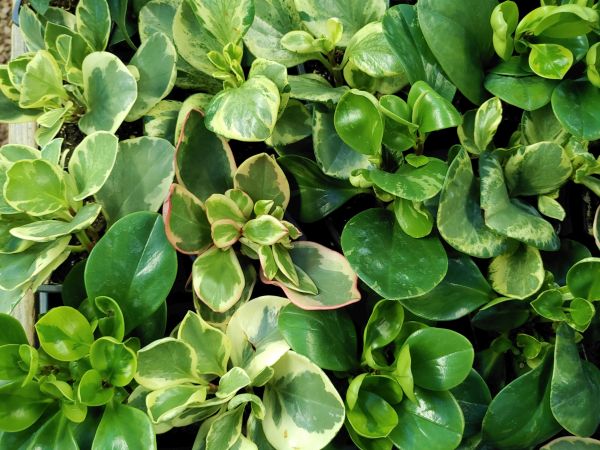
Peperomia Other Varieties (Peperomia species)
Light Preference:
Medium to Bright Indirect
Water Needs:
Allow soil to go lightly dry between waterings. Decreasing water in winter is key.
Notes:
An easy group of plants that adapt well to indoor conditions. Some types are all-green but most have some form of variegation. There are three forms: bushy, upright and trailing. Leaves can range from a fleshy succulent appearance to quilted, smooth or hairy types. Slow growing and compact, they are useful for areas where you would like to display a smaller plant.
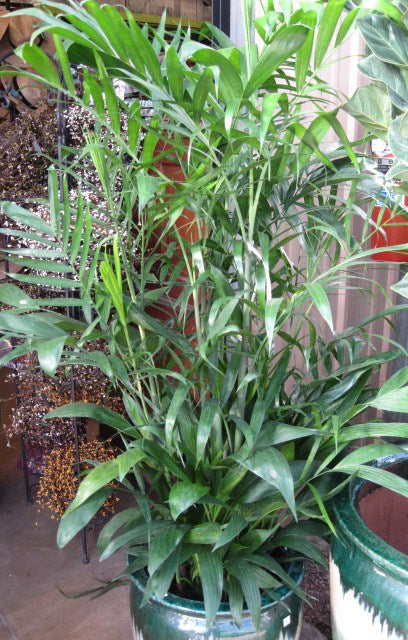
Palm, Bamboo Palm a.k.a. Reed Palm (Chamaedorea seifrizii)
Light Preference:
Medium to Bright Indirect
Water Needs:
Palms MUST have good drainage! So avoid waterlogging the roots. In warmer seasons, water palms more often (when soil surface dries). In Winter, decrease watering so that the palm goes lightly, but not completely dry. Misting leaves is beneficial.
Notes:
This is a type of ‘cane palm’, so named for its stiff bamboo-like stems. A good palm for a narrow space— this type can grow 6ft-10ft in good conditions, but will not get wide. Palms dislike disturbance, so only re-pot when the plant is thoroughly pot-bound.
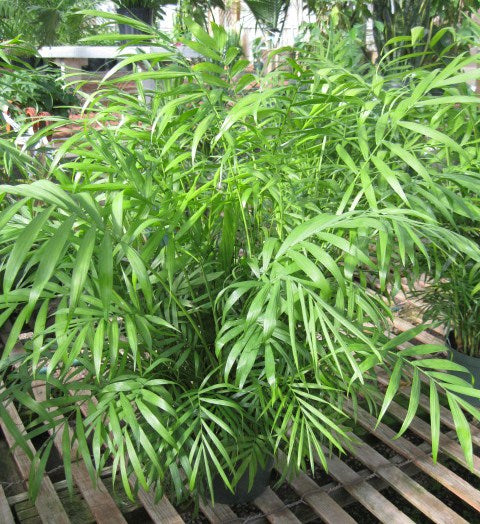
Palm, Neanthe Bella Palm a.k.a. Parlor Palm (Chamaedorea elegans)
Light Preference:
Medium or Bright Indirect
Water Needs:
Water when surface is dry. Mist leaves in winter. Provide good drainage and avoid waterlogging.
Notes:
A dwarf palm with a bushy habit that will only reach 2-3ft high at maturity. Good for smaller spaces. Foliage is medium green. Often sold as small starter plants that work well on tabletops. Palms dislike disturbance, so only re-pot when the plant is thoroughly pot-bound.
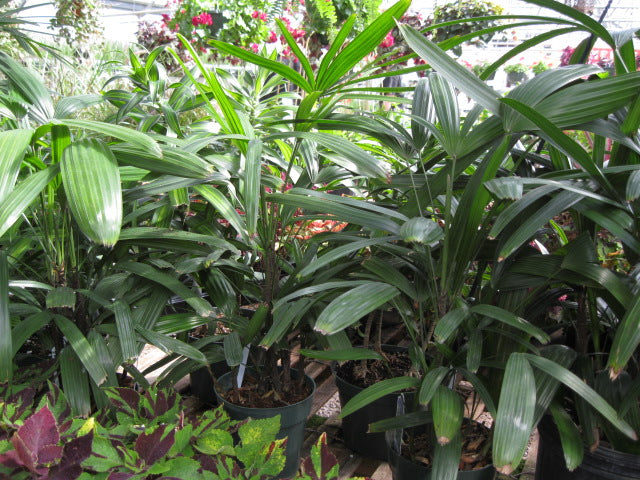
Palm, Lady Palm (Rhapis flabelliformis)
Light Preference:
Medium or Bright Indirect is preferred but they will adapt to lower light
Water Needs:
Palms MUST have good drainage! So avoid waterlogging the roots. In warmer seasons, water palms more often (when soil surface dries). In Winter, decrease watering so that the palm goes lightly, but not completely dry. Misting leaves is beneficial.
Notes:
Deep green leaves with a blunt edge grace this dwarf fan-type palm. It is a durable, easy care plant. Though it can reach 10'+ outside in a tropical climate, it is very slow growing indoors. Typical sizes for sale as a houseplant are in the 2-4 foot range. You can expect growth per year to be 6"-8". Palms dislike disturbance, so only re-pot when the plant is thoroughly pot-bound.
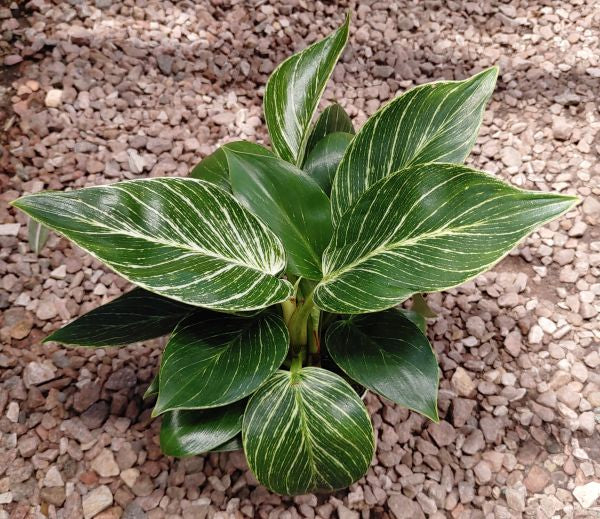
Philodendron Birkin (Philodendron)
Light Preference:
Bright Indirect
Water Needs:
Allow to go lightly dry between waterings. Avoid waterlogging.
Notes:
A non-vining type that offers pretty white pinstripe variegation on glossy green leaves. Use a potting mix that offers light but fast draining soil. (Potting mix with extra perlite works well) and pot up only when roots fill the current pot. This plant can get up to 3’ at maturity. It will grow into a bush and does not need support. Philodendron Birkin came about from a spontaneous mutation of Philodendron Rojo Congo. As such, it will sometimes (but not always!) revert and get a red leaf or other color variations. You can opt to trim off the red leaf or let the two forms grow together.
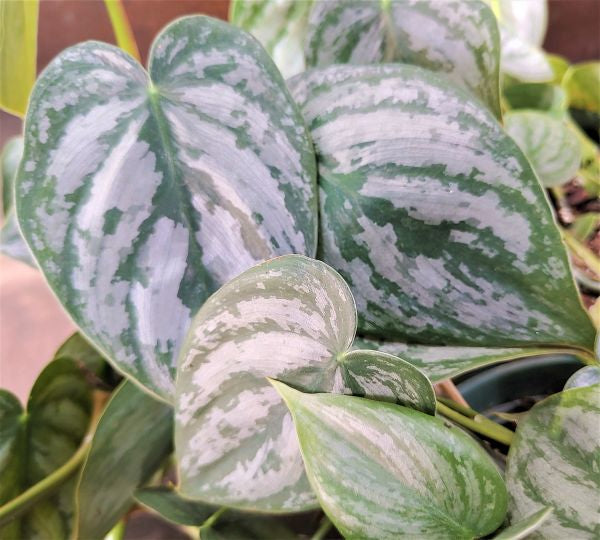
Philodendron Brandi A.ka. Silver Leaf Philodendron (Philodendron brandtianum)
Light Preference:
Bright Indirect
Water Needs:
Allow to go lightly dry between
waterings. Avoid waterlogging.
Notes:
A vining, type with distinct silvery markings. Can get quite long, but is easily trimmed. Display in a hanging basket or train up a pole. Loves warmth so site it away from cold doors or windows. Humidity is a plus but misting is not suggested. Use a potting mix that offers light but fast draining soil. (Potting mix with extra perlite works well) and pot up only when roots fill the current pot.
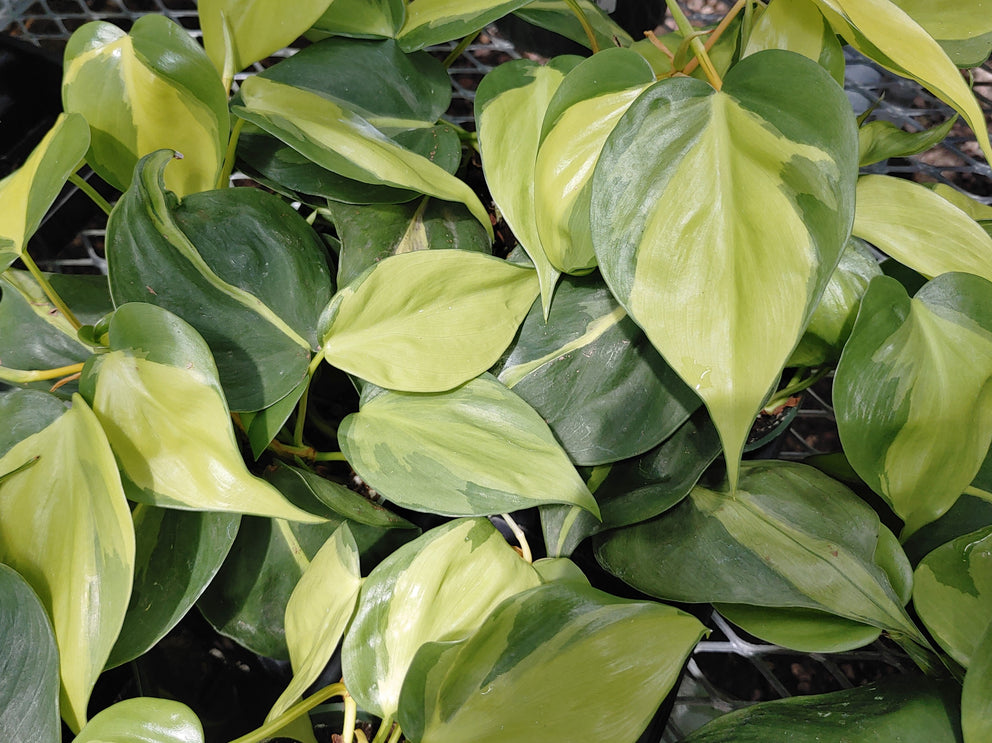
Philodendron Brazil (Philodendron)
Light Preference:
Medium or Bright Indirect preferred
(will tolerate low light)
Water Needs:
Allow to go lightly dry between waterings. Avoid waterlogging.
Notes:
A vining heart-leaf Philodendron with yellow variegation. Very easy care plant that can get quite long. Let it trail or keep it trimmed, it is happy either way. Use a potting mix that offers light but fast draining soil. (Potting mix with extra perlite works well) and pot up only when roots fill the current pot. If your plant gets too leggy or starts to lose variegation, increase light.
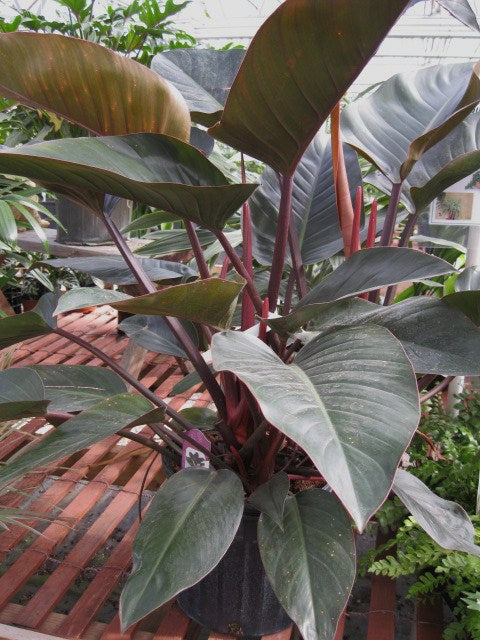
Philodendron Congo & Rojo Congo varieties (Philodendron hybrids)
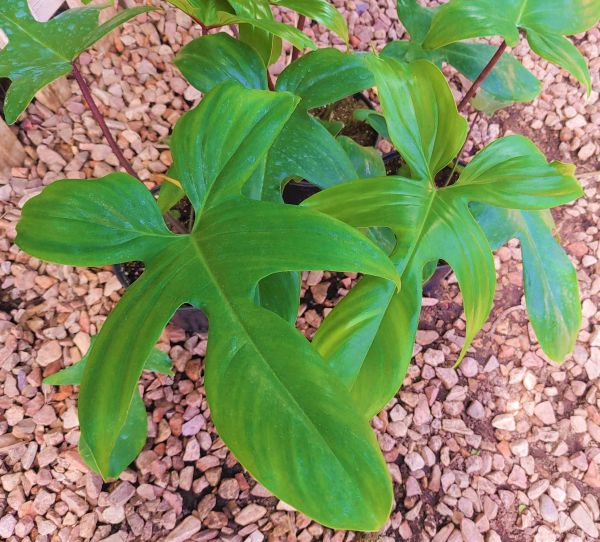
Philodendron Florida Green (Philodendron hybrid)
Light Preference:
Bright Indirect
Water Needs:
Allow to go lightly dry between
waterings. Avoid waterlogging.
Notes:
Large vining type with huge, deeply lobed leaves. Will require strong support as it grows (moss/coco pole or stakes). Easy care. Use a potting mix that offers light but fast draining soil. (Potting mix with extra perlite works well) and pot up only when roots fill the current pot. Can get quite tall over time, but can be trimmed to desired height.
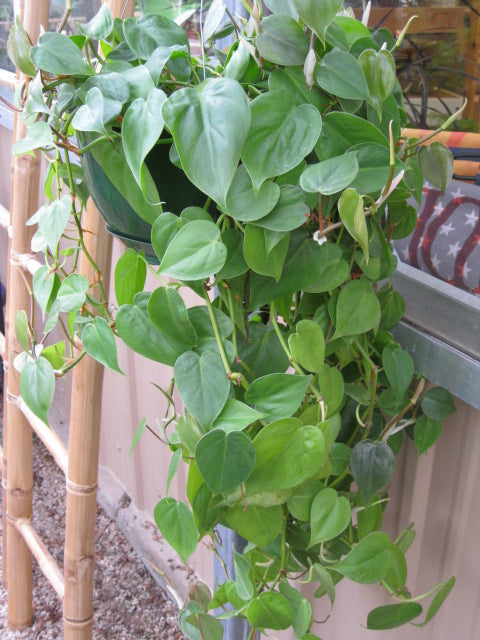
Philodendron, Heart Leaf Trailing (Philodendron cordatum)
Light Preference:
Low, Medium or Bright Indirect
Water Needs:
Allow to go lightly dry between waterings. Avoid waterlogged soil.
Notes:
A tough as nails trailing type plant with medium green, heart-shaped leaves. Pinch out tips to keep the plant bushy. Useful as a hanging plant or trailing from a ledge or tabletop.
Variation: Variegated type include ‘Brasil’ with green & yellow variegated leaves and Lemon with neon yellow leaves. Brazil does best with good light or the leaves might revert to green.
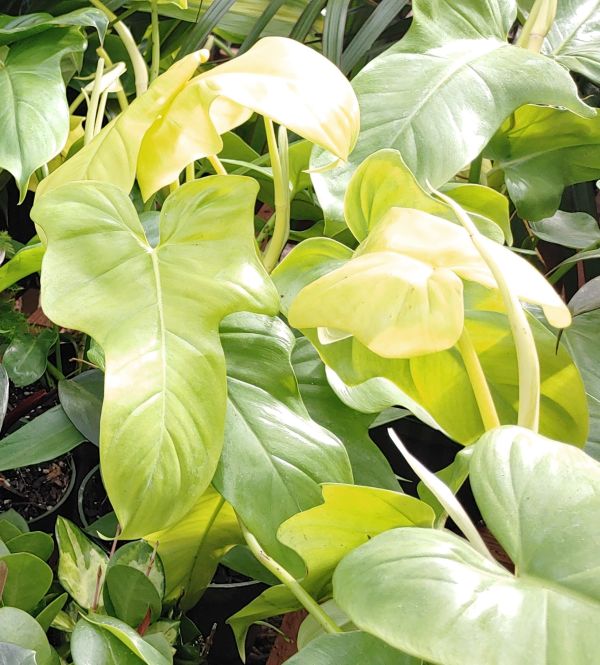
Philodendron Horse Head a.k.a Fiddle Leaf/Violin (Philodendron bipennifolium)
Light Preference:
Bright Indirect
Water Needs:
Allow to go lightly dry between waterings. Avoid waterlogged soil.
Notes: (Gold Type Pictured)
Vining type with green or golden leaves that can get up to 3’ long (but 18” is more likely indoors). Mature leaves develop 5 lobes with the center lobe decidedly elongated (like a horse head shape). As with other climbers, it will require support as it grows (moss/coco pole or stakes) as it can get very tall. You can always prune to control size. Use a potting mix that offers light but fast draining soil. (Potting mix with extra perlite works well) and pot up only when roots fill the current pot.
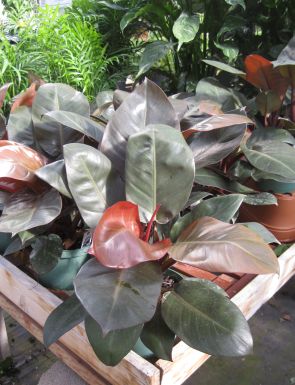
Philodendron hybrids
Light Preference:
Medium to Bright Indirect
Water Needs:
Allow to go lightly dry between waterings. Avoid waterlogged soil.
Notes:
Non-vining types that grow in an upright spreading manner. Thick glossy leaves are nearly black with copper new growth.
Black Cardinal has deep maroon leaves. ‘Moonlight’ has lemon lime foliage. ‘Autumn’ & ‘McColley’s Finale’ have amber/maroon new growth.
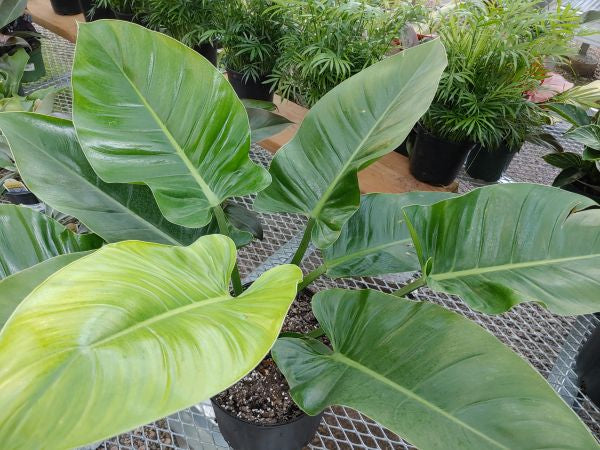
Philodendron Imperial Green (Philodendron hybrid)
Light Preference:
Bright Indirect
Water Needs:
Allow to go lightly dry between
waterings. Avoid waterlogging.
Notes:
A non-vining type that grows in an upright spreading manner. Green glossy leaves fan out in all directions. Mature size up to 3’. Use a potting mix that offers light but fast draining soil. (Potting mix with extra perlite works well) and pot up only when roots fill the current pot.
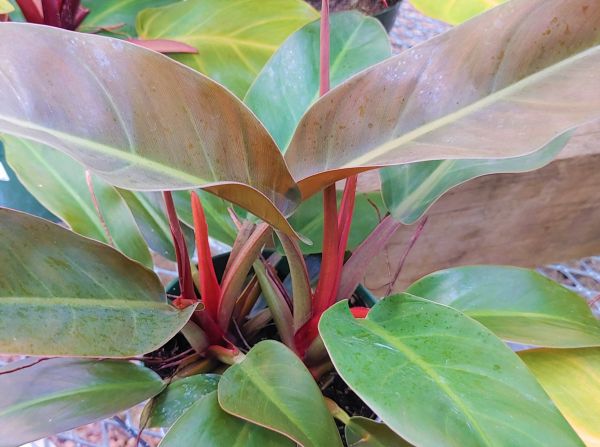
Philodendron Imperial Red (Philodendron hybrid)
Light Preference:
Bright Indirect
Water Needs:
Allow to go lightly dry between waterings. Avoid waterlogged soil.
Notes:
A non-vining type that grows in an upright spreading manner. New leaves are maroon, while older leaves are green/maroon. Stems are a bright red adding further contrast. Mature size up to 3’. Use a potting mix that offers light but fast draining soil. (Potting mix with extra perlite works well) and pot up only when roots fill the current pot.
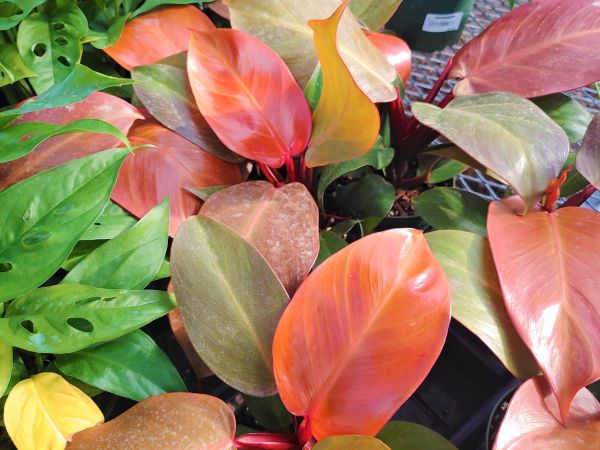
Philodendron McColley’s Finale (Philodendron Hybrid)
Light Preference:
Bright Indirect
Water Needs:
Allow to go lightly dry between
waterings. Avoid waterlogging.
Notes:
A non-vining type that grows in an upright spreading manner. Leaves change color as they age giving a multi-colored look. The same plant can have bright red, amber and orange tones all at the same time before the oldest leaves turn to green. Wow! What a show! (Very similar to Prince of Orange but with deeper hues and larger leaves) Mature size up to 3’. Use a potting mix that offers light but fast draining soil. (Potting mix with extra perlite works well) and pot up only when roots fill the current pot.
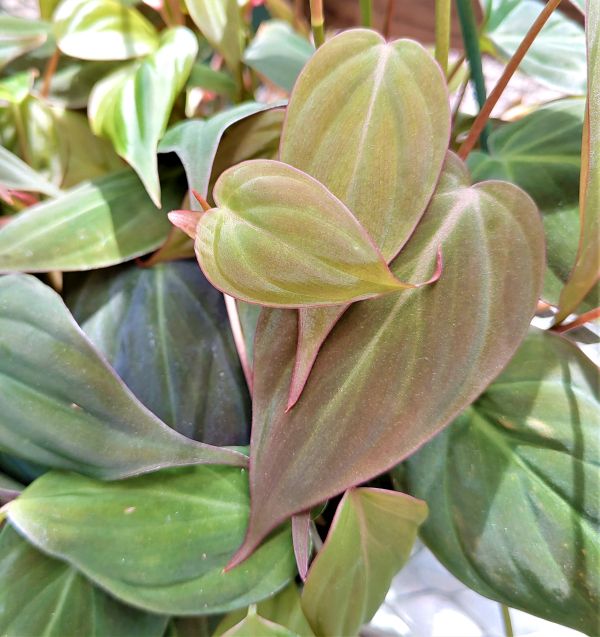
Philodendron Micans a.k.a Velvet Philodendron (Philodendron scandens f. micans)
Light Preference:
Bright Indirect
Water Needs:
Allow to go lightly dry between
waterings. Avoid waterlogging.
Notes:
A vining, heart-leaf type offering a velvety sheen in shades of green and amber. Can get quite long, but is easily trimmed. Display in a hanging basket or train up a pole. Loves warmth so site it away from cold doors or windows. Use a potting mix that offers light but fast draining soil. (Potting mix with extra perlite works well) and pot up only when roots fill the current pot.
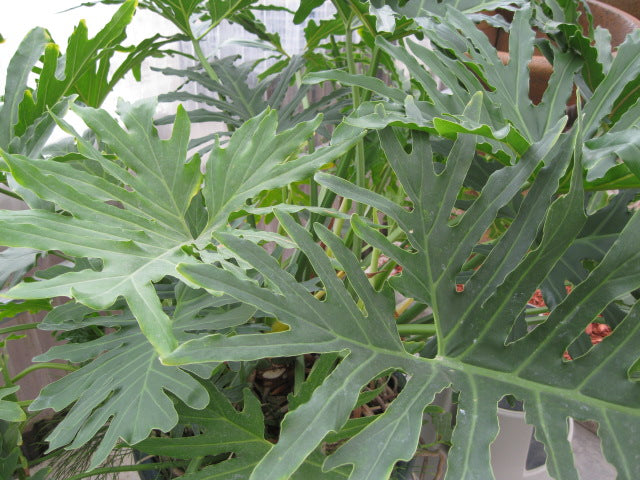
Philodendron Lacy Tree types (Philodendron selloum)
Light Preference:
Medium to Bright Indirect
Water Needs:
Allow to go lightly dry between waterings. Avoid waterlogged soil.
Notes:
Non-vining upright, spreading habit. Deeply lobed medium green leaves. Though they won’t get taller than 4’, in good light they can spread 6 feet or more, so give them lots of room.
Philodendron ‘Hope’ is a named variety. Philodendron bipinnatifidum, also a tree philodendron is similar but the leaves aren’t as deeply cut.
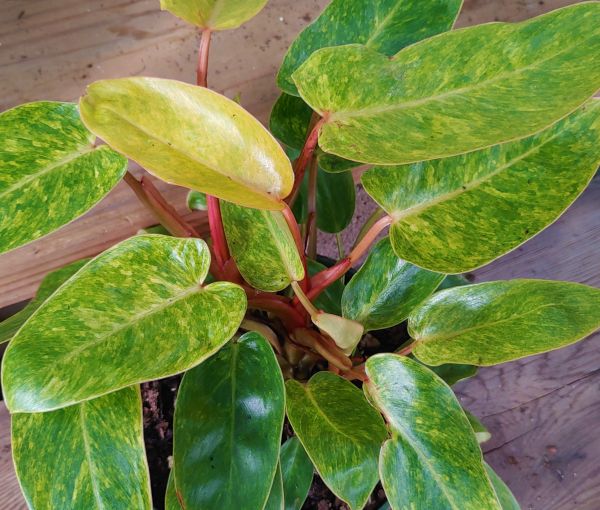
Philodendron Painted Lady (Philodendron hybrid)
Light Preference:
Bright Indirect
Water Needs:
Allow to go lightly dry between
waterings. Avoid waterlogging.
Notes:
Vining type with yellow speckled variegation. Bright pink stems offer
a fun color contrast. Will require support as it grows (moss/coco pole or stakes). Easy care. Use a potting mix that offers light but fast draining soil. (Potting mix with extra perlite works well) and pot up only when roots fill the current pot.
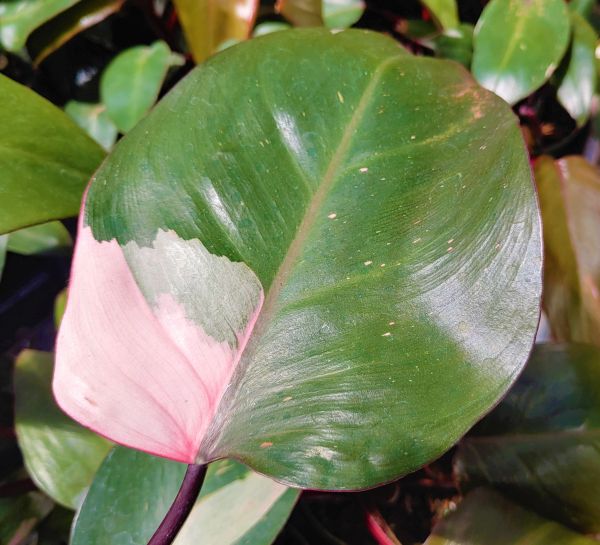
Philodendron Pink Princess (Philodendron Hybrid)
Light Preference:
Bright Indirect
Water Needs:
Allow to go lightly dry between
waterings. Avoid waterlogging.
Notes:
Perhaps one of the most popular Philodendrons of all time? Leaf markings are highly variable based on genetics (light will help keep what it has but won’t initiate more variegation) May have fully pink, white, green or burgundy leaves OR any combination of those colors on the same leaf. Markings range from splashy to speckled to half-moon variegation. Stems are burgundy and sometimes also sport pink striping. Vining type that will require support as it grows (moss/coco pole or stakes). Easy care. Use a potting mix that offers light but fast draining soil. (Potting mix with extra perlite works well) and pot up only when roots fill the current pot.
Philodendron Prince of Orange (Philodendron hybrid)
Light Preference:
Bright Indirect
Water Needs:
Allow to go lightly dry between
waterings. Avoid waterlogging.
Notes: A non-vining type that grows in an
upright spreading manner. New growth is bright orange. Leaves age to lime green and then medium green. A bright cheerful plant. (Very similar to McColley’s Finale but with brighter hues and slightly smaller mature leaves). Mature size up to 2’-3’. Use a potting mix that offers light but fast draining soil. (Potting mix with extra perlite works well) and pot up only when roots fill the current pot.
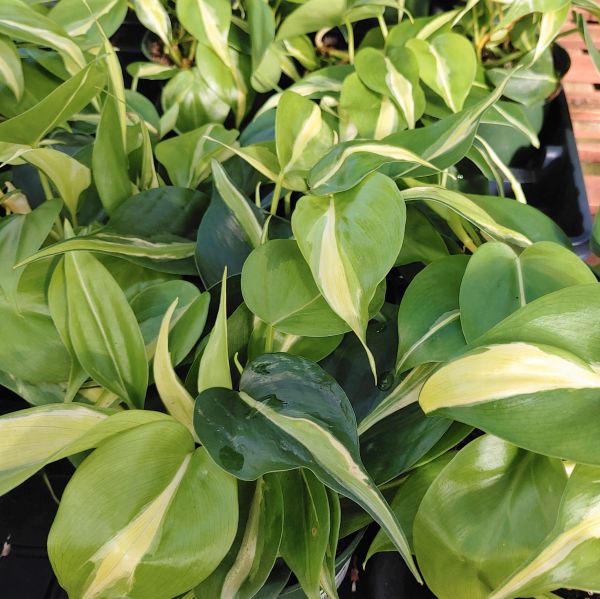
Philodendron Silver Stripe (Philodendron)
Light Preference:
Medium or Bright Indirect preferred (will tolerate low light)
Water Needs:
Allow to go lightly dry between waterings. Avoid waterlogging.
Notes:
A vining heart-leaf type that is a sport of Philodendron Brazil. Has more cream colored variegation, silver stripes alongside and a more elongated leaf tip compared to Brazil. Very easy care plant that can get quite long. Let it trail or keep it trimmed, it is happy either way. Use a potting mix that offers light but fast draining soil. (Potting mix with extra perlite works well) and pot up only when roots fill the current pot. If your plant gets too leggy or starts to lose variegation, increase light.
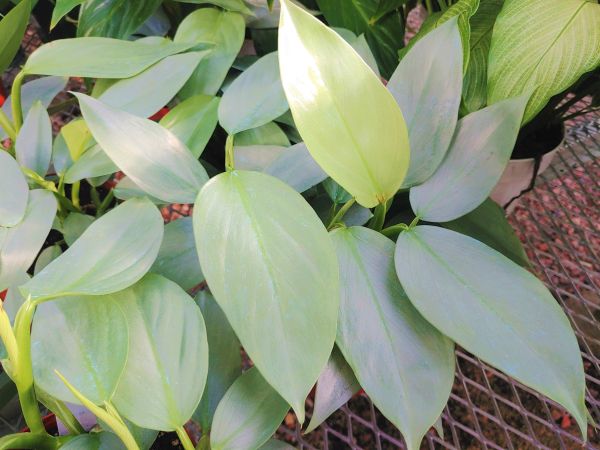
Philodendron Silver Sword (Philodendron hastatum)
Light Preference:
Bright Indirect
Water Needs:
Allow to go lightly dry between waterings. Avoid waterlogged soil.
Notes: Vining type with gorgeous silvery leaves that are tapered when young but with age, develop into elongated arrow-type shape up to one foot long! Will require support as it grows (moss/coco pole or stakes). Use a potting mix that offers light but fast draining soil. (Potting mix with extra perlite works well) and pot up only when roots fill the current pot.
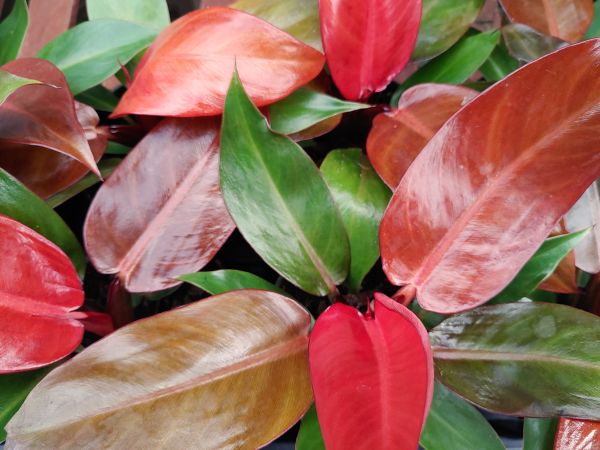
Philodendron ‘Sun Red’ (Philodendron hybrid)
Light Preference:
Bright Indirect
Water Needs:
Allow to go lightly dry between waterings. Avoid waterlogged soil.
Notes:
This self-heading hybrid (doesn't climb and is self supporting) has vibrant bright red new growth that fades to amber, maroon, and green. Burgundy/red stems. A gorgeous multi-colored display! Compact and bushy. Mature size up to 2’. Use a potting mix that offers light but fast draining soil. (Potting mix with extra perlite works well) and pot up only when roots fill the current pot.
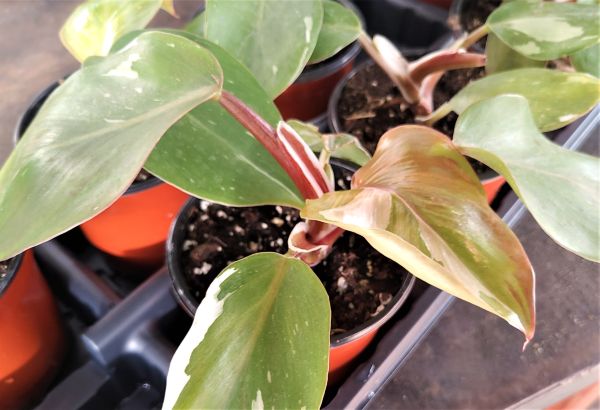
Philodendron White Knight (Philodendron hybrid
Light Preference:
Medium to Bright Indirect
(fully white leaves lack chlorophyll and burn easier.
Bright light is key but you may need to pull this back
further to keep leaves healthy.)
Water Needs:
Allow to go lightly dry between waterings. Avoid waterlogging.
Notes:
A newer hybrid vining type that will require support as it grows (moss/coco pole or stakes).
Leaf markings are highly variable based on genetics. Light will help keep what it has but won’t initiate more variegation. May have fully white, green, or amber leaves OR any combination of those colors on the same leaf. Markings range from splashy to speckled to half-moon variegation. Can look very similar to White Wizard. Petioles/Stems on White Knights have a blend of burgundy to reddish/pink/brown sometimes with white stripes - White Wizard is only green/white.
Use a potting mix that offers light but fast draining soil. (Potting mix with extra perlite works well) and pot up only when roots fill the current pot.
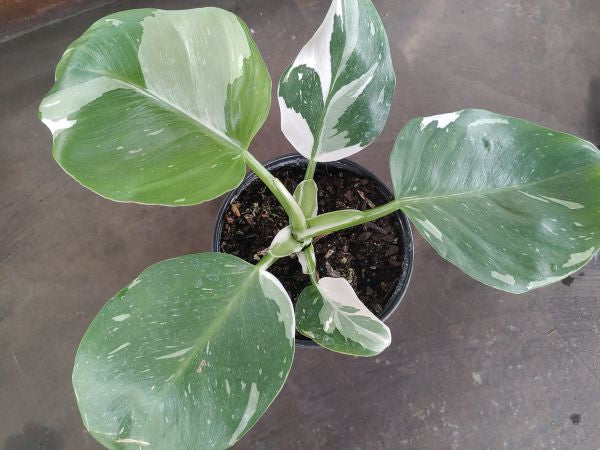
Philodendron White Wizard (Philodendron hybrid)
Light Preference:
Medium to Bright Indirect.
(fully white leaves lack chlorophyll and burn easier. Bright light is key but you may need to pull this back further to keep leaves healthy.)
Water Needs:
Allow to go lightly dry between waterings. Avoid waterlogging.
Notes:
A newer hybrid vining type that will require support as it grows (moss/coco pole or stakes). Leaf markings are highly variable based on genetics. Light will help keep what it has but won’t initiate more variegation. May have fully white or green leaves. Markings range from splashy to speckled to half-moon variegation. Can look very similar to White Knight. Petioles/Stems on White Wizards are only green/white while White Knight can have a blend of burgundy to reddish/pink sometimes with white stripes. White Wizard leaves will be very rounded compared to others.
Use a potting mix that offers light but fast draining soil. (Potting mix with extra perlite works well) and pot up only when roots fill the current pot.
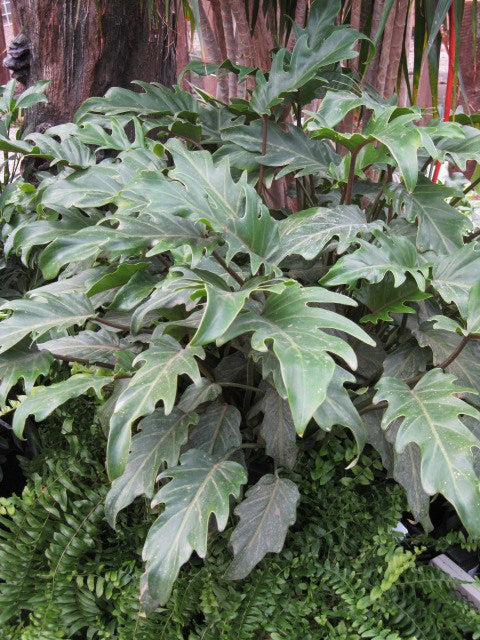
Philodendron Xanadu (Philodendron hybrid)
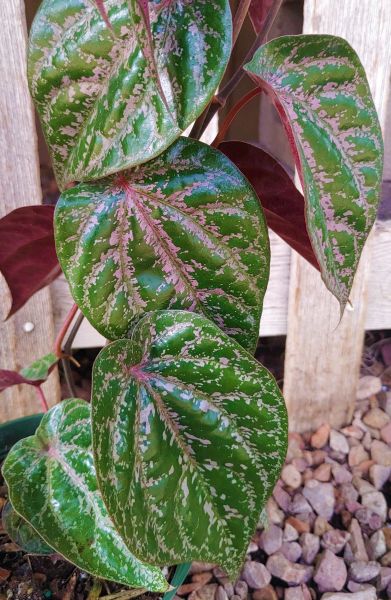
Piper Vine a.ka. Celebes Pepper/Red Betel Leaf (Piper crocatum)
Light Preference:
Bright Indirect
Water Needs:
Allow to pot to dry down 1/2 way between waterings. Misting between waterings is beneficial. Avoid waterlogging.
Notes:
This pretty vine is actually related to the vine that produces black pepper. Train it up a support or grow as a hanging basket. Pretty green leaves have silvery pink speckles and burgundy undersides. Would love humidity if you can offer it, but can be grown without as long as you mist in between waterings. Repot infrequently, and use a fast draining soil when you do. (add additional perlite to a light potting soil). It hails from areas near the equator SO, it loves heat. Site away from doors so it doesn’t get a blast of cold air in Winter. This plant will get small sugar secretions on stems and the underside of the leaves that will start clear and turn black. This is perfectly normal for this plant as a means to ward off pests.
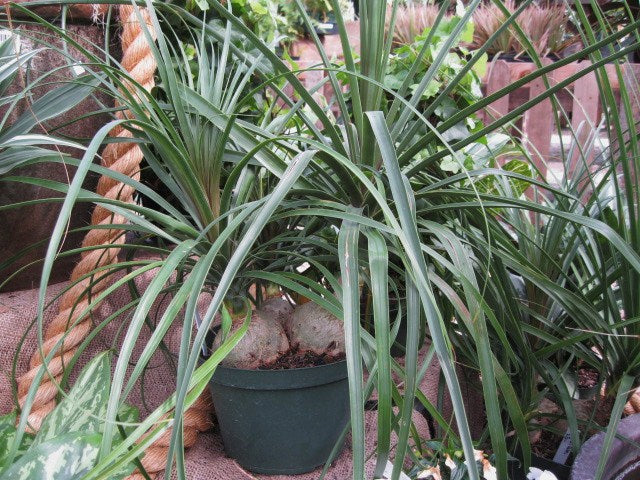
Pony Tail Palm (Beaucarnea recurvata)
Light Preference:
Medium, Bright Indirect to Bright Direct
Water Needs:
Allow soil to dry between waterings. Avoid overwatering or waterlogged soil.
Notes:
Slender leaves are produced on an interesting swollen base. Very slow growing, but over years can become a floor plant. Until that time, enjoy it as an easy care accent plant. Does not require a lot of attention. Great for people who travel or are forgetful about watering.
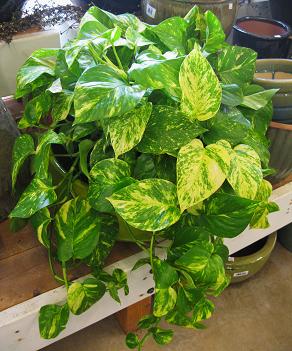
Pothos, Golden (Epipremnum aureum)
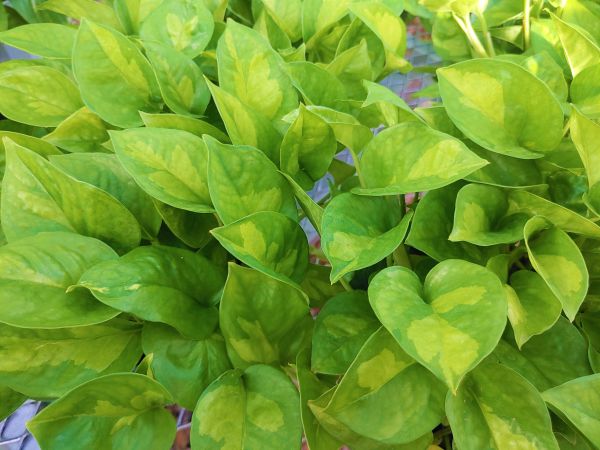
Pothos Global Green (Epipremnum aureum)
Light Preference:
Medium to Bright Indirect
Water Needs:
Allow to go lightly dry between waterings. Avoid waterlogging.
Notes:
A patented pothos hybrid that offers green on green variegation, lighter green against a darker leaf. All pothos offer an easy care vining habit. You can allow stems to trail from a hanging basket or pot OR train it up a support. It will happily grow either way.
Use a potting mix that offers light but fast draining soil. (Potting mix with extra perlite works well) and pot up only when roots fill the current pot.
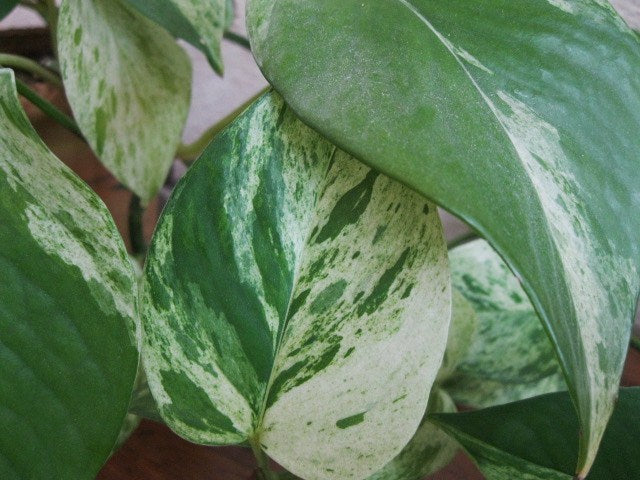
Pothos, Marble Queen (Epipremnum)
Light Preference:
Medium or Bright Indirect
Water Needs:
Allow soil to go lightly dry between waterings. Water less in winter.
Notes:
Very easy care. White/green variegated leaves. Will survive in low light but the leaves might revert to all green. Slower growing compared to golden or all green pothos. Vining habit is useful as a hanging plant or trailing tabletop type. Pinch tips to keep bushy.
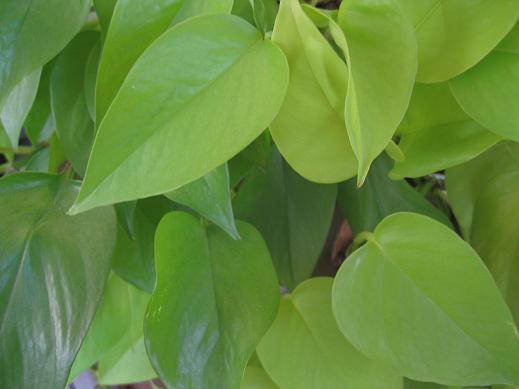
Pothos, Neon (Epipremnum)
Light Preference:
Low or Medium
Water Needs:
Allow soil to go lightly dry between waterings. Water less in winter.
Notes:
Very easy care. Lime green leaves add a splash of color to your home or office. Avoid bright light with this variety—the best color comes in low to medium light situations. Vining habit is useful as a hanging plant or trailing tabletop type. Pinch tips to keep bushy.
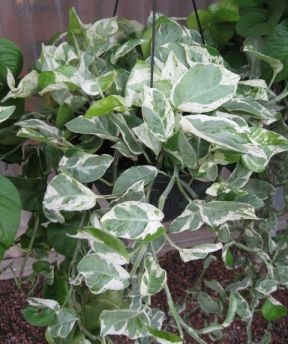
Pothos, N'Joy (Epipremnum)
Light Preference:
Medium or Bright Indirect
Water Needs:
Allow soil surface to go lightly dry between waterings. Water less in winter.
Notes:
Very easy care. N’Joy is a hybrid that has striking white/green variegated leaves. Will survive in low light but leaves have the potential to lose variegation. Vining habit is useful as a hanging plant or trailing tabletop type. Pinch tips to keep bushy.
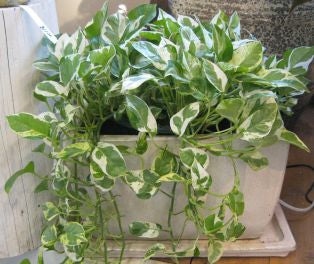
Pothos, Pearls ‘N Jade (Epipremnum)
Light Preference:
Medium or Bright Indirect
Water Needs:
Allow soil to go lightly dry between waterings. Water less in winter.
Notes:
Very easy care. This is a beautiful sport of Marble Queen Pothos. It has striking white/green variegated leaves. Will survive in low light but leaves have the potential to lose some of their variegation. Slower growing compared to golden or all green pothos. Vining habit is useful as a hanging plant or trailing tabletop type. Pinch tips to keep bushy.
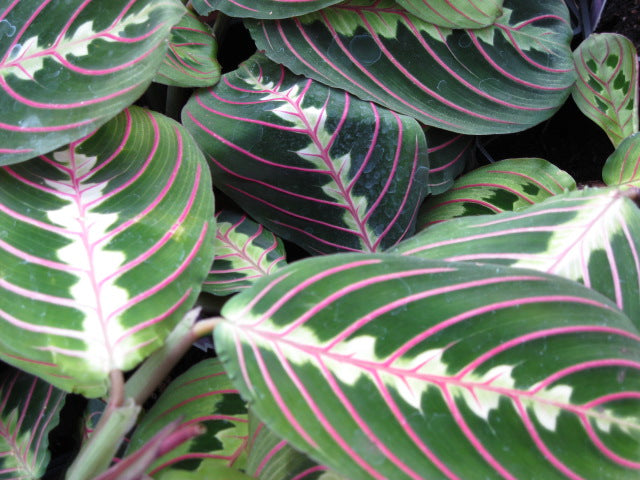
Prayer Plant - Green or Red Leaf Types (Maranta varieties)
Light Preference:
Medium
Water Needs:
Prefers moist (not soggy) soil but be sure to water less in winter. Misting is beneficial.
Notes:
Marantas are low growing, tabletop plants. They get their name because they fold and raise their leaves at night. They are closely related to Calatheas, but are easier to grow in Colorado's dry climate. Avoid cold drafty spots. Since they enjoy high humidity and stay relatively small, they make nice
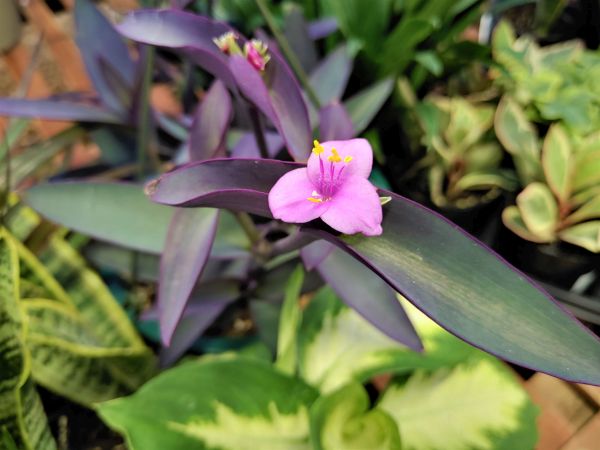
Purple Heart Plant (Setcresea purpurea syn. Tradescantia pallida)
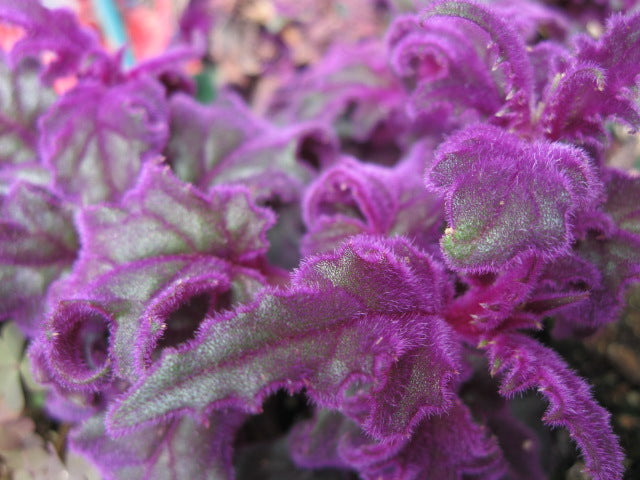
Purple Passion Plant (Gynura sarmentosa)
Light Preference:
Bright Indirect or Bright Direct
Water Needs:
Prefers moist soil much of the year. Water sparingly in winter.
Notes:
The striking deep purple leaves on this plant is covered by shiny purple hairs. It grows quickly and trails.
It produces orange flowers, but, clip them off because their scent is not enjoyed by most.
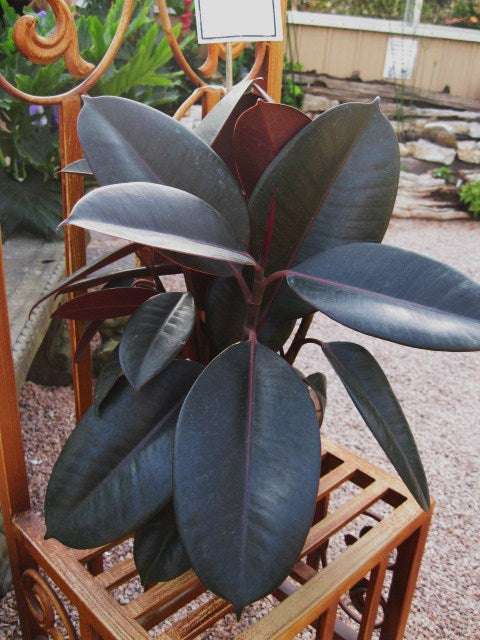
Rubber Plant (Ficus elastica)
Light Preference:
Medium to Bright Indirect
Water Needs:
Allow soil to go lightly dry between waterings. Water less in winter. Avoid soggy soil
Notes:
Upright growth with oval fleshy leaves. An easy care plant. Tabletop when young, floor plant when older.
Variations: ‘Tricolor’ has variegated leaves with a pink flush. Burgundy has deep maroon leaves.
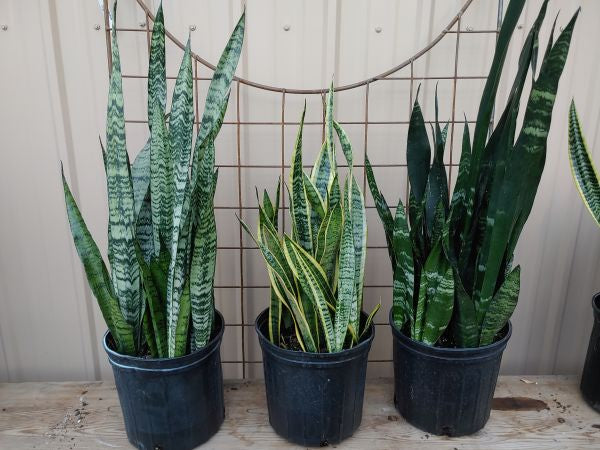
Sansevieria (Sansevieria trifasciata)
Light Preference:
Low, Medium, Bright Indirect or Bright Direct for a portion of the day
Water Needs:
Allow soil to become lightly dry between waterings. Water sparingly in winter.
Notes:
Want a super easy care plant? This one is for you! Nearly indestructible upright sword-like foliage comes in a variety of
colors and patterns. Overwatering or letting it sit in water is about the only way you can go wrong.
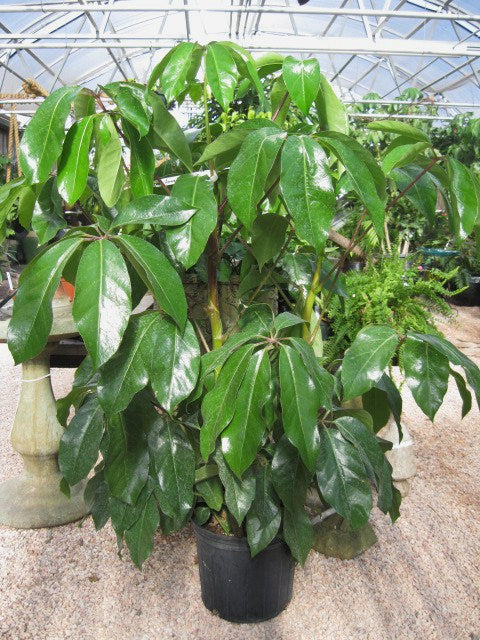
Schefflera, Big Leaf Types (Schefflera actinophylla)
Light Preference:
Bright Indirect
Water Needs:
Allow surface to go lightly dry between waterings. Water less in winter. Avoid soggy soil.
Notes:
Upright bushy growth on glossy green leaves. Will become 6-8ft tall indoors.
Variations:
Amate: bush form with a 3’-4’ width
Renegade: narrow columnar form
Amate Soleil: lemon lime leaves, bush
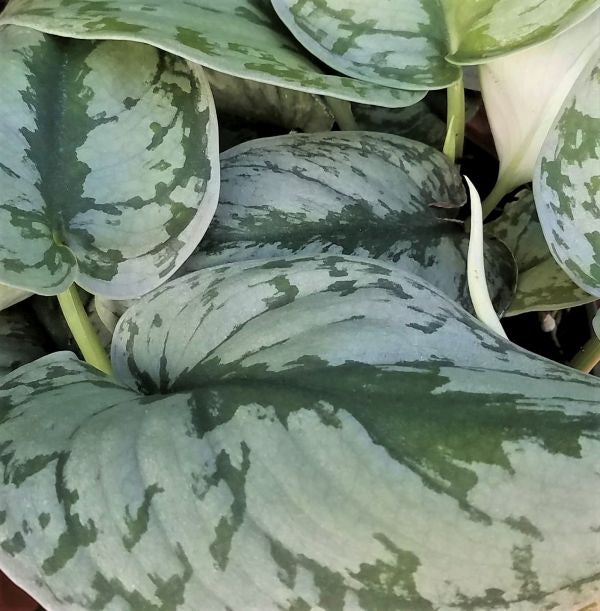
Scindapsus Varieties
Light Preference:
Medium, Bright Indirect
Water Needs:
Allow soil to go lightly dry between waterings. Water less in winter. Will not tolerate soggy soil. Cue: Wait to water until the leaves start to curl slightly. Once your eyes are trained for this, water just before they curl.
Notes:
There are multiple varieties of silver Scindapsus. Lovely leaves have a metallic sheen. Vining habit, can be trained up a moss pole or used as a hanging plant or trailing tabletop type. Pinch tips to keep bushy. Repot, gradually, and infrequently. This is best done during periods of active growth. Prefers warm temps (min. 60 deg). Does not bounce back easily from overwatering, so it is best to add some aeration (such as perlite) to a light potting mix. Repot infrequently to the next size pot and only when the roots are congested. Humidity is a plus but not required.
Varieties with larger leaves: Silver Satin, Silver Splash, Jade Satin
Varieties with smaller leaves: Pictus, Silvery Ann
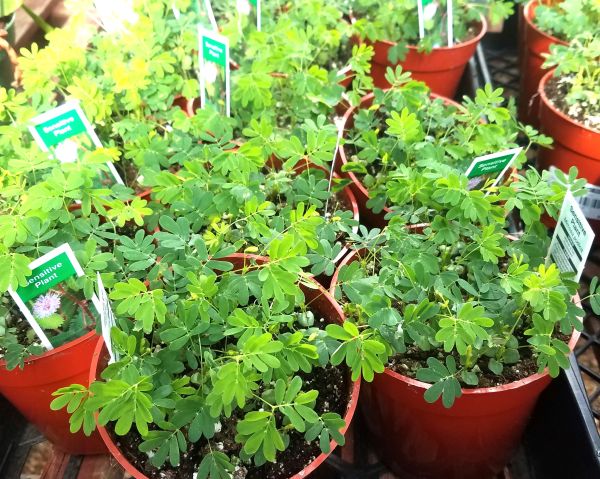
Sensitive Plant(Mimosa pudica)
Light Preference:
Bright Direct (ok to supplement with grow lights too)
Water Needs:
Lightly moist
Notes:
The leaflets on this unique plant will close up with too much disturbance from wind , water or touch. It is thought to be a startling defensive measure to keep animals from eating them. Humidity is a plus. Since our air is dry, it is easiest to grow them in a good-sized open top glass globe or terrarium where air will stay humid. Just make sure the roots don’t get soggy. Grow in your sunniest South or West facing window. In ideal conditions, it will produce a pink powderpuff flower and develop thorns over time.
Fun fact: Related to peas, they are nitrogen fixers as well. Able to take nitrogen from the air and transfer to soil for root use. Grow in light soil with extra perlite for faster draining.
ONLY AVAILABLE IN SUMMER
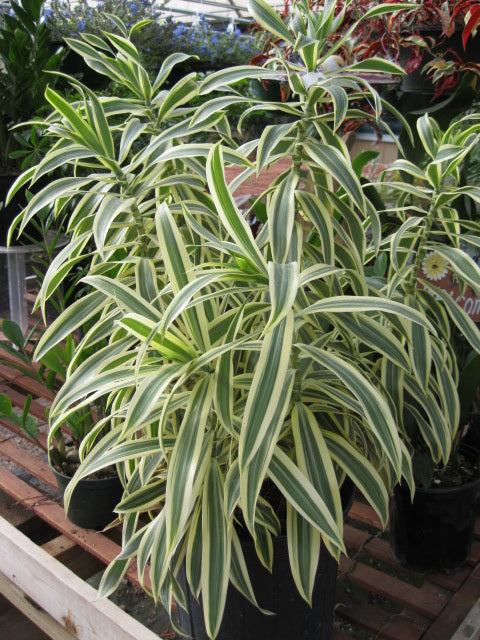
Song of India (Dracaena reflexa syn. Pleomele reflexa)
Light Preference:
Bright Indirect
Water Needs:
Prefers moist soil. Reduce water in winter so that the surface dries, but don’t let compost completely dry out. Misting is beneficial. Avoid boggy soil.
Notes:
Bright yellow leaves offer a cheerful and unique accent. An upright bush that becomes woody with age. Slow growing. Eventual size is up to 8ft tall by 4 foot wide.
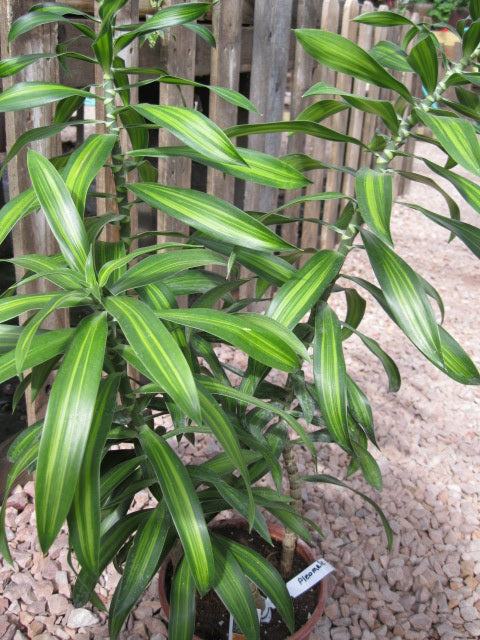
Song of Jamaica (Dracaena reflexa syn. Pleomele reflexa)
Light Preference:
Bright Indirect
Water Needs:
Prefers moist soil. Reduce water in winter so that the surface dries, but don’t let compost completely dry out. Misting is beneficial. Avoid boggy soil.
Notes:
A cousin to the yellow Song of India..this plant has striped leaves in various shades of green. An upright bush that becomes woody with age. Slow growing. Eventual size is up to 8ft tall by 4 foot wide.
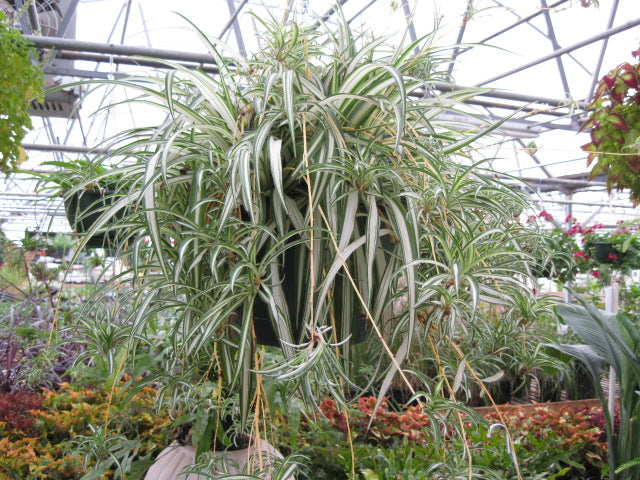
Spider Plant (Chlorophytum comosum vittatum)
Light Preference:
Low, Medium or Bright Indirect
Water Needs:
Much of the year, water when soil surface is lightly dry. Water sparingly in winter.
Notes:
Very easy and adaptable houseplant. Quick growing with attractive arching leaves. Long stalks bear plantlets that are easily rooted. Useful as a hanging or tabletop plant.
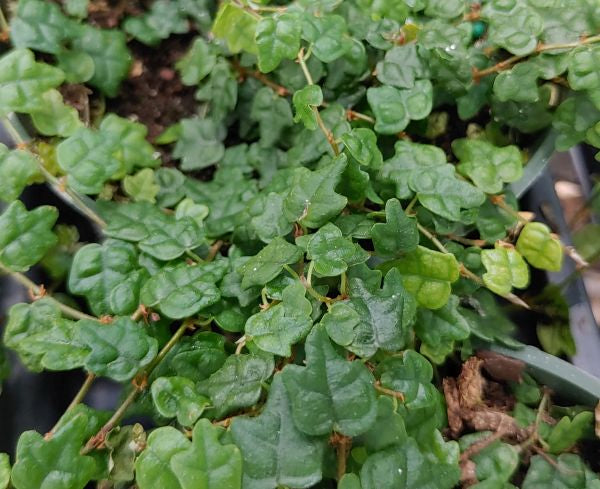
String of Frogs a.k.a Oak Leaf Ficus(Ficus pumila ‘Quercifolia’)
Light Preference:
Bright Indirect
Water Needs:
Lightly moist, but never boggy
Notes:
This miniature vining ficus sports small leaves that look like little frogs or oak leaves. It is often used in terrariums, at home in humid environments as long as its roots are not sitting in water. When grown this way, it will form a dense mat. But, it is equally happy in a pot or hanging basket where it will trail over the sides. As with all ficus, it will get woody over time. Place in light but fast draining soil. Responds well to trimming. Check it a couple of times a week for watering during the growing season so that it doesn’t get too dry. Water when the surface dries.
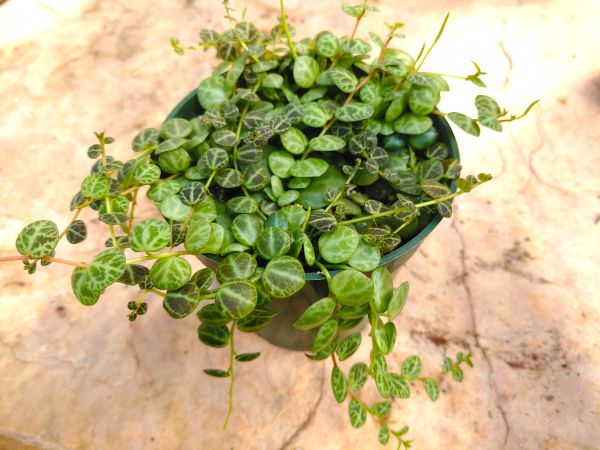
String of Turtles (Peperomia prostrata)
Light Preference:
Bright Indirect to Bright Direct
Water Needs:
Allow to go lightly dry between waterings. Avoid waterlogged soil.
Notes:
This popular trailer is a Peperomia with all the easy care traits of that group of plants. It will like a lot of light. If the light is too low it will get thin and the “turtle” leaves will flatten out. It has succulent leaves so it is ok to allow it to go mostly dry before watering again. Also a must is faster draining soil. Use
potting soil with extra perlite or succulent soil added. It is at home in either medium. It likes to stay tightly potted as well. Display in a pot or hanging basket.

Umbrella Tree (Schefflera arboricola)
Light Preference:
Bright Indirect
Water Needs:
Allow surface to go lightly dry between waterings. Water less in winter. Avoid soggy soil.
Notes:
Very easy and adaptable houseplant. Comes in either a bush or tree form. Foliage options include all green, or a variegated yellow leaf. Tabletop when young, floor plant when older. Plants are easily pruned to control size and shape.
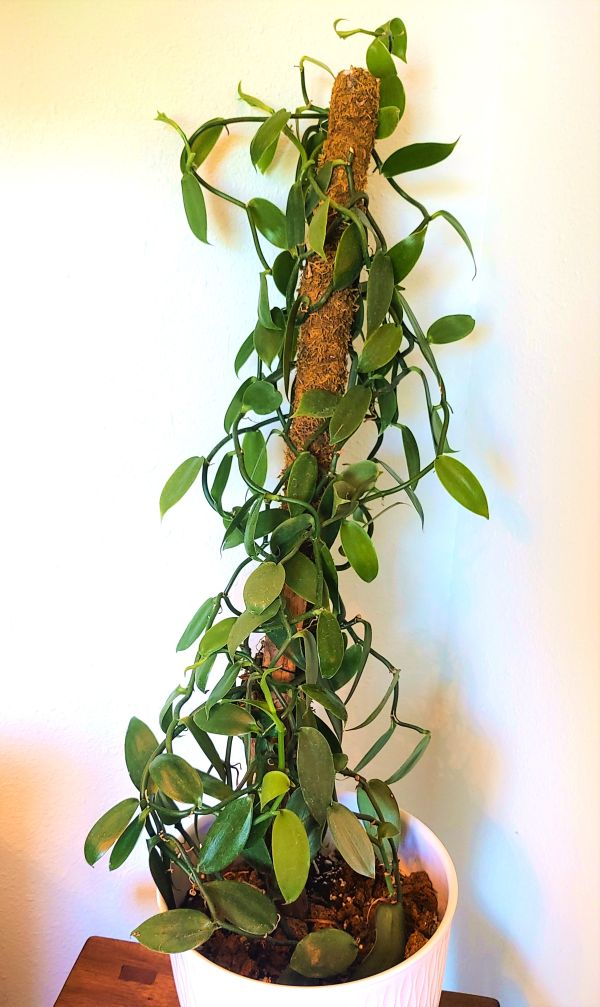
Vanilla Orchid (Vanilla planifolia)
Light Preference:
Bright Indirect or some Mild Direct
Water Needs:
Allow soil to go dry between waterings. Mist frequently. Avoid waterlogged soil!!!
Notes:
This vine is famous for providing vanilla beans! Though it is not likely to do this in your home, it is a beautiful plant.
Pro-tips: Pot in a mix of 50% light potting soil to 50% perlite. Mist the plant anytime you want to keep the aerial roots happy - but at least 1x/week. Helps to grow up a moss pole. Water very infrequently as it is very prone to rot with too much moisture in the soil. If this happens, just cut off the rot and re-root in the above mix. Humidity is a plus, but misting works perfectly fine too.
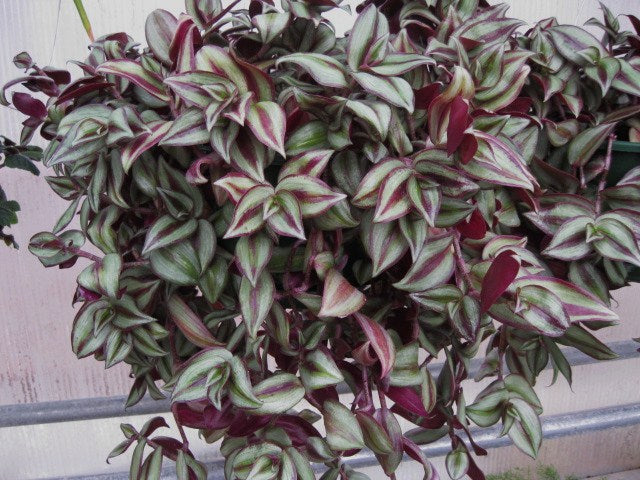
Wandering Dude (Tradescantia)
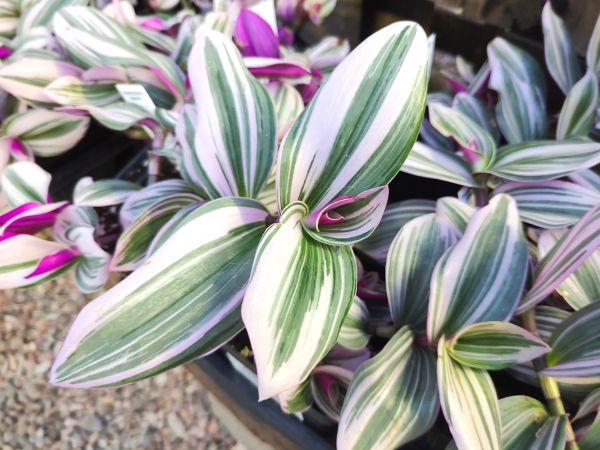
Wandering Dude 'Nanouk' (Tradescantia)
Light Preference:
Bright Indirect
Water Needs:
Allow soil to go lightly dry between waterings. Water sparingly in winter.
Notes:
A newer hybrid with a more compact trail-ing habit, larger leaves, and glowing laven-der/white coloration. An easy care plant that has become a popular choice. Pinch ends to keep the plant bushy.
Tip: If your leaves brown on the edges and you are following the proper care for water and light, it may need more space. Check your roots to see if you need to pot up to the next size pot OR remove bottom 1/3 of soil and refresh. Can grow quickly in good conditions.
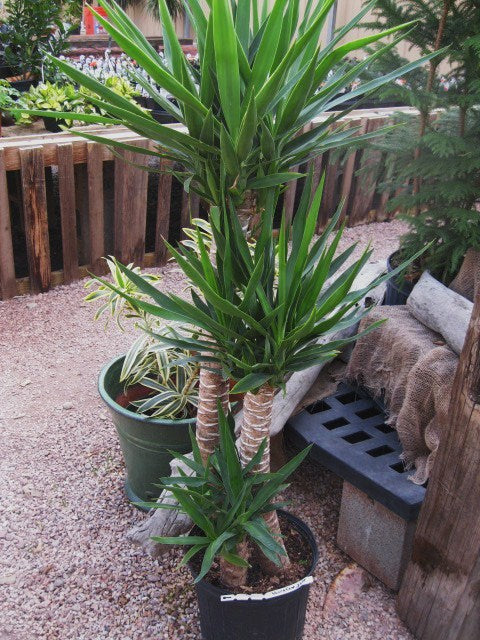
Yucca Cane (Yucca elephantipes)
Light Preference:
Bright Indirect or Bright Direct
Water Needs:
Most of the year, water when surface is lightly dry. Water sparingly in winter.
Notes:
A striking, structural plant that offers height without being wide. Phelan’s sells multi-cane specimen floor plants. Smaller plants bear woody canes with plants that are 3’ tall. A larger option is 5’ tall. Cane yucca is top heavy with pointy tips, so make sure you have a heavy pot to slip it into to stabilize it. Provide good drainage.
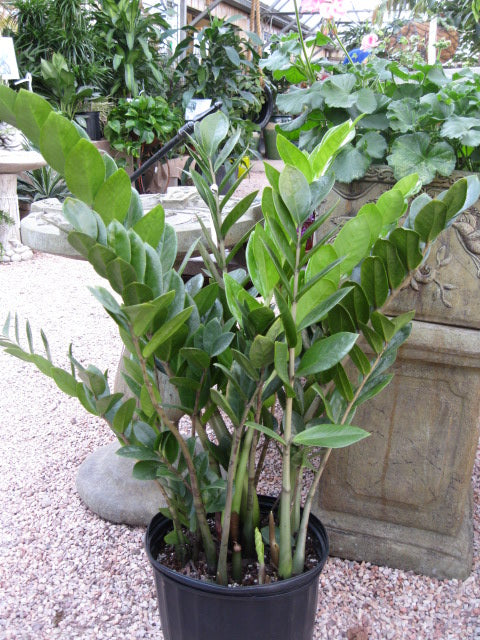
“ZZ” Plant (Zamioculcas zamiifolia)
Light Preference:
Low, Medium or Bright Indirect
Water Needs:
Allow soil to dry completely between waterings. Never allow roots to sit in water.
Notes:
Got a brown thumb? This qualifies as one of our easiest houseplants. Requires little water, is slow growing, and needs infrequent repotting. It also adapts to almost any light type. Leaves are fleshy and naturally glossy. New growth is upright and will eventually arch outward.
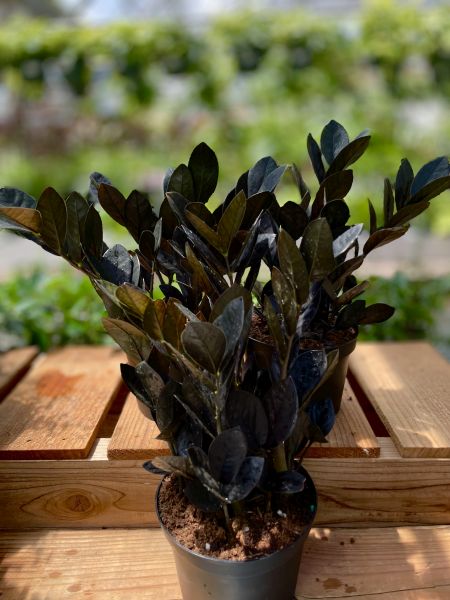
ZZ ‘Raven’ (Zamioculcas)
Light Preference:
Low, Medium to Bright Indirect
Water Needs:
Allow it to go fully dry between waterings. Water less in Winter. Avoid waterlogged soil.
Notes:
Light green new growth deepens to a deep dark black leaf. This patented mutation of the all green version offers super easy care. Perfect for beginners. A slow grower that will develop an upright, arching shape over time. Can reach 3’-4’ at maturity. Provide fast draining soil, repot infrequently and grow tight in a pot. Stores water in the roots, so let it dry out.
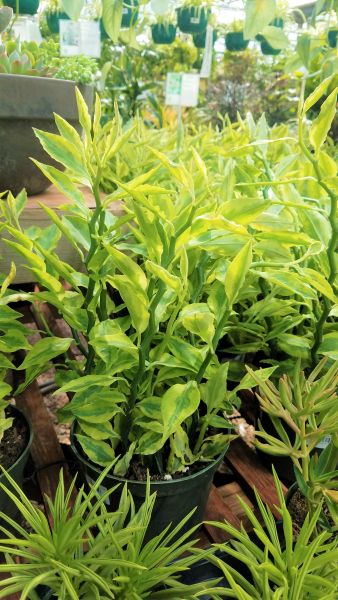
Zig Zag Plant a.k.a. Devil’s Backbone (Euphorbia tithymaloides Formerly Pedilanthes tithymaloides)
Light Preference:
Very Bright Indirect to Bright Direct
Water Needs:
Allow to go lightly dry between waterings Avoid waterlogged soil.
Notes:
This beautiful plant comes in both green and variegated forms. Both have the signature crooked stems and an upright growth habit. These will go through more water than a typical succulent. Though they like to approach dryness, give them a good soak when ready. If they are kept continually dry, they will drop their leaves and can develop powdery mildew. Provide light and well draining soil to avoid rot (potting soil with added perlite works well.) Cooler temps will give it a pink tinge.
Flowering and Seasonal Plants
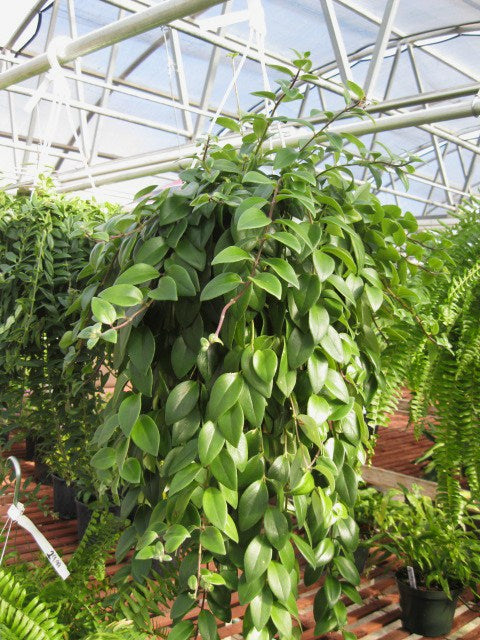
Lipstick Plant varieties (Aeschynanthus varieties)
Light Preference:
Will tolerate Medium but vines stay fuller and blooms best in Bright Indirect
Water Needs:
Root ball can go lightly dry between waterings. Avoid waterlogging.
Notes: There are many varieties of this attractive trailing plant. Flowers are typically red (sometimes orange) and emerge from a dark sheath as if the flower is being twisted from a lipstick tube. Potential to bloom all year even in Winter. Humidity in summer (misting is beneficial but not necessary) and a rest period in Winter seem to be key for extra blooms. Trailing, glossy succulent leaves are pretty even when the plant is not in bloom. Easy care, great for beginners!
Cacti & Succulents for Indoor Growing
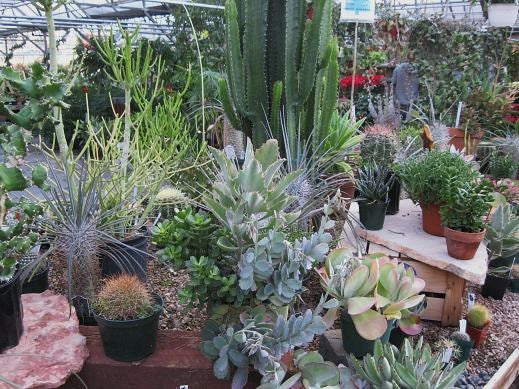
Cacti & Succulents
Succulents are very trendy right now. They offer easy care and a load of color and texture. They are striking both as single varieties and when blended into a garden with mixed varieties.
Cactus lovers...we've got you covered. Phelan's has a good assortment of starter cacti in 3"-6" pots as well as a few larger specimens.
Our pre-potted combo gardens are also popular with customers. If you'd like to design your own, we have a wonderful cactus soil for purchase.
Our in-stock cacti and succulents will vary throughout the year. We've included a sample of a few varieties below. Types that we offer on a regular basis include:
String of Pearls * Donkey's Tail * Jade varieties * Echeveria varieties * Kalanchoe foliage & floral types * Crown of Thorns * Pencil Cactus * Euphorbia varieties * Hawarthia varieties * Prickly Pear varieties *Aloe Vera & Decorative Aloe varieties
